social graph
description: a representation of the interconnections among individuals within a network
122 results
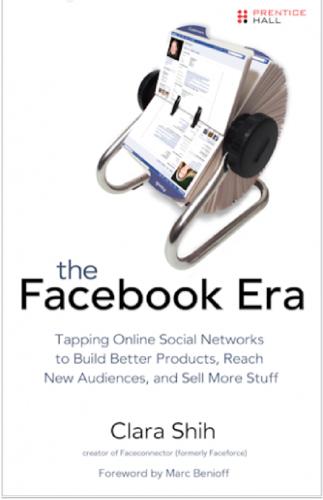
The Facebook era: tapping online social networks to build better products, reach new audiences, and sell more stuff
by
Clara Shih
Published 30 Apr 2009
Annoying floating banners that are irrelevant to us block the screen showing the online article we are trying to read. But all hope is not lost. With the online social graph, there might be an opportunity for the first time to align what publishers and advertisers want to show with what users want to see (see Figure 2.1). From the Library of Kerri Ross 30 Pa r t I A B r i e f H i s to r y o f S o c i a l M e d i a Amount of Noise HIGH LOW Distribution Capacity Social Graph Media Internet Media HIGH PC Media LOW Traditional (Nondigital) Media Figure 2.1 Prior to the social graph, greater distribution resulted in more junk. With the social graph, we can use our friends as filters for finding the right content and data at the right time.
…
It is precisely in weak ties where Facebook, Twitter, and other social networking services excel. Welcome to the Facebook Era We are witnessing a historic movement around the online social graph—that is, the map of every person on the Internet and how they are connected. It is the World Wide Web of people, a reflection and extension of the offline social graph—the friends, family members, colleagues, mentors, classmates, neighbors, and acquaintances who are important to us, who help shape us, and for whom we live. The online social graph empowers us to be better, more effective, more efficient, and more fulfilled doing what is inherent to our nature—communicating who we are, and transacting and interacting with others across the Web.
…
In the 1990s, it was the Internet. And today, it is the online social graph (see Figure 1.1). A Mainframe 1970s PC C 1980s Internet 1990s Social Networking Today Figure 1.1 Every decade since the advent of computing, a new wave of technology sweeps across the business landscape. But what exactly is the online social graph? Well, it is the World Wide Web of people—a map being constructed by social networking sites, such as Facebook, LinkedIn, and Hoover’s Connect, of every person on the Internet and how they are interlinked. The social graph is for people what the World Wide Web is for hyperlinked Web pages: that is, for organizing, filtering, and association.

The Hype Machine: How Social Media Disrupts Our Elections, Our Economy, and Our Health--And How We Must Adapt
by
Sinan Aral
Published 14 Sep 2020
When consumers on one network can easily connect with consumers on another network, the value from network effects is diminished and competition is enhanced, giving more opportunity to new entrants and stripping away power from incumbents. The idea behind social graph portability is that consumers would own their social graphs. When they switched to a new social networking service, their connections and their friends’ identities could be transferred to facilitate exchanges on the new network as well as across networks. That said, a number of technical difficulties arise when you attempt to apply the logic of telephone number portability to social graph portability. First, social graphs and phone numbers are different. A social graph is a complex web of interconnections over which property rights are difficult to assign.
…
Defining the property right at the level of the graph makes its management complex and, in a dynamic environment in which social graph connections change, difficult to maintain over time. Joshua Gans, at the University of Toronto, has proposed a variant of social graph portability to deal with these complexities. Rather than assigning consumers the right to their social graphs, he argues that rights should be assigned at the level of identities and coupled with permissions that delineate how consumers want their messages routed across networks. Rather than social graph portability, Gans calls this “identity portability.” The idea is that consumers would own their identities and could freely switch from one network to another with permissions outlining who they would exchange messages with across the networks.
…
But before I get to the process by which the Hype Machine’s intelligence directs the evolution of the network and the flow of information through it, it’s worthwhile to examine the structure of the Hype Machine’s digital network in more detail. The Hype Machine’s Social Graph Facebook studied its social graph in 2011. My friends and colleagues Johan Ugander, Brian Karrer, Lars Backstrom, and Cameron Marlow, who all worked at Facebook at the time (Brian and Lars still do), wrote a paper they called “The Anatomy of the Facebook Social Graph,” in which they studied “the entire social network of active members of Facebook in May 2011, a network then comprised of 721 million active users.” It was (and probably still is) “the largest social network ever analyzed.”
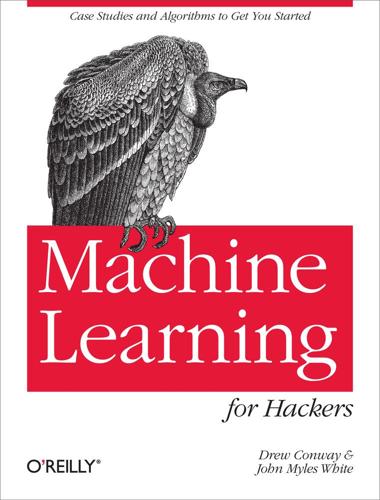
Machine Learning for Hackers
by
Drew Conway
and
John Myles White
Published 10 Feb 2012
q=@EMAIL_ADDRESS&fme=1&pretty=1 If you replace the EMAIL_ADDRESS with a proper address, the API will return raw JSON to the browser window, which you can explore to see how much of your social graph Google is already storing! If you have a Twitter account registered to the email address you entered, you will likely also notice that your Twitter page’s URL shows up as one of the social graph services that resolves to the email address. Twitter is one of the many social networking sites the SGA crawls to store public social graph data. Therefore, we can use the SGA to query the social network of a specific user and then build out the network. The primary advantage of using the SGA is that unlike the pittance of hourly queries that Twitter provides, the SGA allows 50,000 queries per day.
…
Finally, because this book is about machine learning, we will build our own “who to follow” recommendation engine using the structure of Twitter’s social graph. We will try to avoid using jargon or niche academic terms to describe what we are doing here. There are, however, some terms that are worth using and learning for the purposes of this chapter. We have just introduced the term ego-network to describe a type of graph. As we will be referring to ego-networks many more times going forward, it will be useful to define this term. An ego-network always refers to the structure of a social graph immediately surrounding a single node in a network. Specifically, an ego-network is the subset of a network induced by a seed (or ego) and its neighbors, i.e., those nodes directly connected to the seed.
…
These labels could be weights indicating the strength or type of a relationship. It is important to consider the differences among these different graph types because the social graph data we will encounter online comes in many different forms. Variation in how the graphs are structured can affect how people use the service and, consequently, how we might analyze the data. Consider two popular social networking sites that vary in the class of graphs they use: Facebook and Twitter. Facebook is a massive, undirected social graph. Because “friending” requires approval, all edges imply a mutual friendship. This has caused Facebook to evolve as a relatively more closed network with dense local network structures rather than the massive central hubs of a more open service.
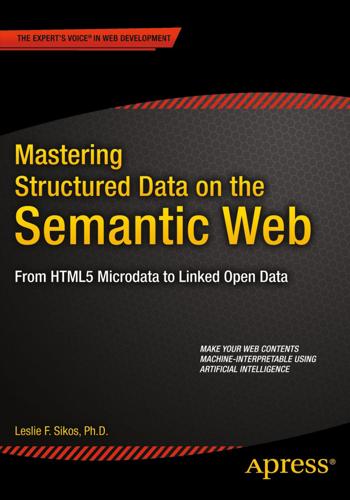
Mastering Structured Data on the Semantic Web: From HTML5 Microdata to Linked Open Data
by
Leslie Sikos
Published 10 Jul 2015
Social Media Applications Excellent examples for Big Data implementations on the Semantic Web are the social media graphs, such as the Facebook Social Graph, the Twitter Interest Graph, the Twitter Follow Graph, the LinkedIn Professional Graph, or the LinkedIn Economic Graph. 205 Chapter 8 ■ Big Data Applications Facebook Social Graph The Facebook Social Graph is the largest social graph in the world, containing tens of petabytes of structured data about approximately 1 billion users. Because every object is a graph node, and every relationship is a graph edge on the Facebook Social Graph (see Figure 8-4), any object can easily be accessed directly in the browser as a user and programmatically from Facebook apps.
…
Because every object is a graph node, and every relationship is a graph edge on the Facebook Social Graph (see Figure 8-4), any object can easily be accessed directly in the browser as a user and programmatically from Facebook apps. Figure 8-4. On the Facebook Social Graph, every object is a node and every connection is an edge In fact, the easy access of this vast user data is exploited well beyond Facebook, as the social connections and links of the Facebook Social Graph are also used by other social networking portals, such as Pinterest and Last.fm (social bootstrapping). Have you ever wondered how Facebook recommends friends? Using the edges of the Facebook Social Graph, it is straightforward to identify those people who have at least one friend in common (see Figure 8-5). 206 Chapter 8 ■ Big Data Applications Figure 8-5.
…
In other words, the Graph API makes it possible to programmatically access user objects and connections from the Facebook Social Graph, which can be used for Facebook apps. The Graph API can not only query data but also post new stories, publish Open Graph stories, read information about a Facebook user, upload photos, update information in the Social Graph, and perform similar tasks used by Facebook apps. All the objects of the Facebook Social Graph (users, photo albums, photos, status messages, pages, etc.) have a unique identifier, which is a positive integer and makes it possible to refer to any node or edge. Originally, the Graph API provided data to applications exclusively in JSON.

Designing Social Interfaces
by
Christian Crumlish
and
Erin Malone
Published 30 Sep 2009
Providing easy mechanisms for finding people and building their networks will encourage repeat use and prevent social-networking burnout. Portable Social Graph The easiest way to create a network upon joining a new site would be to bring your network with you. Although there are some contexts that may be very specialized and need only a small subset of people a user knows—for example, a fantasy sports site—for the most part, many current and future social sites are generalized enough that the network the user built on site A will be the same network of connections she wants on site B. The social graph, the network of people the user has built around herself (Figure 14-8), wants to be portable.
…
The idea is to create a data standard that allows users to easily bring their network from one site to another without all the work involved in finding people and adding them into the network at each site. ——continued Download at WoweBook.Com 360 Chapter 14: One of Us, One of Us Portable Social Graph Figure 14-8. The author’s social graph on Facebook as visualized by TouchGraph. The logistics are far from resolved, but as new sites are being developed, being aware of this initiative and designing new sites and using data structures that play nice will encourage interplay between sites and help the users out in the long run.
…
The problem with using social media as a generic term for the entire Internet-enabled social context is that the word “media,” already slippery (does it refer to works of creation, or to finding relevant news/media items, or to public chatter and commentary, or all of these things?), starts to add nothing to the phrase, and doesn’t really address the social graph. Most recently, we’ve seen a proliferation of social media marketing experts and gurus online, and their messages range from the sublime (that marketing can truly be turned inside out as a form of customer service, through Cluetrainful engagement* with customers, i.e., treating them as human beings through ordinary conversations and public responsiveness), to the mundane (as in the early days of the Internet, every local market has its village explainers), to the ridiculous (a glorified version of spam).
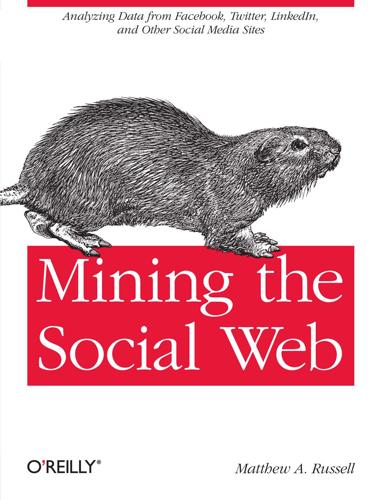
Mining the Social Web: Finding Needles in the Social Haystack
by
Matthew A. Russell
Published 15 Jan 2011
Let’s whip up a simple script for harvesting XFN data similar to the service offered by rubhub, a social search engine that crawls and indexes a large number of websites using XFN. You might also want to check out one of the many online XFN tools if you want to explore the full specification before moving on to the next section. A Breadth-First Crawl of XFN Data Let’s get social by mining some XFN data and building out a social graph from it. Given that XFN can be embedded into any conceivable web page, the bad news is that we’re about to do some web scraping. The good news, however, is that it’s probably the most trivial web scraping you’ll ever do, and the BeautifulSoup package absolutely minimizes the burden. The code in Example 2-2 uses Ajaxian, a popular blog about modern-day web development, as the basis of the graph.
…
Sample output follows: Dion Almaer http://www.almaer.com/blog/ [u'me'] Ben Galbraith http://weblogs.java.net/blog/javaben/ [u'co-worker'] Rey Bango http://reybango.com/ [u'friend'] Michael Mahemoff http://softwareas.com/ [u'friend'] Chris Cornutt http://blog.phpdeveloper.org/ [u'friend'] Rob Sanheim http://www.robsanheim.com/ [u'friend'] Dietrich Kappe http://blogs.pathf.com/agileajax/ [u'friend'] Chris Heilmann http://wait-till-i.com/ [u'friend'] Brad Neuberg http://codinginparadise.org/about/ [u'friend'] Assuming that the URL for each friend includes XFN or other useful information, it’s straightforward enough to follow the links and build out more social graph information in a systematic way. That approach is exactly what the next code example does: it builds out a graph in a breadth-first manner, which is to say that it does something like what is described in Example 2-3 in pseudocode. Example 2-3. Pseudocode for a breadth-first search Create an empty graph Create an empty queue to keep track of nodes that need to be processed Add the starting point to the graph as the root node Add the root node to a queue for processing Repeat until some maximum depth is reached or the queue is empty: Remove a node from the queue For each of the node's neighbors: If the neighbor hasn't already been processed: Add it to the queue Add it to the graph Create an edge in the graph that connects the node and its neighbor Note that this approach to building out a graph has the advantage of naturally creating edges between nodes in both directions, if such edges exist, without any additional bookkeeping required.
…
For example, if Matthew is referenced in one hyperlink with the URL http://example.com/~matthew but as http://www.example.com/~matthew in another URL, those two nodes will remain distinct in the graph even though they most likely point to the same resource on the Web. Fortunately, XFN defines a special rel="me" value that can be used for identity consolidation. Google’s Social Graph API takes this very approach to connect a user’s various profiles, and there exist many examples of services that use rel="me" to allow users to connect profiles across multiple external sites. Another (much lesser) issue in resolving URLs is the use or omission of a trailing slash at the end.

The Filter Bubble: What the Internet Is Hiding From You
by
Eli Pariser
Published 11 May 2011
But stereotypes and the negative consequences that flow from them aren’t fair to specific people even if they’re generally pretty accurate. Marketers are already exploring the gray area between what can be predicted and what predictions are fair. According to Charlie Stryker, an old hand in the behavioral targeting industry who spoke at the Social Graph Symposium, the U.S. Army has had terrific success using social-graph data to recruit for the military—after all, if six of your Facebook buddies have enlisted, it’s likely that you would consider doing so too. Drawing inferences based on what people like you or people linked to you do is pretty good business. And it’s not just the army.
…
.: How We Got from the Company Man, Family Dinners, and the Affluent Society to the Home Office, BlackBerry Moms, and Economic Anxiety (New York: Pantheon, 2008), 164. 130 “Model-T version of what’s possible”: Geoff Duncan, “Netflix Offers $1Mln for Good Movie Picks,” Digital Trends, Oct. 2, 2006, accessed Dec. 15, 2010, www.digitaltrends.com/computing/netflix-offers-1-mln-for-good-movie-picks. 130 “a PC and some great insight”: Katie Hafner, “And If You Liked the Movie, a Netflix Contest May Reward You Handsomely,” New York Times, Oct. 2, 2006, accessed Dec. 15, 2010, www.nytimes.com/2006/10/02/technology/02netflix.html. 131 success using social-graph data: Charlie Stryler, Marketing Panel at 2010 Social Graph Symposium, Microsoft Campus, Mountain View, CA, May 21, 2010. 132 “the creditworthiness of your friends”: Julia Angwin, “Web’s New Gold Mine,” Wall Street Journal, July 30, 2010, accessed on Feb. 7, 2011, http://online.wsj.com/article/SB10001424052748703940904575395073512989404.html. 133 reality doesn’t work that way: David Hume, An Enquiry Concerning Human Understanding, Harvard Classics, volume 37, Section VII, Part I, online edition, (P.
…
PayPal PeekYou persuasion profiling Phantom Public, The (Lippmann) Philby, Kim Phorm Piaget, Jean Picasa Picasso, Pablo PK List Management Plato politics electoral districts and partisans and programmers and voting Popper, Karl postmaterialism predictions present bias priming effect privacy Facebook and facial recognition and genetic Procter & Gamble product recommendations Proulx, Travis Pulitzer, Joseph push technology and pull technology Putnam, Robert Qiang, Xiao Rapleaf Rather, Dan Raz, Guy reality augmented Reality Hunger (Shields) Reddit Rendon, John Republic.com (Sunstein) retargeting RFID chips robots Rodriguez de Montalvo, Garci Rolling Stone Roombas Rotenberg, Marc Rothstein, Mark Rove, Karl Royal Caribbean Rubel, Steve Rubicon Project Rumsfeld, Donald Rushkoff, Douglas Salam, Reihan Sandberg, Sheryl schemata Schmidt, Eric Schudson, Michael Schulz, Kathryn science Scientific American Scorpion sentiment analysis Sentry serendipity Shields, David Shirky, Clay Siegel, Lee signals click Simonton, Dean Singhal, Amit Sleepwalkers, The (Koestler) smart devices Smith, J. Walker social capital social graph Social Graph Symposium Social Network, The Solove, Daniel solution horizon Startup School Steitz, Mark stereotyping Stewart, Neal Stryker, Charlie Sullivan, Danny Sunstein, Cass systematization Taleb, Nassim Nicholas Tapestry TargusInfo Taylor, Bret technodeterminism technology television advertising on mean world syndrome and Tetlock, Philip Thiel, Peter This American Life Thompson, Clive Time Tocqueville, Alexis de Torvalds, Linus town hall meetings traffic transparency Trotsky, Leon Turner, Fred Twitter Facebook compared with Últimas Noticias Unabomber uncanny valley Upshot Vaidhyanathan, Siva video games Wales, Jimmy Wall Street Journal Walmart Washington Post Web site morphing Westen, Drew Where Good Ideas Come From (Johnson) Whole Earth Catalog WikiLeaks Wikipedia Winer, Dave Winner, Langdon Winograd, Terry Wired Wiseman, Richard Woolworth, Andy Wright, David Wu, Tim Yahoo News Upshot Y Combinator Yeager, Sam Yelp You Tube LeanBack Zittrain, Jonathan Zuckerberg, Mark Table of Contents Title Page Copyright Page Dedication Introduction Chapter 1 - The Race for Relevance Chapter 2 - The User Is the Content Chapter 3 - The Adderall Society Chapter 4 - The You Loop Chapter 5 - The Public Is Irrelevant Chapter 6 - Hello, World!
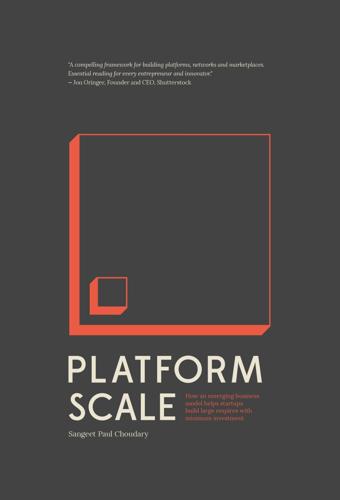
Platform Scale: How an Emerging Business Model Helps Startups Build Large Empires With Minimum Investment
by
Sangeet Paul Choudary
Published 14 Sep 2015
First, the rise of the social graph allows users to port their personal networks between different platforms. A new platform, like Instagram, can leverage the single sign-on enabled by the social graph to build an alternate network of users rapidly. Second, mobile-based access allows users to switch easily and rapidly between different apps multiple times a day. This allows multihoming at a scale that was once unimaginable. Drivers today use Uber, Lyft, and a host of other apps simultaneously and switch between them several times a day. The convenience of the social graph, coupled with the ease of switching between platforms, has eroded the lock-in that once kept users bound to a network.
…
Amazon’s “People who purchased this product also purchased this product” feature is based on a collaborative filter. Many recommendation platforms allow users to filter results based on a “people like you” parameter. This, again, is a collaborative filter. The most important innovation in recent times that has led to the spread of collaborative filters is the implementation of Facebook’s social graph. Through the social graph, third-party platforms like TripAdvisor serve reviews based on a collaborative filter of people who are close to you on the graph. Finally, it is important to note that the network itself is a filter. Who you follow determines what you consume. On Twitter, who you follow is the critical filter.
…
The 7c’s of trust – Confirmed Identity, Centralized Moderation, Community Feedback, Codified Behavior, Culture, Completeness, Cover – explored in this chapter, are a set of themes that platform creators may use to build trust on platforms. CONFIRMED IDENTITY Identity can be used to help build trust. The rise of Facebook’s social graph helped create real identity on the Internet, at least compared to the anonymity that was involved in much Internet participation prior to that. Today, Lyft riders link their accounts to their Facebook profiles. Tinder and a whole range of other social platforms require users to sign up through Facebook Connect. The social graph isn’t foolproof, and confirmation of identity may require more for different types of interactions. Airbnb confirms a listing by sending out photographers to a specific apartment.

Terms of Service: Social Media and the Price of Constant Connection
by
Jacob Silverman
Published 17 Mar 2015
Rather, they are authenticating, or verifying, users for the network’s purposes. THE SOCIAL GRAPH AND FRICTIONLESS SHARING The “social graph” is a term popularized by Facebook, and it has spread throughout the industry, coming to stand in for the complex web of relationships we create and maintain, both online and off. You are probably connected to your parents online but also to friends, family, coworkers, strangers you talk to on Twitter, people you buy from on eBay, anonymous interlocutors on message boards, your college friends on Instagram, and so on. The social graph is who you talk to, how often, and what these relationships might say about you.
…
The social graph is who you talk to, how often, and what these relationships might say about you. And in the hands of Google, Facebook, and Twitter, it’s a potential gold mine of data that advertisers love. It’s human life as a clutch of data points, every feeling and expression and relationship recorded, mined, algorithmized. The social graph, however, is only as useful as the data to which it’s connected. And it’s pretty limited if you don’t share very often or if Facebook or Google or Twitter can’t learn what you do when you’re not on their sites. That’s why these companies have led the way in socializing—or surveilling—the entire Web. Each social widget, each Like or +1 button on a Web page, of which there are millions now, acts as a tracking beacon, feeding information back to the company that owns it.
…
For Facebook, she wrote, “the privacy of thought is a problem for tech to overcome.” That’s why Facebook’s status bar doesn’t ask you what’s new; it asks, “What’s on your mind?” That is both a prompt and an explicit statement of intent: to know, whenever possible, what we are thinking and doing. THE SPREAD OF GOOGLE+ Facebook’s promotion of the social graph—and its attendant features, such as Like buttons, third-party apps, and universal log-ins that allow you to use your social-media identity across services—has some competition in Google and its Google+ social network. The two companies are also ideological fellow travelers, with Google+ representing the search company’s own effort to apply a social layer over the Internet and to capture and filter all user behavior through its own social network.

Facebook: The Inside Story
by
Steven Levy
Published 25 Feb 2020
By expediting connections to those people who were on your friend-and-acquaintance radar, Facebook was unlocking a network you already had, keeping you in close touch with people huddled next to you on this virtual constellation, and drawing lines to those who were one, two, three degrees away. “We don’t own the social graph,” Zuckerberg would explain to me later that year, going slow so even a mainstream journalist might understand this dive into network theory. “The social graph is this thing that exists in the world, and it always has and it always will. A lot of people think that maybe Facebook’s a community site, and we think we’re not a community site at all. We’re not defining any communities. All we’re doing is taking this real-world social graph that exists with real people and their real connections, and we’re trying to get as accurate of a picture as possible of how those connections are modeled out.”
…
In the course of brainstorming concepts for his speech, Zuckerberg acquired some of the language that would pepper his explanations of Facebook’s mission for years to come. The most important term was what he called the “social graph.” Though the concept had been batted around for months in late-night discussions—and was pursued as far back as Adam D’Angelo’s Buddy Zoo—that single term seemed to embody what Facebook wanted to unlock for its users. Social graph refers to the nexus of connections people have in the real world. By expediting connections to those people who were on your friend-and-acquaintance radar, Facebook was unlocking a network you already had, keeping you in close touch with people huddled next to you on this virtual constellation, and drawing lines to those who were one, two, three degrees away.
…
All we’re doing is taking this real-world social graph that exists with real people and their real connections, and we’re trying to get as accurate of a picture as possible of how those connections are modeled out.” Once that picture was captured, Facebook and all the other companies on the platform could exploit the social graph to, as Zuckerberg puts it, “build a set of communication utilities that help people share information with all of the people that they’re connected to.” Unsaid was Facebook’s ambition to be the only company that captured the full picture of the social graph. It would be like a search company having exclusive access to the World Wide Web. For weeks, Zuckerberg rehearsed his speech over and over, down to the hand movements and where he would talk on stage.
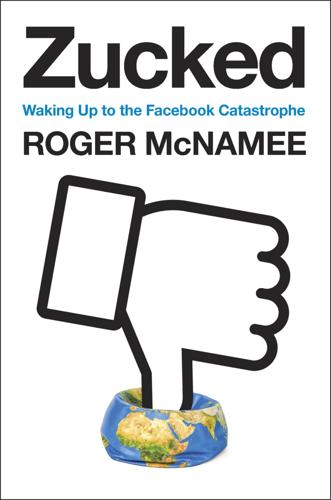
Zucked: Waking Up to the Facebook Catastrophe
by
Roger McNamee
Published 1 Jan 2019
They recognized that success depended on building a network that could scale without friction. Sean Parker described the solution this way in Adam Fisher’s Valley of Genius: “The ‘social graph’ is a math concept from graph theory, but it was a way of trying to explain to people who were kind of academic and mathematically inclined that what we were building was not a product so much as it was a network composed of nodes with a lot of information flowing between those nodes. That’s graph theory. Therefore we’re building a social graph. It was never meant to be talked about publicly.” Perhaps not, but it was brilliant. The notion that a small team in their early twenties with little or no work experience figured it out on the first try is remarkable.
…
Without modification, the costs may be disproportionately burdensome on startups, further enhancing the competitive advantages of the largest companies, but there are ways to compensate for that without undermining a very important new regulation. My feedback to Representative Lofgren recommended modifying her article #4 to allow portability of the entire social graph—the entire friend network—as a way to promote competition from startups. If you want to compete with Facebook today, you have to solve two huge problems: finding users and then persuading them to invest in your platform to reproduce some of what they already have on Facebook. Portability of the social graph—including friends—would reduce the scope of the second problem to manageable levels, even when you factor in the need for permission from every friend.
…
The notion that a small team in their early twenties with little or no work experience figured it out on the first try is remarkable. The founders also had the great insight that real identity would simplify the social graph, reducing each user to a single address. These two ideas would not only help Facebook overcome the performance problems that sank Friendster and MySpace, they would remain core to the company’s success as it grew past two billion users. When I first met Zuck in 2006, I was very familiar with Friendster and MySpace and had a clear sense that Facebook’s design, its insistence on real identity, and user control of privacy would enable the company to succeed where others had failed.
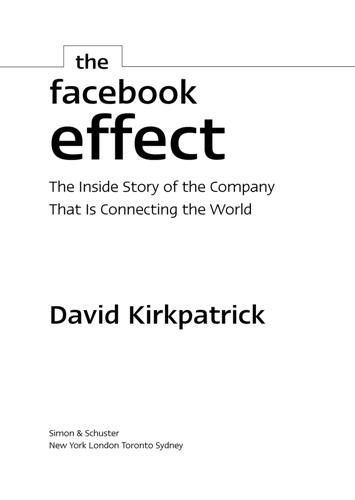
The Facebook Effect
by
David Kirkpatrick
Published 19 Nov 2010
Zuckerberg was beginning to talk about what he would come to label the “social graph,” meaning the web of relationships articulated inside Facebook as the result of users connecting with their friends. With Facebook photos, your friends—your social graph—provided more information, context, and a sense of companionship. But it only worked because the photos were tagged with people’s names and Facebook alerted people when they were tagged. The tags determined how the photos were distributed through the service. “Watching the growth of tagging,” says Cohler, “was the first ‘aha’ for us about how the social graph could be used as a distribution system.
…
“So why were photos and events so good?” he asked. “It was because despite all their shortcomings they had one thing no one else had. And that was integration with the social graph.” This was Facebook’s own conceptual breakthrough, and Zuckerberg was proud of the term he used to describe it. “We did some thinking and we decided that the core value of Facebook is in the set of friend connections,” he continued. “We call that the social graph, in the mathematical sense of a series of nodes and connections. The nodes are the individuals and the connections are the friendships.” Then his enthusiasm veered, it seemed at the time, toward overstatement: “We have the most powerful distribution mechanism that’s been created in a generation.”
…
His certitude was jarring. By “distribution” he meant that by connecting with your friends on Facebook you had assembled a network, this so-called social graph, and it could be employed to distribute any sort of information. If you added a photo, it told your friends. Ditto if you changed your relationship status, or announced that you were heading to Mexico for the weekend. But it could also tell your friends about any action you took using any software to which your social graph was connected. So far, though, the only applications that took advantage of this distribution capability were photos, events, and a few others created by Facebook itself.
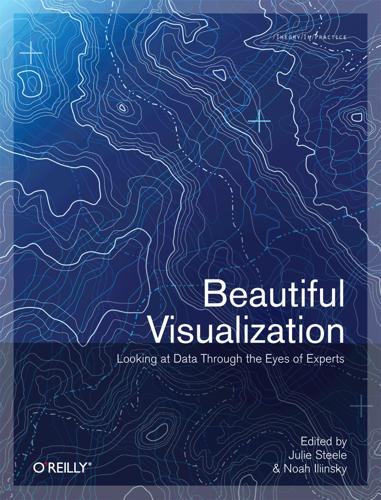
Beautiful Visualization
by
Julie Steele
Published 20 Apr 2010
Often, our simple behaviors and choices can reveal who we are, and whom we are like. Early Social Graphs In the 1930s, a group of sociologists and ethnographers did a small “data mining” experiment. They wanted to derive the social structure of a group of women in a small town in the southern United States. They used public data that appeared in the local newspaper. Their dataset was small: 18 women attending 14 different social events. They wondered: could we figure out the social structure (today we call it a social graph) of this group of women? To this end, they posed the following questions: Who is a friend of whom?
…
Now all women are attached to the network, while the original two-cluster structure remains. Woman #16 is the only one that does not obviously belong to one cluster or the other; she has equal infrequent ties to both clusters. I therefore classify her as a member of neither cluster (not both clusters!) and color her purple. The final emergent social graph is shown in Figure 7-7. Figure 7-7. Emergent social graph of women based on common attendance at social events All 18 women have now been placed in the social network based on their attendance of local social events. This social network reveals a few interesting things about this small town’s social structure: Two distinct social clusters exist.
…
Chapter 6, Flight Patterns: A Deep Dive, by Aaron Koblin with Valdean Klump, visualizes civilian air traffic in the United States and Canada to reveal a method to the madness of air travel. Chapter 7, Your Choices Reveal Who You Are: Mining and Visualizing Social Patterns, by Valdis Krebs, digs into behavioral data to show how the books we buy and the people we associate with reveal clues about our deeper selves. Chapter 8, Visualizing the U.S. Senate Social Graph (1991–2009), by Andrew Odewahn, uses quantitative evidence to evaluate a qualitative story about voting coalitions in the United States Senate. Chapter 9, The Big Picture: Search and Discovery, by Todd Holloway, uses a proximity graphing technique to explore the dynamics of search and discovery as they apply to YELLOWPAGES.COM and the Netflix Prize.
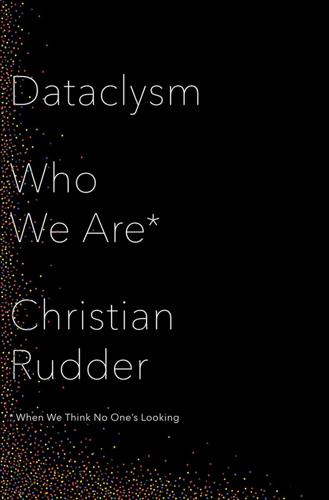
Dataclysm: Who We Are (When We Think No One's Looking)
by
Christian Rudder
Published 8 Sep 2014
We’ve had a look so far at the ways two people come together in the first blush of attraction. I’m not sure a computer will ever capture their path to full togetherness, but we do have a picture of their lives once they get there. That pattern of a couple together, the enmeshing of what’s come to be called their “social graphs,” is now well documented. I have 384 friends on Facebook, and here they are. I’m the dot in the middle; my wife, Reshma, is in black at about three o’clock. Everyone’s connections to everyone else are shown by the gray lines: Though the groups of my friends are nicely clustered, this plot wasn’t arranged by hand—my able research assistant, James Dowdell, wrote special software to create it.
…
Theirs was an application of “the strength of weak ties,” a concept postulated in the 1970s with samples in the dozens, but since amplified on new, robust network data: it tells us that it’s the people you don’t know very well in your life who help ideas, especially new ones, spread.2 Another long-held idea in network theory is “embeddedness.” One of its expressions is the amount of overlap in a pair of social graphs—Reshma’s and my embeddedness is simply how large the red portion of our graph is compared with the whole. Research using a variety of sources (e-mail, IM, telephone) has shown that the more mutual friends two people share, the stronger their relationship. More connections imply more time together, more common interests, and more stability.
…
But unlike, say, telephone records, or even e-mail, online social networks attach rich data to a graph’s edges and nodes (not unlike how dating sites have taken the timeless ritual of courtship and added age and beauty as variables to study) and of course Facebook is the richest such network ever created. The effects of that richness are just being felt. Social-graph analysis began as, and largely remains, a matter of “who knows who.” The scope of Facebook data—you can go many degrees deep with practically no added effort—is starting to turn that on its head. For relationships, and romantic relationships specifically, this data has recently enabled a new, powerful measure of how strong a bond between two people is.
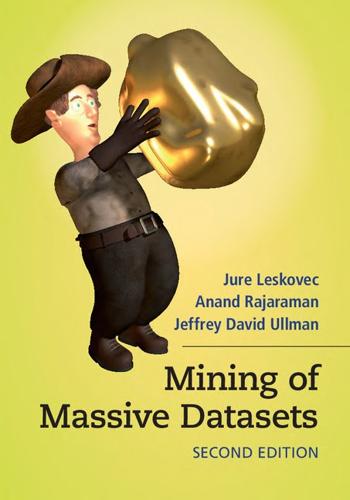
Mining of Massive Datasets
by
Jure Leskovec
,
Anand Rajaraman
and
Jeffrey David Ullman
Published 13 Nov 2014
That is, if entity A is related to both B and C, then there is a higher probability than average that B and C are related. 10.1.2Social Networks as Graphs Social networks are naturally modeled as graphs, which we sometimes refer to as a social graph. The entities are the nodes, and an edge connects two nodes if the nodes are related by the relationship that characterizes the network. If there is a degree associated with the relationship, this degree is represented by labeling the edges. Often, social graphs are undirected, as for the Facebook friends graph. But they can be directed graphs, as for example the graphs of followers on Twitter or Google+. EXAMPLE 10.1Figure 10.1 is an example of a tiny social network.
…
In fact, the data involved in collaborative filtering, as was discussed in Chapter 9, often can be viewed as forming a pair of networks, one for the customers and one for the products. Customers who buy the same sorts of products, e.g., sciencefiction books, will form communities, and dually, products that are bought by the same customers will form communities, e.g., all science-fiction books. Other Examples of Social Graphs Many other phenomena give rise to graphs that look something like social graphs, especially exhibiting locality. Examples include: information networks (documents, web graphs, patents), infrastructure networks (roads, planes, water pipes, powergrids), biological networks (genes, proteins, food-webs of animals eating each other), as well as other types, like product co-purchasing networks (e.g., Groupon). 10.1.4Graphs With Several Node Types There are other social phenomena that involve entities of different types.
…
EXERCISE 10.4.3For the Laplacian matrix constructed in Exercise 10.4.1(c), construct the third and subsequent smallest eigenvalues and their eigenvectors. 10.5Finding Overlapping Communities So far, we have concentrated on clustering a social graph to find communities. But communities are in practice rarely disjoint. In this section, we explain a method for taking a social graph and fitting a model to it that best explains how it could have been generated by a mechanism that assumes the probability that two individuals are connected by an edge (are “friends”) increases as they become members of more communities in common.

Dark Mirror: Edward Snowden and the Surveillance State
by
Barton Gellman
Published 20 May 2020
Sophisticated software tools mapped the call records as “nodes” and “edges” on a grid so large that the human mind, unaided, could not encompass it. Nodes were dots on the map, each representing a telephone number. Edges were lines drawn between the nodes, each representing a call. A related tool called MapReduce condensed the trillions of data points into summary form that a human analyst could grasp. Network theory called this map a social graph. It modeled the relationships and groups that defined each person’s interaction with the world. The NSA’s analysis touched nearly all Americans because the size of the graph grew exponentially as contact chaining progressed. The whole point of chaining was to push outward from a target’s immediate contacts to the contacts of contacts, then contacts of contacts of contacts.
…
The whole point of chaining was to push outward from a target’s immediate contacts to the contacts of contacts, then contacts of contacts of contacts. Each step in that process was called a hop. Double a penny once a day and you reach a million dollars in less than a month. That is what exponential growth looks like with a base of two. As contact chaining steps through its hops, the social graph grows much faster. If the average person calls or is called by ten other people a year, then each hop produces a tenfold increase in the population of the NSA’s contact map. Most of us talk on the phone with a lot more than ten. Whatever that number, dozens or hundreds, you multiply it by itself to measure the growth at each hop.
…
But now, for the first time in history, it had acquired the power to do so. Stewart Baker, a former general counsel of the NSA, leaped early into the fray against Snowden in television appearances, newspaper interviews, and blog posts. He sharply criticized some of my stories, too. But he minced no words about the power of the social graph. “Metadata absolutely tells you everything about somebody’s life,” he said. For purposes of signals intelligence, “if you have enough metadata, you don’t really need content.” Michael V. Hayden concurred bluntly the following spring. “We kill people based on metadata,” he said. “But that’s not what we do with this metadata.”
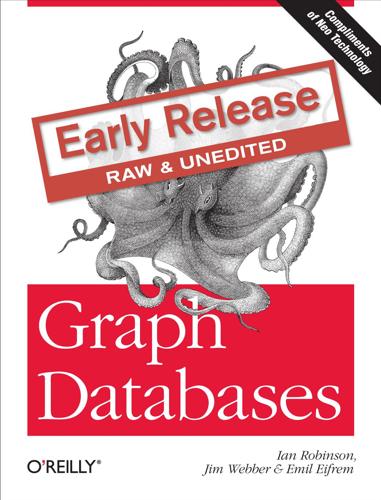
Graph Databases
by
Ian Robinson
,
Jim Webber
and
Emil Eifrem
Published 13 Jun 2013
In Figure 1-1 we see a small network of followers. The relationships are key here in establishing the semantic context: namely, that Billy follows Harry, and that Harry, in turn, follows Billy. Ruth and Harry likewise follow each other, but sadly, while Ruth follows Billy, Billy hasn’t (yet) recip‐ rocated. Figure 1-1. A small social graph Of course, Twitter’s real graph is hundreds of millions of times larger than the example in Figure 1-1, but it works on precisely the same principles. In Figure 1-2 we’ve expanded the graph to include the messages published by Ruth. What is a Graph? | 3 Figure 1-2. Publishing messages Though simple, Figure 1-2 shows the expressive power of the graph model.
…
In their book Connec‐ ted, social scientists Nicholas Christakis and James Fowler show how, despite knowing nothing about an individual, we can better predict that person’s behavior by under‐ standing who they are connected to, than we can by accumulating facts about them.1 Social applications allows organizations to gain competitive and operational advantage by leveraging information about the connections between people, together with discrete information about individuals, to facilitate collaboration and flow of information, and predict behavior. 1. See Nicholas Christakis and James Fowler, Connected: The Amazing Power of Social Networks and How They Shape Our Lives (HarperPress, 2011) 94 | Chapter 5: Graphs in the Real World As Facebook’s use of the term social graph implies, graph data model and graph databases are a natural fit for this overtly relationship-centerd domain. Social networks help us identify the direct and indirect relationships between people, groups and the things with which they interact, allowing users to rate, review and discover each other and the things they care about.
…
In practice this means that data like phone numbers and zip codes can be inlined in the property store file directly, rather than being pushed out to the dynamic stores. This results in reduced I/O operations and improved throughput, since only a single file access is required. In addition to inlining certain compatible property values, Neo4j also maintains space discipline on property names. For example in a social graph, there will likely be many nodes with properties like first_name and last_name. It would be wasteful if each property name was written out to disk verbatim, and so instead property names are indirectly referenced from the property store through the property index file. The prop‐ erty index allows all properties with the same name to share a single record, and thus for repetitive graphs—a very common use case-- Neo4j achieves considerable space and I/O savings.
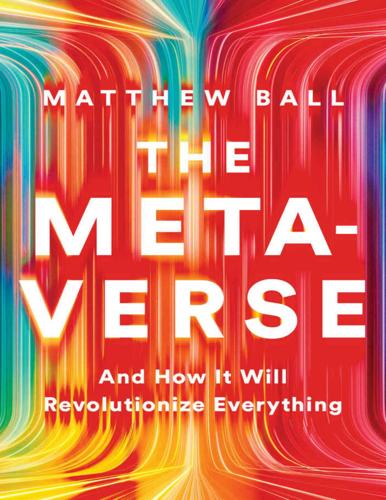
The Metaverse: And How It Will Revolutionize Everything
by
Matthew Ball
Published 18 Jul 2022
Facebook also allowed users to connect their social graph to Tinder, thereby enabling them to see if they had friends in common with a would-be match, and if so, who. Some users preferred matching with someone they could reference check, for safety reasons. Others liked being able to go on a date to make a true “first impression,” and thus “swiped right” only on individuals with whom they had no friends in common. Although many Tinder (and Bumble) users enjoyed this social graph feature, Facebook shut it down in 2018—not long before it announced its own dating service, which was naturally based around its unique social graph and network.† Most blockchains are structurally designed to prevent this arc.
…
† Facebook still allows Tinder users to use their Facebook account to sign up and log in, and to populate their Tinder profile with photos from their Facebook profile. Keeping this functionality, while shutting down access to a user’s social graph, does make sense. Facebook cannot stop users from repurposing photos uploaded to Facebook, as they’re easy to save (“right click, save as”) and, through “like counts,” also helps a user identify their best photos, too. Furthermore, if Facebook users are going to use Tinder, Facebook benefits from knowing as much. At minimum, it enables Facebook to then recommend its dating service, which does still use its social graph, to this user. ‡ In a simplified sense, this data is only “exposed” to the service on an as-needed basis
…
Much of a user’s data, such as cookies or an IP address, not to mention the content they’ve created, can exist without a given website, browser, devices, platform, or service. If a virtual world goes offline, resets, or shuts down, however, it is almost as though it never existed for the player. Even if it continues to operate, the moment a player stops playing within a world, the virtual goods they own, their history and achievements, and even parts of their social graph are likely lost. This is less of a problem when virtual worlds are “games,” but for human society to shift in a meaningful way into virtual spaces (i.e., for education, work, healthcare), what we do in these spaces must reliably endure, just as our grade school reports and baseball trophies do.
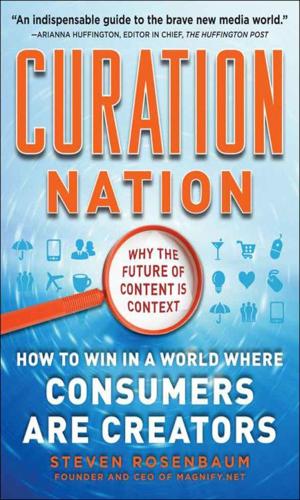
Curation Nation
by
Rosenbaum, Steven
Published 27 Jan 2011
“For a media brand, the concept of curating content becomes an important component of your strategy for connecting with an audience,” says Dan McCarthy, CEO of NCI, one of the United States’ largest local media companies serving the housing market. “People have a large appetite for content; the increase in the proportion of content that they are accessing through trusted connections suggests that people are looking into their social graph to ensure a good content experience. When a consumer includes a media brand in their social graph, they are inviting that brand to help guide their exploration of good content. It doesn’t all have to be original. It does all have to be useful and relevant to the brand experience.” So you can see that the PR folks and the advertising folks don’t look at the world the same way.
…
THE FUTURE OF CONTENT For guys like Miller and Kurnit, who started their careers in the television business but were already looking past it to what would come next, curation isn’t a buzzword or a trend; it’s the future of content and nothing less. Says Miller, “I believe that there has to be curation, which by the way can run the gamut from traditional media like magazines and newspapers to bloggers like Michael Arrington. The social systems will do it with friends and your social graph. And the volume of content will continue to explode, which will create more content than advertising can support. So advertisers will need curation. In the end specialists win, the greater the specialization, the greater the win.” And Kurnit’s take is clearly in the same spirit: “There’s no question the crowd is more efficient than directed individuals.
…
You simple click “Like” on any piece of content, blog post, photo, or brand or e-commerce offering. That expression of your support is now linked to your profile and shared with your friends. From a content consumer’s perspective, it allows them to view aggregated recommendations of all their friends within their social graph. For a look at what that might look like, start here: http://likebutton.me/. Social media is both the source of much of the increased volume of data and increasingly the tools to empower curation, both accidental and purposeful. Simply put, we’re each making more data and recommending more things.
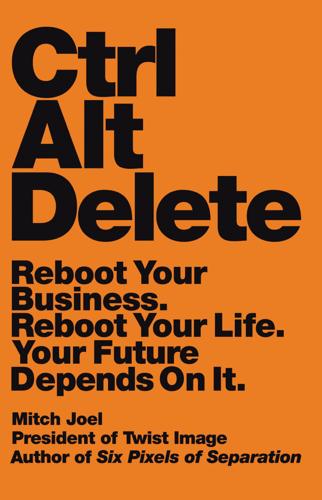
Ctrl Alt Delete: Reboot Your Business. Reboot Your Life. Your Future Depends on It.
by
Mitch Joel
Published 20 May 2013
In the case of Beats By Dre and Target, it’s not healthy to be going after each individual for the “like” on Facebook. The true opportunity is to figure out how to create a mutually beneficial world, instead of one where you are now competing with your own partners. Lesson #5—True fans. The majority of people do not want to friend or like your brand. They use their social graphs for friends, family, and those they made fun of in high school. The intrusion of brands is simply that: an intrusion. Your business will never get everyone to like it. So instead, turn to the fanatical. Find and nurture your true fans. Your heavy users. As that relationship delivers, they will become evangelists for you and you will begin to experience the network effect.
…
Consumers are already demonstrating their desires in this area by using their smartphones to do everything from scanning QR codes to sharing their experiences with their peers on Facebook and Twitter. When you combine their usage (the linear data) with the circular data (what they’re doing in their social graph), and with all of this new big data trending information, it’s easy to see how much this will affect everything we know about connecting to our consumers. BE ACCOUNTABLE TO YOUR BRAND. Imagine a day when you could have all of the data and analytics you have ever wanted. Imagine being able to track and analyze the journey of your consumers.
…
The goal to being social is to make everything that you are doing as sharable and as findable as possible. When you do this in a one-screen world, people find the brand, share it, and engage with it. When people engage with it, they are (hopefully) engaging with you as well. As they engage with something that resonates with them, they tend to share it throughout their social graphs. This makes it increasingly more findable for others. Yes, there are a few brands that are able to leverage this and have actual conversations with consumers, but those brands are few and far between. Plus, in a world of 140 characters, text messages, and +1s, is a conversation all that it’s cracked up to be?
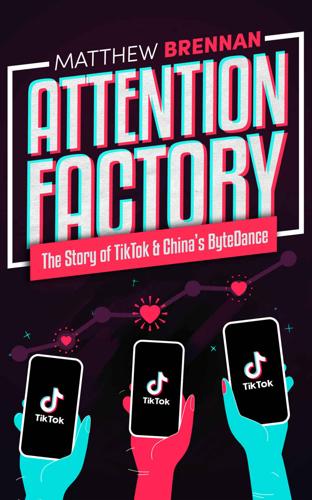
Attention Factory: The Story of TikTok and China's ByteDance
by
Matthew Brennan
Published 9 Oct 2020
One distinct advantage Tencent held over ByteDance was its dominant position in social networking. Logging into Weishi using a WeChat account meant people could connect easily with friends and family who also used the app. This kind of “social graph” integration worked well for many of Tencent’s top gaming titles, but it was much less effective for short video. Douyin’s success relied heavily on algorithmic recommendation, which removed the need for social relations. While the social graph held some potential for improving those recommendations, it also brought with it negative aspects as adding family, acquaintances, or co-workers can inhibit the sense of freedom.
…
In a behind the scenes video recorded during the first year of Musical.ly’s operation, co-founder Louis, confidently looking into the camera, stated: “Our dream is to become the video version of Instagram.” 165 Both Muscial.ly co-founders commented publicly multiple times how they wished to make Musical.ly a social platform. “Social graph is the key!” 166 proclaimed Alex at one Shanghai event in 2016, following up later in the discussion with “We want the content to become more and more boring. As long as you can connect with your friends, your boring contents are attractive to your friends.” Musical.ly had initially done a great job of connecting and building community amongst teens.
…
As users themselves generated all content, fewer older users meant there was little content suitable for them being produced. Why produce content if there’s no audience? This meant that when older users did join, they quickly left. The solution was to broaden the types of content offerings and slowly age up the user base. “We realized while Instagram and Snapchat are social graph led, the fact that Musical.ly was content & creative led was an opportunity, NOT an obstacle. It would be mobile TV for the smartphone generation, and in order to age up, we needed to broaden the content offering and tell that story to the world,” explained product strategist James Veraldi in a later presentation.
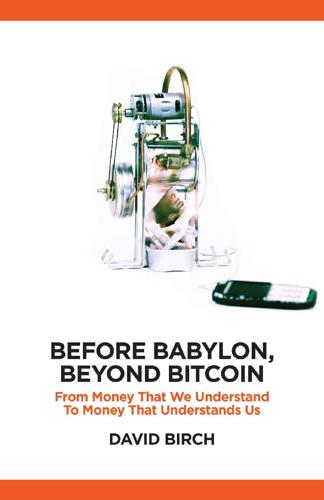
Before Babylon, Beyond Bitcoin: From Money That We Understand to Money That Understands Us (Perspectives)
by
David Birch
Published 14 Jun 2017
Identity and reputation and money What will link changing identities with changing money as these trends converge? In a word, trust. In a world based on trust it will be reputation rather than regulation that will animate trust in economic exchange (Birch 2000). The ‘social graph’ – the network of our social identities – will be the nexus of commerce, administration and interaction. In our distant past we were just as defined by our social graph as we are now (Lessin 2013). There were no identity cards or credit reference agencies or transactional histories of any kind. In the absence of such credentials, you were your reputation. Managing and maintaining these reputations among a small social group of an extended family or a clan was not a scalable solution as civilization progressed and moved on to growing trade as the source of prosperity.
…
Managing and maintaining these reputations among a small social group of an extended family or a clan was not a scalable solution as civilization progressed and moved on to growing trade as the source of prosperity. In the interconnected future, however, there is every reason to suspect that the social graph will resume its pre-eminent position since, as I will explore, it is the most trustworthy, reliable aspect of a persona. This is where the link with money begins to take shape. Far-fetched? I don’t think so. In 1696 there was no cash in England with the result that ‘no trade is managed but by trust’ (Levinson 2009).
…
Reputations are a sound basis for interaction. People make judgments based on other people’s reputations, and behave better out of concern for their own (Dyson 2001). There would have been precious little chance of pretending to be someone else at the local pub in Ireland in the 1970s, and as a consequence the social graph could provide the necessary infrastructure: the landlords knew whose IOUs were good and whose were not and did not need money to substitute for their memories. There you go bringing class into it again Remember that Los Angeles Times Magazine prediction about 2013? It included a trip to the ATM to draw out cash: After parking the van, Alma stops for some cash at the bank-teller machine in the lobby of her building.
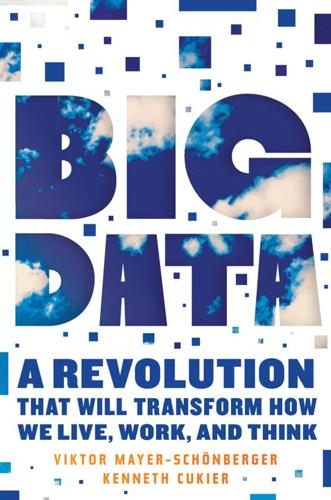
Big Data: A Revolution That Will Transform How We Live, Work, and Think
by
Viktor Mayer-Schonberger
and
Kenneth Cukier
Published 5 Mar 2013
Hence much more of the criticism it has faced centers on what information it is capable of collecting than on what it has actually done with that data. Facebook had around one billion users in 2012, who were interconnected through over 100 billion friendships. The resulting social graph represents more than 10 percent of the total world population, datafied and available to a single company. The potential uses are extraordinary. A number of startups have looked into adapting the social graph to use as signals for establishing credit scores. The idea is that birds of a feather flock together: prudent people befriend like-minded types, while the profligate hang out among themselves.
…
When we let the data speak, we can make connections that we had never thought existed. Hence, some hedge funds parse Twitter to predict the performance of the stock market. Amazon and Netflix base their product recommendations on a myriad of user interactions on their sites. Twitter, LinkedIn, and Facebook all map users’ “social graph” of relationships to learn their preferences. Of course, humans have been analyzing data for millennia. Writing was developed in ancient Mesopotamia because bureaucrats wanted an efficient tool to record and keep track of information. Since biblical times governments have held censuses to gather huge datasets on their citizenry, and for two hundred years actuaries have similarly collected large troves of data concerning the risks they hope to understand—or at least avoid.
…
Social networking platforms don’t simply offer us a way to find and stay in touch with friends and colleagues, they take intangible elements of our everyday life and transform them into data that can be used to do new things. Facebook datafied relationships; they always existed and constituted information, but they were never formally defined as data until Facebook’s “social graph.” Twitter enabled the datafication of sentiment by creating an easy way for people to record and share their stray thoughts, which had previously been lost to the winds of time. LinkedIn datafied our long-past professional experiences, just as Maury transformed old logbooks, turning that information into predictions about our present and future: whom we may know, or a job we may want.

The Patient Will See You Now: The Future of Medicine Is in Your Hands
by
Eric Topol
Published 6 Jan 2015
Finally, there’s the exposome, referring to your environment, all that you are exposed to. Collectively, I have coined the term “panoromic” adopted from the word panoramic, meaning lots of information and covering many topics.5 A panoromic view of each individual provides a comprehensive sweep across all the omes relevant to health and medicine. Social Graph and the Phenome The term “social graph” encompasses a dense package of information, including demographics, location, family and friends, friends of friends, interests, likes, education, pets, pictures, videos, and much more. This is precisely the sort of information stored on sites like Facebook, a fact that hasn’t escaped researchers.
…
We essentially get a phenome from this information—“the composite of an individual’s observable characteristics and traits.”9 Noteworthy is the point that for any given individual, particularly as we age, there is unlikely to be just one phenotype; instead, multiple conditions are likely to be present, which makes one’s phenome not as straightforward as it might appear. For example, blood pressure tends to rise with age, while visual acuity declines. Ideally, someday, we will have all of this data comprehensively collected as the phenome for each individual—the social graph plus the traditional medical record information—and continually updated. While the social graph is subsidiary to the phenome, there’s no question that one’s social network plays an important role in health. Sensors and the Physiome Perhaps the biggest advance in tracking an individual’s information in recent years is the outpouring of an extraordinary number of biosensors.
…
privacy and security concerns, 228–230 real-time test results, 121 social networking, 42–44 Smeeth, Liam, 227 Smith, Adam, 42 Snapchat, 221 Snowden, Edward, 219, 225 Snyder, Michael, 88 Social graph of the individual, 81–83 Social media clinical trials through, 212–214 data collection through, 220–221, 223 global spread increasing global autonomy, 47–48 identifying genetic commonalities in disease, 9 importance of online health communities, 10–12 machine learning, 245 managed competition, 51 open-source software, 197 predictive analysis at the individual level, 243–245 social graphs, 82–83 Social networks, 42–44 Soon-Shion, Patrick, 203–204 Spatiotemporal applications, 79–80 Spinal fusion, 214–215 Splinter, Mike, 175 Spontaneous coronary artery dissection (SCAD), 211–212 The Sports Gene (Epstein), 94 Sports injuries, 94–95 Stanford University, 112 Star Trek (television program), 286 Statins, 31–33 Stephens, Richard, 226–227 Stethoscope, 96, 119–120, 175–176, 253–256, 276, 289 Stone, Neil, 33 Sudden infant death syndrome (SIDS), 92, 103 Supreme Court, US, 74–76 Surgery Center of Oklahoma, 152–153 Surveillance, 219–224 Take Care clinics, 163 Target, 224, 239 Targeted marketing, 221–225, 243 Tay-Sachs disease, 89 TechFreedom, 69 Technion Institute, Haifa, Israel, 110 Technology adoption, 7(fig.)
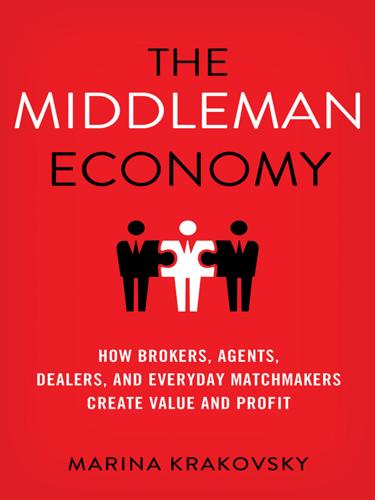
The Middleman Economy: How Brokers, Agents, Dealers, and Everyday Matchmakers Create Value and Profit
by
Marina Krakovsky
Published 14 Sep 2015
Nozad might balk at this abstract, overly mathematical depiction of the ties between people, but it’s a common way to look at human connections, especially in our Web 2.0 era. When Mark Zuckerberg or Jeff Weiner talk about the “social graph,” this is what they mean, except they’re referring to users of Facebook or LinkedIn. The points, or nodes, represent individual people, while the lines or links represent the social ties between the individuals.12 Our social graphs from the online world are often a crude replica of our actual social networks. Just think of the people you may be close to who don’t use social media. (Some of your close relatives, whom you talk to by phone, may not be on Facebook at all, and your own kids might be following half their classmates on Instagram, but not you.)
…
(Some of your close relatives, whom you talk to by phone, may not be on Facebook at all, and your own kids might be following half their classmates on Instagram, but not you.) Conversely, think of all your LinkedIn connections whom you last saw two jobs ago, if at all. Your social graphs online certainly overlap with your real-world network, but they aren’t the same thing. When sociologists plot out people’s social networks, on the other hand, they look at actual interactions, whether online or off: who do you talk to most often? Whom do you e-mail every day, and who e-mails you back?13 These sorts of interactions are the real clues to where the lines in the network diagram should lie: the more frequent and reciprocal the contact, the stronger the social tie.
…
For example, graph theory in computer science uses the term “edge” for what social scientists call a “tie.” 13.For example, see Nathan Eagle, Sandy Pentland, and David Lazer, “Inferring Friendship Network Structure by Using Mobile Phone Data,” Proceedings of the National Academy of Sciences 106, no. 36 (2009): 15274–78. 14.Sociologists also use the term “sociogram,” whereas computer scientists favor “social graph.” Both refer to a network diagram. 15.See, for example, Anatol Rapoport and William J. Horvath, “A Study of a Large Sociogram,” Behavioral Science 6, no. 4 (October 1961): 279–91, and Carlo Morselli, Inside Criminal Networks (New York: Springer, 2009). 16.This is the principle of homophily: birds of a feather flock together. 17.Mark Granovetter, Getting A Job: A Study of Contacts and Careers (Cambridge, MA: Harvard University Press, 1974) and “The Strength of Weak Ties,” American Journal of Sociology 78, no. 6 (May 1973): 1360–1380. 18.Ronald Burt, Structural Holes: The Social Structure of Competition (Harvard University Press, 1992). 19.Sociologists most often use the term “network broker” or simply “broker” to describe this person.
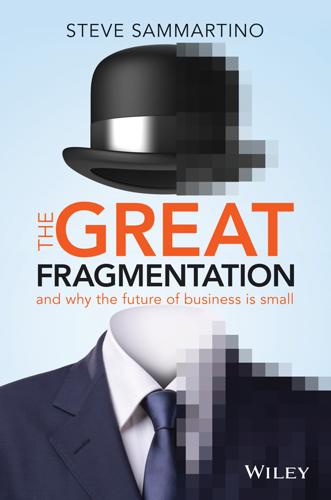
The Great Fragmentation: And Why the Future of All Business Is Small
by
Steve Sammartino
Published 25 Jun 2014
How does business go about doing business if we throw out the old methods of going to the market and marketing to people? (Mind you, marketing isn’t evil. It’s beautiful and powerful, it’s just that it needs to be used in a more human way.) If marketers embrace this philosophy, we’ll all end up better off after the interaction. The way we replace demographics is with social and interest graphs. Social graphs The social graph is the network that results from relationships that are digitally facilitated and maintained through virtual connections, which can now be spread more quickly using social-media tools. These connections are, theoretically, easier to make and easier to maintain than when our connection methods were all physical in nature.
…
INDEX 3D printing access and accessibility see also barriers; communication; digital; social media — factors of production — knowledge adoption rates advertising see also marketing; mass media; promotion; television Airbnb Alibaba Amazon antifragility Apple artisanal production creativity audience see also crowd — connecting with — vs target Away from Keyboard (AFK) banking see also crowdfunding; currencies barriers Beck (musician) big as a disadvantage bioengineering biomimicry biotechnology bitcoins blogs borrowed interest brand business strategies change see disruption and disruptive change Cluetrain Manifesto co-creation coffee culture Cold War collaboration collaborative consumption collective sentience commerce, future see also retail and retailers communication see also advertising; promotion; social media; social relationships — channels — tools community vs target competition and competitors component retail computers see also connecting and connection; internet; networks; smartphones; social media; software; technology era; 3D printing; web connecting and connection see also social media; social relationships — home/world — machines — people — things consumerism consumption silos content, delivery of coopetition corporations see also industrial era; retail and retailers; technology era costs see also finance; price co-working space creativity crowd, contribution by the crowdfunding cryptocurrencies culture — hacking — startup currencies see also banking deflation demographics device convergence digital see also computers; internet; music; smartphone; retail and retailers, online; social media; social relationships; technology; web; work — cohorts — era — footprint — revolution — skills — strategy — tools — world disruption and disruptive change DNA as an operating system drones Dunbar's number e-commerce see retail and retailers, online economic development, changing education employment, lifetime see also labour; work ephermalization Facebook see also social media finance, peer to peer see also banking; crowdfunding; currencies Ford, Henry 4Ps Foursquare fragmentation — of cities — industrial — Lego car example gadgets see also computers; smartphone; tools games and gaming behaviour gamification geo-location glass cockpit Global Financial Crisis (GFC) globalisation Google hacking hourglass strategy IFTTT (If this then that) industrialists (capital class) industry, redefining industrial era see also consumerism; marketing; retail and retailers — hacking — life in influencers information-based work infrastructure — changing — declining importance of — legacy innovation intention interest-based groups see also niches interest graphs internet see also access and accessibility; connecting and connection; social media; social relationships; web Internet.org In Real Life (IRL) isolation iTunes see also music Jumpstart Our Business Startups (JOBS) Act (USA) keyboards knowledge economy lab vs factory labour see also work — low-cost language layering legacy — industries — infrastructure — media Lego car project life — in boxes — in gaming future — hack living standards see also life location see place, work making see also artisanal production; retail and retailers; 3D printing malleable marketplace manufacturing see also artisanal production; industrial era; making; product; 3D printing; tools — desktop marketing see also advertising; consumerism; 4Ps; mass media; promotion; retail and retailers — demographics, use in — industrial era — language — mass — metrics — new — post-industrial — predictive — research — target — traditional mass media ; see also advertising; marketing; media; promotion; television — after materialism media see also communication; legacy; mass media; newspapers; niches; television — consumption — hacking — platform vs content — subscription Metcalfe's law MOOC (Massive Open Online Course) Moore's law music Napster Netflix netizens networks see also connecting and connection; media; social media; social relationships newspapers see also media niches nodes nondustrial company Oaida, Raul oDesk office, end of the omniconnection era open source parasocial interaction payment systems Pebble phones, number of mobile see also smartphones photography Pinterest piracy place — of work platforms pop culture power-generating technologies price see also costs privacy see also social media; social relationships product — unfinished production see also industrial era; product; 3D printing — mass projecteer Project October Sky promotion see also advertising; marketing; mass media; media quantified self Racovitsa, Vasilii remote controls RepRap 3D printer retail cold spot retail and retailers — changing — digital — direct — hacking — mass — online — price — small — strategies — traditional rewards robots Sans nation state economy scientific management search engines self-hacking self-publishing self-storage sensors sharing see also social media; social relationships smartphones smartwatch social graphs social media (digitally enhanced conversation) see also Facebook; social relationships; Twitter; YouTube social relationships see also social graphs; social media — digital software speed subcultures Super Awesome Micro Project see Lego car project Super Bowl mentality target tastemakers technology see also computers; digital; open source; social media; smartphones; social relationships; software; 3D printing; work — deflation — era — free — revolution — speed — stack teenagers, marketing to television Tesla Motors thingernet thinking and technology times tools see also artisanal production; communication; computers; digital; making; smartphones; social media; 3D printing — changing — old trust Twitter Uber unlearning usability gap user experience volumetric mindset wages — growth — low — minimum web see also connecting and connection; digital; internet; retail and retailers, online; social media; social relationships — three phases of — tools Wikipedia work — digital era — industrial era — location of — options words see language Yahoo YouTube Learn more with practical advice from our experts WILEY END USER LICENSE AGREEMENT Go to www.wiley.com/go/eula to access Wiley’s ebook EULA.
…
The interest graph matters because it doesn’t just track the activity undertaken by people, but also what they hope to do — where they want to go, what they want to buy, who they want to follow and meet, and what they want to change. Social + interests = intention It gets interesting where these two ideas intersect. The overlaying of the social graph and the interest graph tells us much about a person’s intentions. When people develop relationships based on a connection of interests facilitated by social-media connections we can see the true predictive persona. It’s actually how the best and most enduring relationships have always been formed; it’s just that now we can form them more quickly, develop larger cohorts and there’s less luck involved in finding similar souls.
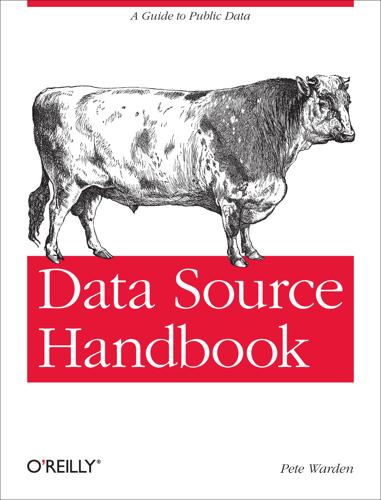
Data Source Handbook
by
Pete Warden
Published 15 Feb 2011
ISBN: 978-1-449-30314-3 [LSI] 1295970672 Table of Contents Preface . . . . . . . . . . . . . . . . . . . . . . . . . . . . . . . . . . . . . . . . . . . . . . . . . . . . . . . . . . . . . . . . . . . . . vii Data Source Handbook . . . . . . . . . . . . . . . . . . . . . . . . . . . . . . . . . . . . . . . . . . . . . . . . . . . . . . . . . 1 Websites WHOIS Blekko bit.ly Compete Delicious BackType PagePeeker People by Email WebFinger Flickr Gravatar Amazon AIM FriendFeed Google Social Graph MySpace Github Rapleaf Jigsaw People by Name WhitePages LinkedIn GenderFromName People by Account Klout Qwerly Search Terms BOSS 1 1 2 3 3 4 5 5 5 6 6 6 7 7 8 8 9 10 10 11 11 11 11 11 12 12 12 12 13 v Blekko Bing Google Custom Search Wikipedia Google Suggest Wolfram Alpha Locations SimpleGeo Yahoo!
…
"services":[ {"url":"http://en.wikipedia.org/wiki/Blog","iconUrl":"...", "id":"blog","profileUrl":"http://radar.oreilly.com","name":"Blog"}, {"username":"timoreilly","name":"Disqus","url":"http://www.disqus.com/", "profileUrl":"http://www.disqus.com/people/timoreilly/","iconUrl":"...","id":"disqus"}, {"username":"timoreilly","name":"Flickr","url":"http://www.flickr.com/", "profileUrl":"http://www.flickr.com/photos/36521959321%40N01/", "iconUrl":"...","id":"flickr"}, {"username":"timoreilly","name":"SlideShare","url":"http://www.slideshare.net/", "profileUrl":"http://www.slideshare.net/timoreilly", "iconUrl":"...","id":"slideshare"}, {"username":"timoreilly","name":"Twitter","url":"http://twitter.com/", "profileUrl":"http://twitter.com/timoreilly", "iconUrl":"...","id":"twitter"}, {"username":"tadghin","name":"YouTube","url":"http://www.youtube.com/", "profileUrl":"http://www.youtube.com/profile?user=tadghin", "iconUrl":"...","id":"youtube"}, {"url":"http://www.facebook.com/","iconUrl":"...","id":"facebook", "profileUrl":"http://www.facebook.com/profile.php?id=544591116", "name":"Facebook"}], "nickname":"timoreilly","id":"d85e8470-25c5-11dd-9ea1-003048343a40"} Google Social Graph Though it’s an early experiment that’s largely been superseded by Webfinger, this Google API can still be useful for the rich connection information it exposes for signedup users. Unfortunately, it’s not as well-populated as you might expect. It doesn’t require any developer keys to access: 8 | Data Source Handbook curl "http://socialgraph.apis.google.com/lookup?
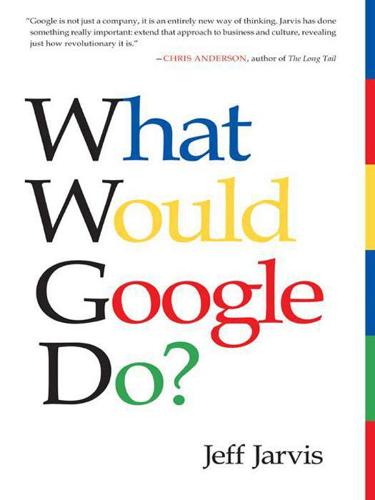
What Would Google Do?
by
Jeff Jarvis
Published 15 Feb 2009
Scott Heiferman, founder of Meetup, also brought historical perspective to the discussion, writing a brief manifesto for change in the coming decade, chock full of hip blog references (the “social graph” to which he refers is what Mark Zuckerberg calls the architecture of personal connections on Facebook): Historically, when people are free to assemble & associate, they self-organize insurance, cooperatively. Later it became the centralized, professionalized industry we know today. I predict there’ll be some kind of massive craigslistification of insurance by April 27, 2018. It’s about de-institutionalization—not from the government borg (social security), not from the corporate borg (AIG). The New Social [graph] Security. Decentralized, self-organized.
…
When you think about it, that is precisely what Zuckerberg brought to Harvard—then other universities, then the rest of the world—with his social platform. Harvard’s community had been doing what it wanted to do for more than three centuries before Zuckerberg came along. He just helped them do it better. Facebook enabled people to organize their social networks—the social graph, he calls it: who they are, what they do, who they know, and, not unimportantly, what they look like. It was an instant hit because it met a need. It organized social life at Harvard. At this Davos meeting (which was off the record, but Zuckerberg gave me permission to blog it), he told the story of his Harvard art course.
…
See search-engine optimization Sequoia Capital, 189 Shardanand, Upendra, 35 Shirky, Clay, 50, 60, 151, 191–92, 197, 235–36, 237 Silverman, Dwight, 13 simplicity, 114–16, 236 SimplyHired.com, 39 Sirius Satellite Radio, 131 Skype, 31, 50 Smart Mobs (Rheingold), 106 Smith, Quincy, 38 Smolan, Rick, 140 social business, 158 social graph, 49 socialization, 211–12 social-media, 172–73 social responsibility, 47 social web, 51 Sorrell, Martin, 42 Sourcetool.com, 100 specialization, 26–27, 154 speed, 103–4, 105–6 Spitzer, Eliot, 96 splogs, 43 Starbucks, 60–62 Stern, Howard, 95, 131–32 Stewart, Jon, 95–96 StudieVZ, 50 Supreme Court, 225 Surowiecki, James, 88 talent, 146, 240 Tapscott, Don, 113, 151, 225 targeting, 151, 179–80 teaching, 193, 214–15 teamwork, 217 TechCrunch, 107, 192 Technorati, 15, 20 TechTV, 132 telecommunications, 165–71 Telegraph Media Group, 123 television, 84 cable, 167 decline of, 65–66 listings, 109–10 networks, 135 Television Without Pity, 135 Tesco, 179 Tesla Motors, 175 testing, 214 Threadbanger, 180 Threadless, 57 TimesSelect, 78 Time Warner, 80–81 Tobaccowala, Rishad, 114, 121–22, 145–48, 151, 177 on Apple, 228 toilet paper, 180–81 TomEvslin.com, 31 Toto, 181 Toyota, 174–75 transparency, 83, 97–98 journalism and, 92 PR and, 223 Tribune Company, 129 Trippi, Joe, 238 trust, 74, 170 control v., 82–83 in customers, 83–84 Tumblr, 192 Turner, Ted, 134 TV Guide, 109–10 20 percent rule, 111, 114 23andMe, 205 Twitter, 20, 126 Dell and, 46 mobs and, 107 real time and, 105–6 Tyndall, Andrew, 220 Union Square Ventures, 30 University of Phoenix, 217 Updike, John, 138 The Vanishing Newspaper (Meyer), 125 Vardi, Yossi, 31–32 Vaynerchuk, Gary, 107, 157–61 VC.
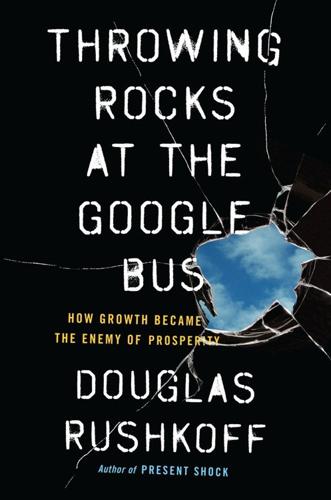
Throwing Rocks at the Google Bus: How Growth Became the Enemy of Prosperity
by
Douglas Rushkoff
Published 1 Mar 2016
It’s a one-sided, highly controlled relationship in which, invariably, the platforms and companies with which we engage learn more about us than we ever learn about them. Social marketing creates the illusion of a natural, nonmarketed groundswell of interest and, more importantly, provides marketers with a map of social connections and influences. These social graphs, as they’re called in the industry, are the fundamental building blocks of big data companies’ analyses. Big data is worth more than the sum of its parts. It is the technology for solving everything from terrorism to tuberculosis, as well as the purported payoff for otherwise unprofitable tech businesses, from smartphones to video games.
…
See also marketing big data and, 42 branding and, 20, 35–37 “likes” economy and, 35–37 AFL-CIO Housing Investment Trust, 210 Agency.com, 196 Airbnb, 98–99, 213, 219, 222 destructive destruction and, 100 peer-to-peer commerce enabled by, 45, 46 algorithmic trading, 179–84 Alphabet, 78 Amazon, 50, 76, 83, 93, 219, 229 destructive destruction and, 100 highly centralized sales platform of, 29 as platform monopoly, 87–90 Amazon Associates, 89 Amazon Mechanical Turk, 49n, 50, 90, 214, 222 Amazon Prime, 90 American Revolution, 71–72, 75 Ameritrade, 177, 178 amplification, 70, 73 Amsted Industries, 117 Anderson, Chris, 26, 33 Andreessen, Marc, 191–92 angel investors, 187, 188 AngelList, 201 Aoki, Steve, 36 Apple, 37, 76, 80, 83, 141, 218 Ariel, 209–10 aristocracy, 17–18, 22, 70, 128–29, 133, 230 Aristotle, 69 artificial intelligence, 90–91 artisanal economy, 16–18, 21, 22, 226, 233–34 arts, funding of, 236 Atkinson, Anthony B., 65 austerity, 136–37 auto attendants, 14 Bandcamp, 29–30 Barber, Brad, 177 Barnes & Noble, 83, 87 barter, 127 barter exchanges, 159 Basecamp, 59–60 BASF, 107 Battle-Bro, 121 Bauwens, Michael, 221 bazaars, 16–18 money and, 127 obsolescence of, caused by corporations, 70–71 Bell, Daniel, 53 Belloc, Hilaire, 229 benefit corporations, 119 Ben & Jerry’s, 80, 205 Benna, Ted, 171 BerkShare, 154–55 Best Buy, 90 Bezos, Jeff, 90, 92–93 Biewald, Lukas, 49–50 big data, 39–44 data point collection and comparisons of, 41–42 game changing product invention reduced by reliance on, 43 predicting future choices, as means of, 41, 42–43 reduction in spontaneity of customers and, 43 social graphs and, 40 suspicion of, as increasing value of data already being sold, 43–44 traditional market research, distinguished, 41 Big Shift, 76 biopiracy, 218 biotech crash of 1987, 6 Bitcoin, 143–49, 150–51, 152, 219, 222 BitTorrent, 142–43, 219 Blackboard, 95–96 Blackstone Group, 115 black swans, 183 blockchain, 144–51, 222 Bitcoin, 144, 145, 146, 147, 149, 222 decentralized autonomous corporations (DACs) and, 149–50 Blogger, 8, 31 Bloomberg, 182 Bodie, Zvie, 174 Borders, 83, 87 bot programs, 37 bounded investing, 210–15 Bovino, Beth Ann, 81–82 Brand, Russell, 36 branding, 20 social, and “likes” economy, 35–37 Branson, Richard, 121 Brin, Sergey, 92–93 Bristol Pounds, 156 British East India Company, 71–72 Brixton Pounds, 156 brokered barter system, 127 Brynjolfsson, Erik, 23, 53 Buffett, Warren, 168, 209 burn rate, 190 Bush, Jeb, 227–28 Calacanis, Jason, 201 Calvert, 209–10 Campbell Soup Company, 119 capital.
…
Bean, 80 local currencies, 154–65 cooperative community currencies, 160–65 free money theory, currencies based on, 156–59 local multiplier effect, 155 Long Tail theory, 26, 33 low-profit limited liability company (L3C), 120–21 Luckett, Oliver, 35–36 Lyft, 45, 47, 87 Machine Learning lab, 90–91 McAfee, Andrew, 23, 53 McCluhan, Marshall, 229 McKenna, Terence, 234 McLuhan, Marshall, 69 Magic Eraser Duo, 107 Maker’s Row, 30 malware, 37 marketing. See also advertising big data and, 42 branding and, 20, 35–37 “likes” economy and, 35–37 mass, 19–20 social graphs generated by, 40 market makers, 178–79 market money, 127–28, 130 Marx, Karl, 83, 138 mass media, 20–21 maturity, 98 Mecklenburg, George, 159 medical debt, 153 Meetup, 196–97 microfinancing platforms, 202–4 Microsoft, 83 Microventures, 202–3 Mill, John Stuart, 135 mining, of bitcoins, 145, 147 MIT Technology Review,53 Mondragon Corporation, 220, 222 money basket of commodities approach to backing of, 139 blockchains and, 144–51, 222 central currency system and (See central currency system) cooperative currencies, 160–65 debt and, 152–54 digital transaction networks and, 140–51 extractive purpose of, 128–31 free money theory, currencies based on, 156–59 gold standard and, 139 grain receipts, 128 history of, 126–31 local currencies, 154–65 manipulating human financial behavior to serve, 151–52 market, 127–28, 130 operating system nature of centrally-issued, 125–26 outlawing of local currencies and replacement with coin of the realm, 128–29 precious metals and, 128 reprogramming of, 138–51 traditional bank’s role in serving communities, 165–67 traditional purpose of, 126 as unbound, 212–13 velocity of, 140–41 monopolies chartered, 18, 56, 70, 101, 125, 131 platform, 82–93, 101 power-law dynamics and, 27–28 Monsanto, 218 Morgan Stanley, 195 Mozilla Corporation, 122–23 Mozilla Foundation, 122–23 Mr.
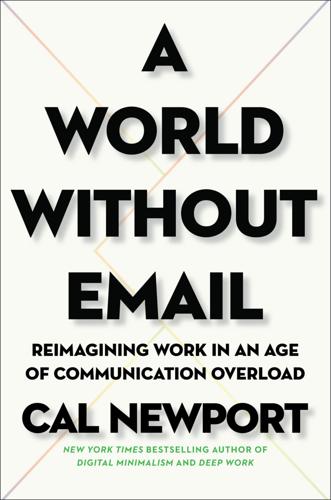
A World Without Email: Reimagining Work in an Age of Communication Overload
by
Cal Newport
Published 2 Mar 2021
Some circles, like busy transit hubs, emanate thick lines in all directions, while others are only sparsely connected; some collections of circles may have very few lines between them, while others are deeply interconnected. To a normal human observer, these social graphs seem like a complicated jumble. But to scientists in the burgeoning academic field that has become known as network science, these graphs, once coded into digital bits and fed into computers to be analyzed by algorithms, can provide deep insight into the social dynamics of the groups they describe. Which is exactly why the authors of the 2017 research paper went through the trouble of persuading the Mbendjele BaYaka to wear wireless sensors. They found that by studying the social graph generated by these logs, they could accurately predict the number of living offspring of the BaYaka mothers involved in the study.
…
A follow-up study of the Mbendjele BaYaka, published in 2017 in the same journal, provides some insight into this question.14 In this work, the researchers persuaded 132 adults in a BaYaka camp to wear small wireless sensors around their necks for a week. These devices captured and logged one-on-one interactions between subjects, deploying short-range signals every two minutes to record who was near who. The researchers then used these voluminous logs of interactions to create what’s known as a social graph. The process here is straightforward. Imagine that you start with a large blank sheet of paper, pinned to a wall. You first draw a circle for every subject who wore a sensor, scattering them evenly across the page. Now, for every interaction event in your log, you draw a line between the circles that represents the two subjects interacting.
…
“These social adaptations are central to making us the most successful species on earth,” Lieberman writes.16 Long before scientists probed the underlying structures of our sociality, we were already quite aware and reflective about our crushing need to properly manage interactions. The Torah explicitly forbids rechilut (gossip): “Thou shalt not go up and down as a talebearer among thy people; neither shalt thou stand against the blood of thy neighbor: I am the LORD,”17 a biblical recognition of the power latent in the information moving through a group’s social graph. Shakespeare also identified friendship as central to the human experience when he wrote Richard II’s famous lament: “I live with bread like you, feel want, / Taste grief, need friends: subjected thus, / How can you say to me, I am a king?”18 Which brings us back to email. The flip side of a deep evolutionary obsession with one-on-one interaction, as with most hardwired drives, is a corresponding feeling of distress when it’s thwarted.

You Are Not a Gadget
by
Jaron Lanier
Published 12 Jan 2010
The hope of a thousand Silicon Valley start-ups is that firms like Face-book are capturing extremely valuable information called the “social graph.” Using this information, an advertiser might hypothetically be able to target all the members of a peer group just as they are forming their opinions about brands, habits, and so on. Peer pressure is the great power behind adolescent behavior, goes the reasoning, and adolescent choices become life choices. So if someone could crack the mystery of how to make perfect ads using the social graph, an advertiser would be able to design peer pressure biases in a population of real people who would then be primed to buy whatever the advertiser is selling for their whole lives.
…
If the revenue never appears, then a weird imposition of a database-as-reality ideology will have colored generations of teen peer group and romantic experiences for no business or other purpose. If, on the other hand, the revenue does appear, evidence suggests that its impact will be truly negative. When Facebook has attempted to turn the social graph into a profit center in the past, it has created ethical disasters. A famous example was 2007’s Beacon. This was a suddenly imposed feature that was hard to opt out of. When a Facebook user made a purchase anywhere on the internet, the event was broadcast to all the so-called friends in that person’s network.

The Stack: On Software and Sovereignty
by
Benjamin H. Bratton
Published 19 Feb 2016
None of the other digital currency projects is built on the core currency over which Facebook still has privileged position of access: the microeconomies of recognized social debt from which the value of money is primordially derived (at least for humans; HST algorithms are a different story).55 But to date, Facebook's furtive and ill-conceived experiments at the monetization of that capital are based on strategies of rent more than mediation, such as reciprocal likes, selling post promotion, charging users to message each other, and so essentially taxing the graph's own growth. This may be a doubtful recipe for the conversion of public obligation into private money and back again. The magical ontology of money requires a trust so trusting that it requires no deliberation, and while social graph-based platforms may be where new currencies will be sustained in the long run, Facebook may have soiled its own punch, and so perhaps we'll see banks becoming social graph platforms before we see graph platforms becoming banks. Still Facebook is the most widely engaged social media site with well over a billion active users and so its potential for structuring human communication according to its own logics of platform sovereignty remains profound. 30.
…
Today's political geographic conflicts are often defined as exceptions to that normal model, and many are driven, enabled, or enforced in significant measure by planetary computation: byzantine international and subnational bodies, a proliferation of enclaves and exclaves, noncontiguous states, diasporic nationalisms, global brand affiliations, wide-scale demographic mobilization and containment, free trade corridors and special economic zones, massive file-sharing networks both legal and illegal, material and manufacturing logistical vectors, polar and subpolar resource appropriations, panoptic satellite platforms, alternative currencies, atavistic and irredentist religious imaginaries, cloud data and social-graph identity platforms, big data biopolitics of population medicine, equities markets held in place by an algorithmic arms race of supercomputational trading, deep cold wars over data aggregation across state and party lines, and so on. In relation to the incommensurate demands of diverse protocols, these rewrite and redivide the spaces of geopolitics in ways that are inclusive of aerial volumes, atmospheric envelopes, and oceanic depths.
…
The Stack discussed in the following chapters is a vast software/hardware formation, a proto-megastructure built of crisscrossed oceans, layered concrete and fiber optics, urban metal and fleshy fingers, abstract identities and the fortified skins of oversubscribed national sovereignty. It is a machine literally circumscribing the planet, which not only pierces and distorts Westphalian models of state territory but also produces new spaces in its own image: clouds, networks, zones, social graphs, ecologies, megacities, formal and informal violence, weird theologies, all superimposed one on the other. This aggregate machine becomes a systematic technology according to the properties and limitations of that very spatial order. The layers of The Stack, some continental in scale and others microscopic, work in specific relation to the layer above and below it.

The Costs of Connection: How Data Is Colonizing Human Life and Appropriating It for Capitalism
by
Nick Couldry
and
Ulises A. Mejias
Published 19 Aug 2019
Certainly executives’ habit of speaking like social theorists did not start in the past decade.129 Just before the 2012 Facebook international public-share offering, Zuckerberg claimed that Facebook is “a fabric that can make any experience online social.”130 In 2010, he had already dubbed the 2007 invention of the social graph (Facebook’s way of mapping the network connections between users) “our way of explaining the phenomenon we thought was happening in the world.”131 When Facebook’s open graph (which aggregates people’s Facebook networks with the wider data Facebook gets from “likes” and via its plug-ins) was launched later in 2010, Zuckerberg speculated more broadly: We believe that eventually almost all apps are going to be social but in the world there’s a natural spectrum from behaviors that are really naturally social to ones that aren’t and the ones that are naturally social are going to be the ones that turn into social apps. . . .
…
Shaw, Jonathan. “The Watchers: Assaults on Privacy in America.” Harvard Magazine, January–February 2017. https://harvardmagazine.com/2017/01/the-watchers. Shaw, Tamsin. “Invisible Manipulators of Your Mind.” New York Review of Books. April 20, 2017. Shepherd, Tamara.” Mapped, Measured and Mined: The Social Graph and Colonial Visuality”.” Social Media + Society 1, no. 1 (2015). DOI: 10.1177/2056305115578671. . “Neocolonial Intimacies.” California Review of Images and Mark Zuckerberg (2017). http://zuckerbergreview.com/shepherd.html. Shilliam, Robbie. “Redemptive Political Economy.” In Critical Methods in Political and Cultural Economy, edited by Johnna Montgomerie, 51–57.
…
See historical colonialism European Union (EU): on consent and “opting out,” 93; Digital Agenda, 89; employment in ICT sector, 236n58; European Convention on Human Rights, 179–80; General Data Protection Regulation (2018), 28, 170, 180–81, 194–95, 259n131; Google scrutiny by, 49 Exxon/Mobil, 54 Face ++, 29 Facebook: and autonomy, 172; as “Big Five” company, 48–50; Cambridge Analytica scandal, 3, 53, 137–38, 140, 178, 187; colonial ideology of, 16, 17; data and emerging social order of capitalism, 19, 21, 26–28, 228n88; data as colonized resource by, 7, 11; and data relations, 12–14; effect on society, 221n16, 221n18; employment by, 236n58; Facebook at Work and labor surveillance, 65; Free Basics as “free internet,” 12, 49, 97; market-capitalization value of, 37, 232n2; mission statement of, 106; as monopoly-monopsony hybrid, 43; revenue of, 54; Skam and personal surveillance, 109–10; social graphs, 137–38; social knowledge by, 143; social quantification by, 53; statements of rights and responsibilities (SRR), 93–94 Facefirst, 10 Farrar, Frederic W., 78–79 fetish concept, 18 “fictional commodities,” 226n66 Financial Times (London), on data privacy, 161, 187 fingerprinting, 99–100 Fitbit, 65 fitness trackers, 65–66, 133, 229n121.

How to Fix the Future: Staying Human in the Digital Age
by
Andrew Keen
Published 1 Mar 2018
Offering to guarantee the “fundamental right” to personal data protection for all EU residents, the GDPR is an attempt to turn today’s data equation on its head by enabling individuals to own what technologists call their “social graph.” Instead of big data companies owning us, we will not only own our data; we will be able to delete it or take it with us wherever we go on the internet. Google will no longer be allowed, in Gary Reback’s words, to unilaterally “build profiles of everyone.” Some are calling for a similar “Social Graph Portability Act” to be created by the US Congress.47 They would be wise to use the intended GDPR act in the EU as a model for this congressional legislation.
…
J., 49–50 Schlosser, Eric, 50 Schmetz, Jean-Paul, 189 Schmidt, Eric, 139 Schneier, Bruce, 60 Schrems, Max, 155–156, 159 Schulz, Martin, 151–152 Schumacher, Tim, 172, 176–181 Schwab, Klaus, 24, 27 Seattle City Council, worker and consumer choice issues, 254 Second Machine Age, The (Brynjolfsson, McAfee), 269 Seidman, Dov, 14–16, 23, 107 self-conscious algorithms, 54–56 self-driving cars, 256–257 sexual assault, social responsibility and, 201–202, 220–222 Shah, Viral, 98–100 Shallows, The (Carr), 270 Sharma, Sharad, 149–150 Sikkut, Siim, 81 Silent Spring (Carson), 50 Silicon Germany (Keese), 174 Silo Effect, The (Tett), 274 Sina Weibo, 121 Singapore, 101–125 “Big Bang Data” exhibition (ArtScience Museum), 112–115, 124 China and, 120–125 on competition (antitrust), 141 connectedness of, 102–103 digital ID card system of, 106–108 economy of, 109–112 education in, 275–279 Estonia compared to, 92 government and human rights issues of, 104–106 inspiration for Utopia (More) and, 101–102 regulation issues, 141 Smart Nation initiative, 103–104, 106, 112–120 Singapore University of Technology and Design (SUTD), 277–279 Singer, Natasha, 280–281 Siri (Apple), 25 Slock.it, 170–171 Smith, Tiffany, 220, 222 Snowden, Edward, 8–12, 59, 88, 96–97, 156 social graph, 157 social media. See also individual social media companies centralized power of internet companies and, 60–70 as public sphere, 33–34 social responsibility, 193–225 as ethical responsibility, 200–207 investment in, 207–217 Kapor Center example of, 217–225 for planning for the future, 193–200 regulation and, 145–148 social security as tool to fix the future, 40–41, 44–45 universal income concept and, 260–268 Sony Music, 240–241 Sorrell, Martin, 234 “Soul of Man Under Socialism, The” (Wilde), 19 Spain, regulation by, 159 Spotify, 229, 231, 235, 239–240, 242, 288 Springer, 179 “stack” metaphor, 32–33, 38, 41 Standard Oil, 127–128, 135–136 Stanford, Leland, 206 Steiner, Rudolf, 282–283 Stephens, Philip, 126–127, 128–129 Straub, Daniel, 260–268, 271, 274, 282 streaming services advertising and, 233–235 artists on, 226–233, 237–245 Sullivan, Andrew, 67 Summer Math and Science Honors (SMASH), 218, 223 Sunde, Peter, 182, 244 Surkov, Vladislav, 94 Swift, Taylor, 229, 231, 235, 288 Switzerland, universal income concept in, 260–268 Tallinn, Jaan, 52–56, 198 Tamkivi, Sten, 80, 89 Taplin, Jonathan, 63–64, 227–233 Tapscott, Alex, 82, 97 Tapscott, Don, 82, 97 TCP/IP, 59 TechCrunchTV (television show), 68 Tehnopol, 52–56 Tett, Gillian, 274 Thank You for Being Late (Friedman), 23 Thiel, Peter, 139, 199, 202 “Third Wave” of innovation, 147, 164 Thompson, Mark, 179–180 Thomson, Robert, 178 Thornhill, John, 205, 260, 293 Tiltas, 220, 222 Time’s Arrow and Archimedes’ Point (Price), 195–196 Time Well Spent, 68, 213 Timmers, Paul, 158 Tolentino, Jia, 247–248 tools to fix the future, 29–51.

What Algorithms Want: Imagination in the Age of Computing
by
Ed Finn
Published 10 Mar 2017
The place in which these machines reside is the human mind.11 This is precisely the apotheosis that Bogost calls out in his essay, suggesting that we have veiled the material realities of algorithms behind a mystical notion of computation as a universal truth. We see this faith in computation invoked repeatedly at the intersection of algorithms and culture. Facebook’s mission statement is “to give people the power to share and make the world more open and connected,” a position that embeds assumptions like the argument that its social graph algorithms will grant us power; that its closed, proprietary platform will lead to more transparency; and that transparency leads to freedom, and perhaps to empathy. Uber is “evolving the way the world moves. By seamlessly connecting riders to drivers through our apps, we make cities more accessible, opening up more possibilities for riders and more business for drivers.”
…
Users construct their own narratives within the constraints of algorithmic enframing even as they click through the Skinner boxes set up for them. The algorithms structure and track these actions, gathering them like drops of rain in a catchment to be resold as a bulk data commodity. Meanwhile, the players generally perceive only a fragment of this larger market situation, often donating not just their attention (to view ads) and their social graph (to deepen their profiles with data brokers and to expand the algorithm’s reach), but also their cash, making in-game purchases to enhance their playing experience. For many of us—roughly 1.5 billion people accessed Facebook at least once a month in 2015, out of 3.2 billion Internet users worldwide—some version of these transactions constitutes a major source of “fun.”18 Work and Play Perhaps the most compelling element of Cow Clicker as a work of conceptual art is its inversion of the concept of fun.
…
Widening the scope further, we can begin to see how we are changing the fundamental terms of cognition and imagination. The age of the algorithm marks the moment when technical memory has evolved to store not just our data but far more sophisticated patterns of practice, from musical taste to our social graphs. In many cases we are already imagining in concert with our machines. Algorithmic systems curate the quest for knowledge, conversing and anticipating our interests and informational needs. They author with us, providing scaffolding, context, and occasionally direct material for everything from House of Cards to algorithmically vetted pop music.
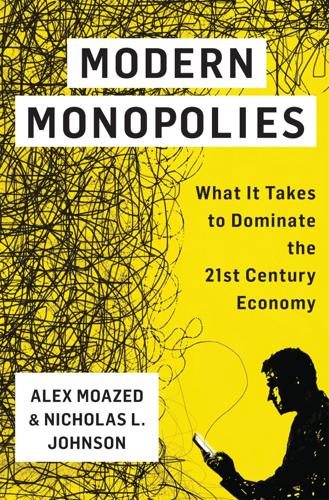
Modern Monopolies: What It Takes to Dominate the 21st Century Economy
by
Alex Moazed
and
Nicholas L. Johnson
Published 30 May 2016
Betting the FarmVille After Facebook launched its developer platform at its F8 conference on May 24, 2007, another gold rush began. Developers flocked to the platform, hoping to capitalize on its “social graph”—basically a fancy name for the collection of data that articulates the network of social connections among Facebook’s users. Mark Pincus was one of the first to see the social graph’s potential. “What I thought was the ultimate thing you can do—once you bring all of your friends and their friends together—is play games,” Pincus said. “And I’ve always been a closet gamer, but I never have the time and can never get all of my friends together in one place.
…
Specifically, it is believed that the so-called on-demand economy, which includes companies such as Uber, GrubHub, Handy, and delivery platform Postmates, eventually will be aggregated within one “superplatform” that integrates all these platforms via their APIs. However, in reality, this is unlikely to happen because rival platforms rarely play nice. When Twitter tried to build on Facebook’s social graph by allowing users to import Facebook friends, Facebook revoked Twitter’s access to that API. Similarly, in China, Alibaba and Tencent are locked in an ongoing platform war, with each shutting the other out of its ecosystem. This phenomenon isn’t new. Back when eBay was first building its marketplace, several competitors tried to aggregate listings from eBay and other auction sites, but eBay cut off their access, and these aggregators quickly withered away.
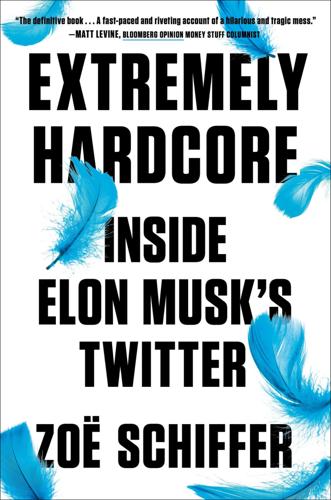
Extremely Hardcore: Inside Elon Musk's Twitter
by
Zoë Schiffer
Published 13 Feb 2024
He was the CEO of Twitter. Dorsey launched Twitter in 2006 with cofounders Biz Stone, Evan Williams, and Noah Glass. In the early days, the platform was full of promise—the buzziest of the buzzy social apps. While Facebook allowed people to connect, Twitter encouraged them to follow, pioneering a one-way social graph that attracted scores of high-profile users. Twitter had its hooks in people from the start. Dorsey, Stone, and Williams debuted the app at SXSW in Austin, Texas. Rather than give a convention center–sanctioned presentation about what they were building, the group spent $11,000 to display tweets on flat-screen TVs along the indoor walkways.
…
The presentation was fairly easy for software engineers to understand but hopelessly complex to everyone else. Under the hood, Twitter was a series of “microservices” that each performed a specific function. For example, there was Tweetypie, which handled tweets; Gizmoduck, which managed user accounts; and Social Graph Service (SGS), which was responsible for information regarding which accounts a user followed or unfollowed. When a Twitter user posted a tweet, that tweet was sent to Tweetypie for storage. If that user changed the photo on their profile, that change would be recorded in Gizmoduck. And then, when it came time to relay their tweets and profile to other users on Twitter, a fanout service was responsible for ferrying the tweet over to the home timeline and search.
…
More than 15 million accounts voted, with 51.8 percent of respondents saying yes. “Vox populi, vox Dei,” Musk responded, meaning, “the voice of the people is the voice of God.” Trump’s account was coming back. The move presented a problem for Twitter engineers. It wasn’t as simple as flipping a switch. Every time an account was reinstated, they had to rebuild a social graph, activating data on who the account followed and who followed the account. Every time someone followed, blocked, or muted another user, that connection was recorded. For an account like Trump’s, with eighty-eight million followers, that was millions of pieces of data that Twitter had to update and maintain.
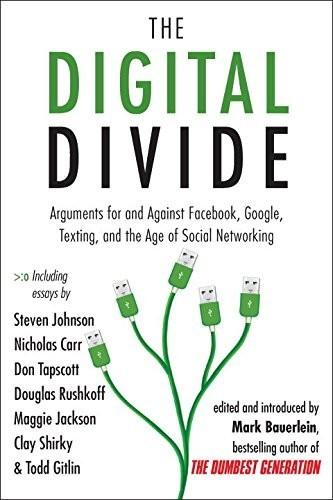
The Digital Divide: Arguments for and Against Facebook, Google, Texting, and the Age of Social Netwo Rking
by
Mark Bauerlein
Published 7 Sep 2011
Take for example the domain registries of the DNS, which are a backbone service of the Internet. Or consider CDDB, used by virtually every music application to look up the metadata for songs and albums. Mapping data from providers like Navteq and TeleAtlas is used by virtually all online mapping applications. There is a race on right now to own the social graph. But we must ask whether this service is so fundamental that it needs to be open to all. It’s easy to forget that only fifteen years ago, e-mail was as fragmented as social networking is today, with hundreds of incompatible e-mail systems joined by fragile and congested gateways. One of those systems—Internet RFC 822 e-mail—became the gold standard for interchange.
…
Larry Page and Sergey Brin realized that a link is a vote. Marc Hedlund at Wesabe realized that every credit card swipe is also a vote, that there is hidden meaning in repeated visits to the same merchant. Mark Zuckerberg at Facebook realized that friend relationships online actually constitute a generalized social graph. They thus turn what at first appeared to be unstructured into structured data. And all of them used both machines and humans to do it. . . . >>> the rise of real time: a collective mind As it becomes more conversational, search has also gotten faster. Blogging added tens of millions of sites that needed to be crawled daily or even hourly, but microblogging requires instantaneous update—which means a significant shift in both infrastructure and approach.
…
See Search Engine Results Page Sesame Street Shakesville (blog) Shirky, Clay Shoutcast Simulations Six Degrees: The Science of a Connected Age (Watts) Skrenta, Rich “Skyful of Lies” and Black Swans (Gowing) Slashdot Slatalla, Michelle Slate (magazine) Sleeper Curve Slingbox SLVR phone Small world experiment Social currency Social graph Social media Social mind The Social Network (film) Social networking sites. See also specific sites activism and advertising on amount of users on development of identity setup on learning and marketing on politicians on privacy dangers and self-exposure through self-portraits on spam on weak ties on Social rules and norms Social saturation Social skills Socrates Solitude Sony Soundscape, cell phones and SourceForge.net South Korea Spamming, on social network sites Speech recognition Speed, Net Geners and Spengler, Oswald Splash screens Spotlight (blog) Squarciafico, Hieronimo Standage, Tom Starbucks Starkweather, Gary Star Trek (television series) Star Wars Stone, Linda Street Fighter II (video game) “The Strength of Weak Ties” (Granovetter) StyleDiary.net Suburbanization Sundance Resort Suriowecki, James Survival of the fittest Survivor (television series) Swados, Harvey Swarm intelligence Switch costs Tagging TakingITGlobal Task management Task switching Taylor, Frederick Winslow Teachout, Zephyr Techgnosis Technics and Civilization (Mumford) Techno-brain burnout Technology Education and Design (TED) Technomadicity Technorati TED.

This Is for Everyone: The Captivating Memoir From the Inventor of the World Wide Web
by
Tim Berners-Lee
Published 8 Sep 2025
He founded Project Liberty, an NGO that ‘builds solutions that help people take back control of their digital lives’. Frank, like me, is concerned about the damage that social networks are doing, which he sees as a result of their ownership of what he terms the ‘social graph’ – the unique set of connections with other users that we build through our interactions online. Frank, like me, is also concerned that the lack of interoperability between social media systems means that users can’t import their social graphs from one platform to the next. For this reason, Frank wants to develop alternatives to the eye-ball-maximizing approach that TikTok has used to capture the attention of the world’s teenagers.
…
R. ref1 MasterCard ref1 Mastodon ref1, ref2 mathematics ref1, ref2, ref3, ref4 Matrix ref1 media industry ref1 mental health and social media ref1, ref2, ref3 ‘Mesh’ memo ref1 Meta ref1, ref2, ref3 see also Facebook metadata ref1 metasystems ref1 Metaverse ref1 Metcalf, Bob ref1 MeWe ref1 micropayments ref1 microprocessors ref1, ref2 Microsoft ActiveX ref1 Clippy ref1 Copilot ref1 copyright infringement ref1 early lack of browser ref1 Internet Explorer ref1, ref2, ref3, ref4, ref5 MS-DOS ref1 Office ref1 standards ref1, ref2 Teams ref1 XML ref1 Microsoft Exchange Server ref1 microtargeting ref1, ref2 Middle Earth ref1 Middle Earth map ref1 military applications ref1 Millennium Technology Prize ref1 Miller, Kaia ref1 Minnesota, University of ref1, ref2 misinformation ref1, ref2 MIT Center for Constructive Communication ref1 Computer Science and Artificial Intelligence Lab (CSAIL) ref1, ref2 speaking tours ref1 Tim Berners-Lee’s arrival ref1 Tim Berners-Lee’s early visits ref1, ref2 World Wide Web Consortium (W3C) ref1, ref2, ref3 mobile phones CSS (cascading style sheets) ref1 licences legislation ref1 touchscreens ref1 see also smartphones model railway ref1 modems broadband ref1 dial-up ref1, ref2 download speeds ref1, ref2 Moffat, John ref1, ref2, ref3 monopolization ref1, ref2, ref3, ref4, ref5, ref6 Montulli, Lou ref1 moon landings ref1 Moore’s Law ref1 Morsi, Mohammed ref1 Mosaic browser ref1, ref2, ref3, ref4 ‘The Mother of all Demos’ (Engelbart) ref1 motivation-hygiene theory ref1 Motorola ref1 Mount Stromlo Observatory ref1 Mozilla foundation ref1, ref2, ref3 MP3s ref1 Mubarak, Hosni ref1 multimedia ref1, ref2 Murthy, Vivek ref1 music collaboration ref1 copyright ref1 illuminated Italian Renaissance website ref1 MP3s ref1 recommendation services ref1, ref2 Tim Berners-Lee’s interest ref1 Musk, Elon ref1, ref2 MyData ref1 MySpace ref1 Myst (game) ref1 narrowcasting ref1, ref2, ref3 National Science Foundation ref1 National Theatre, London ref1 Naver Maps ref1 NCSA (National Center for Supercomputing Applications) ref1, ref2, ref3, ref4, ref5, ref6 Nelson, Ted ref1, ref2 neoliberalism ref1 net neutrality ref1, ref2, ref3 Netflix ref1, ref2 netiquette ref1 Netscape ref1, ref2, ref3, ref4, ref5, ref6 networking fractal ref1 humans as social animals ref1 neural networks ref1, ref2, ref3, ref4 URLs ref1 New York Times, The ref1, ref2, ref3 Newmark, Craig ref1 news organizations ref1 newsgroups ref1, ref2 NeXT ref1, ref2, ref3, ref4, ref5, ref6, ref7, ref8 NFT of original WWW code ref1 Ng, Andrew ref1 NHS ref1, ref2 Nigeria ref1 Nilekani, Nandan ref1 9/11 attacks ref1, ref2 Nix, Alexander ref1 Nobel Prize ref1, ref2, ref3, ref4 Nokia ref1 nuclear weapons ref1 Nupedia ref1 Nvidia ref1, ref2 Objective-C code ref1 Olympics, 2012 London ref1, ref2 Ong, Jonathan Corpus ref1 Open Data Institute (ODI) ref1, ref2, ref3, ref4 see also Solid open-source software ref1, ref2, ref3, ref4, ref5, ref6 Open Systems Interconnection (OSI) ref1 OpenAI ref1, ref2, ref3, ref4, ref5 OpenStreetMap ref1, ref2 Opera browser ref1, ref2, ref3, ref4 Opzoomer, Indi (Leith) ref1 Opzoomer, Jamie (Leith) ref1 Opzoomer, Lyssie (Leith) ref1 Order of Merit of the British Empire ref1, ref2 O’Reilly ref1, ref2, ref3 Oxford University ref1, ref2, ref3, ref4 PACER ref1 packet-switching ref1 Page, Larry ref1, ref2 PageRank ref1 pantomime ref1 ‘paperclip maximizer’ ref1 paradigm shift, artificial intelligence (AI) ref1 passkeys ref1 passwords ref1 patents ref1 peace ref1 Pellow, Nicola ref1 Penrose, Roger ref1 Pentagon ref1, ref2, ref3 Pets.com ref1 philanthropy ref1 Philippines ref1 photographs, metadata ref1 physics ref1, ref2 pi.ai ref1 Pinterest ref1, ref2 Pioch, Nicolas ref1 plagiary ref1 Plessey ref1, ref2, ref3 Plewe, Brandon ref1 PNG (Portable Network Graphics) ref1 podcasts ref1 PODS (Personal Online Data Stores) ref1, ref2, ref3, ref4, ref5, ref6 polarization ref1, ref2, ref3, ref4, ref5, ref6 Polis ref1 Pollerman, Bernd ref1 Polly, Jean Armour ref1 Poole ref1 Pordes, Ruth ref1 Postel, Jon ref1 Postscript language ref1 Priceline ref1 printers, dot-matrix ref1 printing presses ref1, ref2 privacy apps ref1 Contract for the Web ref1, ref2 data sovereignty ref1, ref2, ref3, ref4, ref5, ref6, ref7, ref8 location data ref1 MyData ref1 principle ref1, ref2 regulations ref1 RSA system ref1 Solid ref1, ref2 Prodigy ref1 programming languages ECMAScript ref1 HTML5 ref1 Java ref1 Objective-C ref1 Python ref1, ref2 Timpl ref1 Unix ref1 see also HTML Project Liberty ref1 protein-folding ref1, ref2 protocols CERN ref1 internet ref1, ref2 open ref1 see also HTTP; Solid provenance ref1 Prud’hommeaux, Eric ref1 public-key encryption ref1, ref2, ref3 punting ref1 Purnell, ‘Daffy’ ref1 Putz, Steve ref1 Python ref1, ref2, ref3, ref4, ref5 quantum mechanics 151n queuing theory ref1, ref2 Quicken ref1 Quint, Vincent ref1 Raggett, Dave ref1, ref2 RAGs (Retrieval-Augmented Generation systems) ref1 railway, model ref1 The Ranch ref1 Raytheon ref1 RDF (Resource Description Format) ref1, ref2 read–write web ref1 Readers ref1, ref2 RECAP ref1 Reddit ref1, ref2, ref3 religion ref1, ref2, ref3 retail sites ref1, ref2 Richmond Park ref1 Rimmer, Peggie ref1, ref2, ref3, ref4, ref5, ref6 Rivest, Ron ref1, ref2 Rogers, Kevin ref1, ref2 Rouse, Paul ref1, ref2 Royal Society ref1 RSA system ref1, ref2, ref3, ref4 RSS (Really Simple Syndication) ref1, ref2 running ref1, ref2 Rwanda ref1 Safari ref1, ref2 Sahel ref1 sailing ref1, ref2 Sainsbury’s ref1 Sandberg, Sheryl ref1 Sanger, Larry ref1 Sawadogo, Yacouba ref1 Scheifler, Bob 118n Schneier, Bruce ref1 schools ref1, ref2, ref3 science fiction ref1, ref2, ref3 Science Museum, London ref1 search engines ref1, ref2, ref3, ref4, ref5 see also Google Searls, Doc ref1 Second Life ref1 secure systems ref1 Segal, Ben ref1, ref2 semantic web Applied Semantics ref1 initial concept ref1 ‘layer cake’ ref1 machine learning ref1 PODS (Personal Online Data Stores) ref1 RDF (Resource Description Format) ref1 semantic winter ref1 Semantic Web Institute ref1 Sendall, Mike ref1, ref2, ref3, ref4, ref5, ref6 Seoul Peace Prize ref1, ref2 server software ref1, ref2 Sesri, Rudina ref1, ref2, ref3, ref4 SGML (Standard Generalized Markup Language) ref1, ref2 Shadbolt, Nigel ref1, ref2 Shamir, Adi ref1 Sheen Mount school ref1 Silicon Valley ref1, ref2 silos ref1, ref2, ref3, ref4 simplified text ref1 singularity ref1 Siri ref1, ref2 skiing ref1, ref2, ref3 Slack ref1 Slashdot ref1 slashdotting ref1 Smarr, Larry ref1 smartphones apps ref1, ref2 children ref1 global growth ref1, ref2 interoperability ref1 Smith, Adam ref1, ref2 Social Dilemma, The (film, 2020) ref1 social media addiction ref1, ref2, ref3, ref4 advertisements ref1, ref2, ref3 algorithms ref1, ref2, ref3, ref4, ref5, ref6 Arab Spring ref1 attention economy ref1, ref2 collaborative filtering and polarization ref1 early development ref1 Institute for Rebooting Social Media ref1 liability of hosts ref1 mental health ref1 mental health issues ref1, ref2 MeWe ref1 silos ref1 social graph ownership ref1 users as the product ref1, ref2 social trust ref1 software copyright development ref1 open-source ref1, ref2, ref3, ref4, ref5, ref6 Solid (Social Linked Data protocol) adoption ref1, ref2, ref3, ref4, ref5 Charlie ref1, ref2 development ref1, ref2 functionality ref1, ref2, ref3 Inrupt ref1 organization and structure ref1 potential ref1 Seoul Peace Prize ref1 server protocol ref1 trust ref1 see also PODS; data wallets Sollins, Karen ref1 Sony ref1 South Korea ref1, ref2 spiders ref1 Spotify ref1, ref2, ref3 Spyglass ref1 standards ref1, ref2, ref3, ref4, ref5 see also protocols; World Wide Web Consortium Stanford Linear Accelerator Center (SLAC) ref1, ref2, ref3 stock brokers ref1, ref2 Stoppard, Tom ref1 Stover, Mr (music teacher) ref1 style sheets ref1, ref2, ref3 Suleyman, Mustafa ref1, ref2, ref3 Sun Microsystems ref1 Sunak, Rishi ref1 superintelligence ref1 surveillance ref1, ref2, ref3, ref4, ref5, ref6 Swick, Ralph ref1 Switzerland ref1, ref2, ref3 T-Mobile ref1 tabulator ref1 tags ref1 Tahrir Square ref1 Taiwan ref1 TCP/IP ref1, ref2 TED talks ref1, ref2, ref3 teleconferencing ref1, ref2, ref3 teletypes ref1 television cathode-ray tubes ref1 closed captioning ref1 Telnet ref1 Tencent ref1 Texas Instruments ref1 text-to-speech services ref1 third-party distribution networks ref1, ref2 This Is For Everyone ref1, ref2 TikTok ref1, ref2 timbl ref1 Time magazine ref1 Timpl ref1 Tolkein, J.
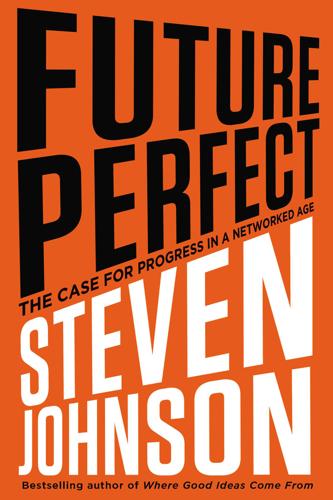
Future Perfect: The Case for Progress in a Networked Age
by
Steven Johnson
Published 14 Jul 2012
The company wants to strengthen the social ties that allow humans around the planet to connect, organize, converse, and share. At one point, Zuckerberg writes: By helping people form these connections, we hope to rewire the way people spread and consume information. We think the world’s information infrastructure should resemble the social graph—a network built from the bottom up or peer-to-peer, rather than the monolithic, top-down structure that has existed to date. In other words, the Facebook platform is a continuation of the Web and Internet platforms that lie beneath it: it is a Baran Web, not a Legrand Star. And it considers the cultivation and proliferation of Baran Webs to be its defining mission.
…
So when you hear one of the richest and most influential young men in the world delivering that sermon—in an S-1 filing, no less—it’s hard to hold back from shouting out a few hallelujahs. But there’s a difference here, one that makes all the difference. The platforms of the Web and the Internet were pure peer networks, owned by everyone. Facebook is a private corporation; the social graph that Zuckerberg celebrates is a proprietary technology, an asset owned by the shareholders of Facebook itself. And as far as corporations go, Facebook is astonishingly top-heavy: the S-1 revealed that Zuckerberg personally controls 57 percent of Facebook’s voting stock, giving him control over the company’s destiny that far exceeds anything Bill Gates or Steve Jobs ever had.

Character Limit: How Elon Musk Destroyed Twitter
by
Kate Conger
and
Ryan Mac
Published 17 Sep 2024
She was already worried about the consequences for Twitter itself. Removing an account like Trump’s, which occupied a large chunk of Twitter’s social graph—the web of following and follower connections between users—could easily crash the entire service. Freezing the account was only part of the process. It also had to be removed from the social graph—other users’ follower and following lists—and from the thousands of block lists of people who had gotten fed up with seeing Trump in their feeds. She called several engineers who worked on the social graph and warned them that Trump was about to go, and that he might take the entire site with him.
…
If it were leaked, the employees who had made the decision to ban Trump would be anonymous. Then, just after 3:00 p.m., it was time. On the internal dashboard that governed all Twitter accounts, there was a big red button: “PERM-SUSPEND.” If clicked, it would permanently terminate a user’s account, erasing their social graph. Harvey decided she would be the one to click it. Roth stood up from his desk and walked upstairs to his living room, where his husband sat watching the news. “Something is about to happen,” Roth said. Moments later, the news broke: @RealDonaldTrump was gone. The days of collective deliberation didn’t stop Dorsey from once again second-guessing Gadde and her team in public.
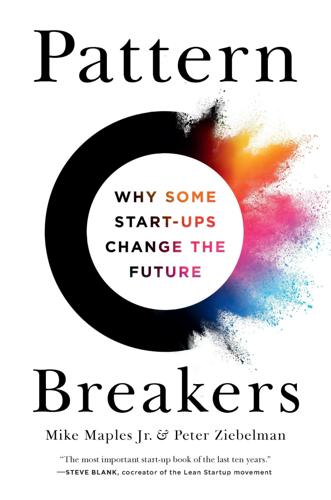
Pattern Breakers: Why Some Start-Ups Change the Future
by
Mike Maples
and
Peter Ziebelman
Published 8 Jul 2024
Chegg thought it had found a fairly safe niche: classified ads catering to college students’ needs, from textbooks to furniture. Facebook seemed more interested in social utility capabilities like sharing photos, making friend connections, and finding ways for people to connect in what they called a “social graph” than in entering the market for e-commerce and auctions. Chegg’s progress was consistent, and the future seemed promising. But its cash balance was low, and it would soon need to begin fundraising. That didn’t seem like a huge problem, considering its success to date as a classifieds site and its revenue growth expectations.
…
By blending new opportunities with existing proprietary assets, Apple demonstrates that large companies can indeed have an “unfair” advantage in innovation, particularly when they strategically identify opportunities that are uniquely aligned with their existing strengths. Facebook combined the power of new inflections in mobile technology with its existing distribution and social graph when it bought Instagram. Google combined its reach with the inflection of user-generated content when it acquired YouTube. REWARDING SUCCESSFUL FAILURE People in big companies have careers to protect. Left to their own devices, they will pursue less risky paths and initiatives. To achieve pattern-breaking results, the CEO of a company must be committed to taking the risks necessary to win in new lines of business.
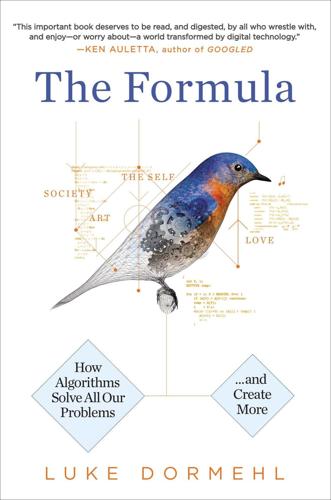
The Formula: How Algorithms Solve All Our Problems-And Create More
by
Luke Dormehl
Published 4 Nov 2014
If it spots another phone with a good match—male or female—the two handsets beep and exchange information using Bluetooth radio technology. The rest is up to you.25 Apps like Serendipity are part of a new trend in technology called social discovery, which has grown out of social networking. Where social networking is about connecting with people already on your social graph, social discovery is all about meeting new people. There are few better examples in this book of The Formula in action than MIT’s Serendipity system. Here is a problem (“chance”) and a task (“making it more efficient”). Executed correctly, the computer might provide an answer to the question asked by Humphrey Bogart’s character in Casablanca.
…
In the case of a company like Google, the answer is simple: to the company’s shareholders, of course. Facebook’s algorithms can similarly be viewed as a formula for maintaining and building your friendship circle—but of course the reality is that Facebook’s purpose isn’t to make you friends, but rather to monetize your social graph through advertising.41 Hopefully, this questioning process is starting to happen. A number of researchers working with recommender systems have told me how user expectations have changed in recent years. Where five or ten years ago, people would be happy with any recommendations, today an increasing number want to know why these recommendations have been made for them.
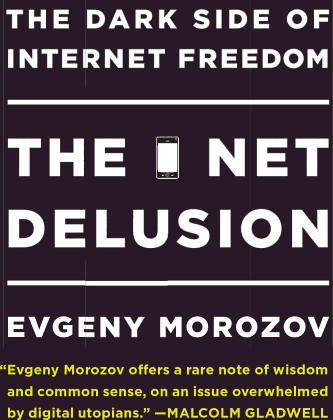
The Net Delusion: The Dark Side of Internet Freedom
by
Evgeny Morozov
Published 16 Nov 2010
As the Web becomes even more social, nothing prevents governments—or any other interested players—from building censorship engines powered by recommendation technology similar to that of Amazon and Netflix. The only difference, however, would be that instead of being prompted to check out the “recommended” pages, we’d be denied access to them. The “social graph”—a collection of all our connections across different sites (think of a graph that shows everyone you are connected to on different sites across the Web, from Facebook to Twitter to YouTube)—a concept so much beloved by the “digerati,” could encircle all of us. The main reason why censorship methods have not yet become more social is because much of our Internet browsing is still done anonymously.
…
There are plenty of things to be done to protect against this new, more aggressive kind of censorship. One is to search for ways to provide mirrors of websites that are under DDoS attacks or to train their administrators, many of whom are self-taught and may not be managing the crisis properly, to do so. Another is to find ways to disrupt, mute, or even intentionally pollute our “social graph,” rendering it useless to those who would like to restrict access to information based on user demographics. We may even want to figure out how everyone online can pretend to be an investment banker seeking to read Financial Times! One could also make it harder to hijack and delete various groups from Facebook and other social networking sites.
…
“Data Retention and the Panoptic Society: The Social Benefits of Forgetfulness.” Information Society 18, no. 1 (2002): 33-45. “Bloggery Soobwajut, Chto FSB Prosit Udaljat’ Posty na Temu Akcij Protesta.” Rambler-Novosti, December 24, 2008. news.rambler.ru/Russia/head/1634066/?abstroff=0 . Bonneau, J., J. Anderson, R. Anderson, and F. Stajano. “Eight Friends Are Enough: Social Graph Approximation via Public Listings.” In Proceedings of the Second ACM EuroSys Workshop on Social Network Systems, 13-18. 2009. Bunyan, T. “Just over the Horizon: The Surveillance Society and the State in the EU.” Race & Class 51, no. 3 (2010): 1. “Cambodia Shuts Off SMS Ahead of Elections.” Associated Press, April 2, 2007.

Smart Cities: Big Data, Civic Hackers, and the Quest for a New Utopia
by
Anthony M. Townsend
Published 29 Sep 2013
In her most influential book, The Death and Life of Great American Cities, the acclaimed urbanist Jane Jacobs argued that “cities have the capability of providing something for everybody, only because, and only when, they are created by everybody.”39 Yet over fifty years later, as we set out to create the smart cities of the twenty-first century, we seem to have again forgotten this hard-learned truth. But there is hope that a new civic order will arise in smart cities, and pull every last one of us into the effort to make them better places. Cities used to be full of strangers and chance encounters. Today we can mine the social graph in an instant by simply taking a photo. Algorithms churn in the cloud, telling the little things in our pocket where we should eat and whom we should date. It’s a jarring transformation. But even as old norms fade into the past, we’re learning new ways to thrive on mass connectedness. A sharing economy has mushroomed overnight, as people swap everything from spare bedrooms to cars, in a synergistic exploitation of new technology and more earth-friendly consumption.
…
From the three hundred or so students and friends who used the service during their grad school days, membership expanded to a thousand at the new startup’s launch. Within a year, over thirty thousand people had logins.21 As Dodgeball became a virtual dashboard for a certain slice of Manhattan’s digerati, its social graph—the web of friendships recorded in its database, and the flow of check-ins its users created—formed a new kind of urban media that Crowley and Rainert eagerly employed to design new experiences. One tweak tried to help you make new friends. Normally you only saw the check-ins of your direct friends, but if a friend of a friend checked in nearby, you’d get an alert urging you to go say hi.
…
If it does truly create a new global trade in smart city solutions, local officials may be under more pressure than ever to make sure their dollars go to local firms that could themselves use CityMart for a real shot at larger success. My phone buzzed with directions to my next appointment. That evening I was using Barcelona’s cafés and bars as a kind of virtual conference center, all coordinated through my Foursquare social graph. Haselmayer offered his cynical view of the smart-cities industry, which had gathered in Barcelona for one of its biggest global trade shows to date. “The debate on smart cities has become all about [technical] architecture, where IBM says a smart city is nothing else but a corporation, and you need a good kind of architecture and then everything happens.
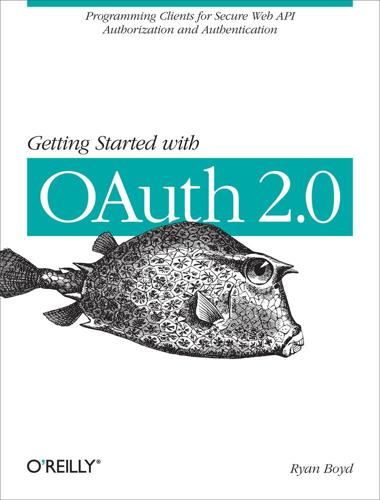
Getting Started With OAuth 2.0
by
Ryan Boyd
Published 29 Feb 2012
Connecting users with their data results in improved day-to-day efficiency by eliminating data silos and also allows developers to differentiate their applications from the competition. OAuth provides the ability for these applications to access a user’s data securely, without requiring the user to take the scary step of handing over an account password. Types of functionality provided by OAuth-enabled APIs include the following: Getting access to a user’s social graph—their Facebook friends, people they’re following on Twitter, or their Google Contacts Sharing information about a user’s activities on your site by posting to their Facebook wall or Twitter stream Accessing a user’s Google Docs or Dropbox account to store data in their online filesystem of choice Integrating business applications with one another to drive smarter decisions by mashing up multiple data sources such as a Salesforce CRM and TripIt travel plan In order to access or update private data via each of these APIs, an application needs to be delegated access by the owner of the data.

The Age of Surveillance Capitalism
by
Shoshana Zuboff
Published 15 Jan 2019
At Google she led the development of surveillance capitalism through the expansion of AdWords and other aspects of online sales operations.86 One investor who had observed the company’s growth during that period concluded, “Sheryl created AdWords.”87 In signing on with Facebook, the talented Sandberg became the “Typhoid Mary” of surveillance capitalism as she led Facebook’s transformation from a social networking site to an advertising behemoth. Sandberg understood that Facebook’s social graph represented an awe-inspiring source of behavioral surplus: the extractor’s equivalent of a nineteenth-century prospector stumbling into a valley that sheltered the largest diamond mine and the deepest gold mine ever to be discovered. “We have better information than anyone else. We know gender, age, location, and it’s real data as opposed to the stuff other people infer,” Sandberg said.
…
The EFF also found that the company chose to hold security functions hostage to personal data flows, claiming that security updates for the operating system would not function properly if users chose to limit location reporting.117 In 2016 Microsoft acquired LinkedIn, the professional social network, for $26.2 billion. The aim here is to establish reliable supply routes to the social network dimension of surplus behavior known as the “social graph.” These powerful new flows of social surplus from 450 million users can substantially enhance Microsoft prediction products, a key fact noted by Nadella in his announcement of the acquisition to investors: “This can drive targeting and relevance to the next level.”118 Of the three key opportunities that Nadella cited to investors upon the announcement of the acquisition, one was “Accelerate monetization through individual and organization subscriptions and targeted advertising.”
…
And, like many developers who build those apps, Niantic keeps that information.” Whereas other location-based apps might collect similar data, Bernstein concluded that “Pokémon Go’s incredibly granular, block-by-block map data, combined with its surging popularity, may soon make it one of, if not the most, detailed location-based social graphs ever compiled.”47 The industry news site TechCrunch raised similar concerns regarding the game’s data-collection practices, questioning “the long list of permissions the app requires.” Those permissions included the camera, yes, but also permission to “read your contacts” and “find accounts on device.”
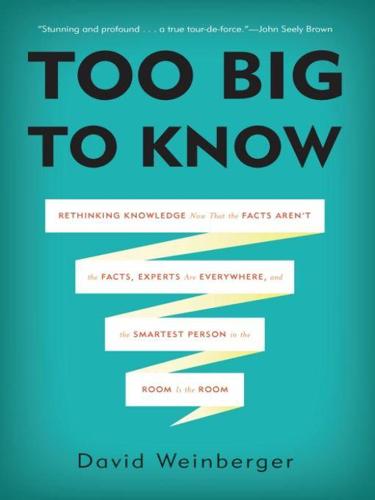
Too Big to Know: Rethinking Knowledge Now That the Facts Aren't the Facts, Experts Are Everywhere, and the Smartest Person in the Room Is the Room
by
David Weinberger
Published 14 Jul 2011
Disclosure: I am a member of the Digital Public Library of America’s “technical workstream,” and the library lab that I co-direct will have entered the DPLA’s call for project ideas before this book is printed. 4 Kevin Kelly, What Technology Wants (Penguin, 2010). 5 James Aitken Wylie, The History of Protestantism with Five Hundred and Fifty Illustrations by the Best Artist, Vol. 1 (Cassell, 1899), p. 113, http://books.google.com/books?id=kFU-AAAAYAAJ. 6 See Ethan Zuckerman’s excellent post “Shortcuts in the Social Graph,” October 14, 2010, http://www.ethanzuckerman.com/blog/2010/10/14/shortcuts-in-the-social-graph/. 7 During the 2008 presidential campaign, Sarah Palin was accused of pressuring a local librarian to censor some books. See Rindi White, “Palin Pressured Wasilla Librarian,” Anchorage Daily News, September 4, 2008, http://www.adn.com/2008/09/03/515512/palin-pressured-wasilla-librarian.html. 8 Tim Berners-Lee, “Linked Data,” July 27, 2006, http://www.w3.org/DesignIssues/LinkedData.html. 9 This was the price quoted at Fisher Scientific on June 11, 2011.
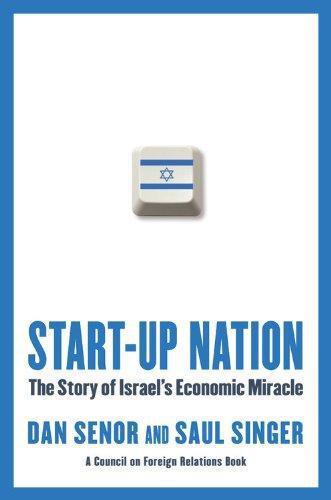
Start-Up Nation: The Story of Israel's Economic Miracle
by
Dan Senor
and
Saul Singer
Published 3 Nov 2009
Alex Vieux, CEO of Red Herring magazine, told us that he has been to “a million high-tech conferences, on multiple continents. I see Israelis like Medved give presentations all the time, alongside their peers from other countries. The others are always making a pitch for their specific company. The Israelis are always making a pitch for Israel.”9 CHAPTER 4 Harvard, Princeton, and Yale The social graph is very simple here. Everybody knows everybody. —YOSSI VARDI DAVID AMIR MET US AT HIS JERUSALEM HOME in his pilot’s uniform, but there was nothing Top Gun about him. Soft-spoken, thoughtful, and self-deprecating, he looked, even in uniform, more like an American liberal arts student than the typical pilot with crisp military bearing.
…
“The whole country is one degree of separation,” says Yossi Vardi, the godfather of dozens of Internet start-ups and one of the champion networkers in the wired world. Like Jon Medved, Vardi is one of Israel’s legendary business ambassadors. Vardi says he knows of Israeli companies that have stopped using help-wanted ads: “It’s now all word of mouth. . . . The social graph is very simple here. Everybody knows everybody; everybody was serving in the army with the brother of everybody; the mother of everybody was the teacher in their school; the uncle was the commander of somebody else’s unit. Nobody can hide. If you don’t behave, you cannot disappear to Wyoming or California.

Blitzscaling: The Lightning-Fast Path to Building Massively Valuable Companies
by
Reid Hoffman
and
Chris Yeh
Published 14 Apr 2018
For example, the iTunes store takes a 30 percent share of the proceeds whenever a song, a movie, a book, or an app is sold on that platform. These platform revenues tend to have very high gross margins, which generate cash that can be plowed back into making the platform even better. Amazon’s merchant platform, Facebook’s social graph, and, of course, Apple’s iOS ecosystem are great examples of the power of platforms. PROVEN PATTERN #3: FREE OR FREEMIUM “Free” has an incredible power that no other pricing does. The Duke behavioral economist Dan Ariely wrote about the power of free in his excellent book Predictably Irrational, describing an experiment in which he offered research subjects the choice of a Lindt chocolate truffle for 15 cents or a Hershey’s Kiss for a mere penny.
…
Network Effects We’ve already talked about how Facebook leverages classic direct network effects (the more users that join the platform, the greater the value of Facebook to every other Facebook user) and local network effects (once it becomes the dominant social network at a college, it becomes extremely difficult for any other player to pry away Facebook’s users). Facebook also experiences some helpful indirect network effects thanks to its platform services, such as the Graph API (which allows developers to leverage the Facebook social graph of users and their relationships) and Facebook Connect (which allows users to log in to a Web service using Facebook rather than create a new account for that service). Product/Market Fit Facebook achieved product/market fit for its core consumer experience almost immediately, hence its rapid growth.

Possible Minds: Twenty-Five Ways of Looking at AI
by
John Brockman
Published 19 Feb 2019
Better to pass out free copies of a simple semi-autonomous code, hosted locally, and let the social network update itself. This code is executed by digital computers, but the analog computing performed by the system as a whole far exceeds the complexity of the underlying code. The resulting pulse-frequency coded model of the social graph becomes the social graph. It spreads wildly across the campus and then the world. What if you wanted to build a machine to capture what everything known to the human species means? With Moore’s Law behind you, it doesn’t take too long to digitize all the information in the world. You scan every book ever printed, collect every email ever written, and gather forty-nine years of video every twenty-four hours, while tracking where people are and what they do, in real time.

Turing's Cathedral
by
George Dyson
Published 6 Mar 2012
So as not to shoot down commercial airliners, the SAGE (Semi-Automatic Ground Environment) air defense system that developed out of MIT’s Project Whirlwind in the 1950s kept track of all passenger flights, developing a real-time model that led to the SABRE (Semi-Automatic Business-Related Environment) airline reservation system that still controls much of the passenger traffic today. Google sought to gauge what people were thinking, and became what people were thinking. Facebook sought to map the social graph, and became the social graph. Algorithms developed to model fluctuations in financial markets gained control of those markets, leaving human traders behind. “Toto,” said Dorothy in The Wizard of Oz, “I’ve a feeling we’re not in Kansas anymore.” What the Americans termed “artificial intelligence” the British termed “mechanical intelligence,” a designation that Alan Turing considered more precise.
…
Pulse-frequency coding for the Internet is one way to describe the working architecture of a search engine, and PageRank for neurons is one way to describe the working architecture of the brain. These computational structures use digital components, but the analog computing being performed by the system as a whole exceeds the complexity of the digital code on which it runs. The model (of the social graph, or of human knowledge) constructs and updates itself. Complex networks—of molecules, people, or ideas—constitute their own simplest behavioral descriptions. This behavior can be more easily captured by continuous, analog networks than it can be defined by digital, algorithmic codes. These analog networks may be composed of digital processors, but it is in the analog domain that the interesting computation is being performed.

To Save Everything, Click Here: The Folly of Technological Solutionism
by
Evgeny Morozov
Published 15 Nov 2013
(And even those human freelancers might become unnecessary once automated image-recognition software gets better.) Most importantly, there was no way for all our friends to see the contents of our trash bins; fifteen years ago, even our personal websites wouldn’t get the same level of attention from our acquaintances—our entire “social graph,” as the geeks would put it—that our trash bins might receive from our Facebook friends today. Now that we are all using the same platform—Facebook—it becomes possible to steer our behavior with the help of social games and competitions; we no longer have to save the environment at our own pace using our own unique tools.
…
All will be tempted to exploit the power of these new techniques, either individually or in combination, to solve a particular problem, be it obesity, climate change, or congestion. Today we already have smart mirrors that, thanks to complex sensors, can track and display our pulse rates based on slight variations in the brightness of our faces; soon, we’ll have mirrors that, thanks to their ability to tap into our “social graph,” will nudge us to lose weight because we look pudgier than most of our Facebook friends. Or consider a prototype teapot built by British designer-cum-activist Chris Adams. The teapot comes with a small orb that can either glow green (making tea is okay) or red (perhaps you should wait). What determines the coloring?
…
If the Quantified Self movement allows us to establish our authenticity with numbers, social networking allows us to accomplish that in subtler, seemingly more creative ways: by curating the timeline of our life, by uploading our favorite photos, by using the coolest apps on the block, by maintaining a unique social graph (Facebook speak for a set of human connections that each user has). If only one looks closely enough, one can discern how the themes of fakeness and authenticity shape Facebook’s own self-presentation. So Mark Zuckerberg claims that “the social web can’t exist until you are your real self online.”
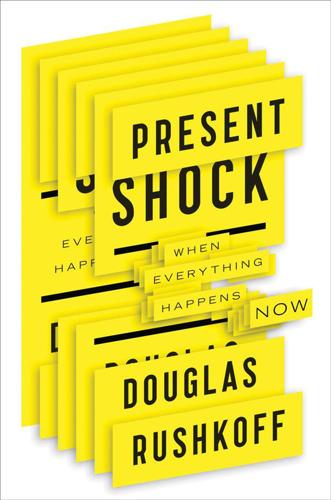
Present Shock: When Everything Happens Now
by
Douglas Rushkoff
Published 21 Mar 2013
It’s as if all the Facebook updates, Twitter streams, email messages, and live-streamed video could combine to create a total picture of our true personal status, or that of our business, at any given moment. And there are plenty of companies out there churning all this data in real time in order to present us with metrics and graphs claiming to represent the essence of this reality for us. And even when they work, they are mere snapshots of a moment ago. Our Facebook profile and the social graph that can be derived from it, however intricate, is still just a moment locked in time, a static picture. This quest for digital omniscience, though understandable, is self-defeating. Most of the information we get at lightning speed is so temporal as to be stale by the time it reaches us. We scramble over the buttons of the car radio in an effort to get to the right station at the right minute-after-the-hour for the traffic report.
…
A change in file format renders decades of stored files unusable, while a silly, forgotten Facebook comment we wrote when drunk can resurface at a job interview. In the digital universe, our personal history and its sense of narrative is succeeded by our social networking profile—a snapshot of the current moment. The information itself—our social graph of friends and likes—is a product being sold to market researchers in order to better predict and guide our futures. Using past data to steer the future, however, ends up negating the present. The futile quest for omniscience we looked at earlier in this chapter encourages us, particularly businesses, to seek ever more fresh and up-to-the-minute samples, as if this will render the present coherent to us.
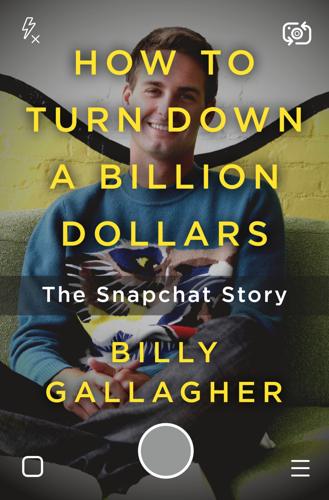
How to Turn Down a Billion Dollars: The Snapchat Story
by
Billy Gallagher
Published 13 Feb 2018
While the front-facing camera on smartphones helped Snapchat gain early traction, smartphones’ address books may have done even more to drive viral growth. Before smartphones were ubiquitous, Facebook (and others) had to work extremely hard to build a social graph on the web. But with smartphones, people had a computer in their pockets with a complete social graph—their address book. This allowed Snapchat, Instagram, WhatsApp, and others to quickly build enormously valuable services. Snapchat’s existing users were also sharing more and more photos. This put a heavy strain on Snapchat’s infrastructure, as they had to deliver millions of photographs in real time.

Augmented: Life in the Smart Lane
by
Brett King
Published 5 May 2016
Instructive, simple collaborative filtering. People who bought this book also bought this one. People who liked this song also liked this group. Trust Is Always Social The era of “social logins” like Facebook Connect is one of the most powerful moves made in this regard. It does this by bringing together the power of the social graph into play, augmenting the information we have access to in order to make a decision. I’m a child of the late 1950s, which means I like listening to music made between 1964 and 1977, give or take a few years. Maybe I should just say, “I like music made in the Sixties and Seventies.” Strangely enough, when I go to concerts nowadays, that statement can be interpreted differently: I now spend time listening to musicians who are in their sixties and seventies (and a few in their eighties as well, though I never was a fan of that decade).
…
who amongst my friends has experienced this?). Reputation and rating schemes are ways to standardise some of this feedback: my children tend to check Rotten Tomatoes before they even consider going to see a film. It’s not just about trust: there are many other ways in which the connected world, the social graph, wearables and augmentation improve our lives. Alex described how the quantified self is improved by measuring your own performance against your peers, or even working out with your peers. Peer group data, however, is being used in even simpler ways to form sort of trust “contracts”. All of these social platforms are leading us to make better decisions.
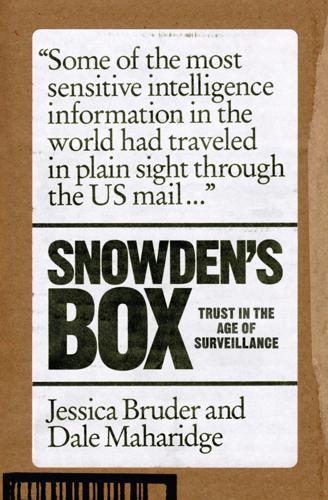
Snowden's Box: Trust in the Age of Surveillance
by
Jessica Bruder
and
Dale Maharidge
Published 29 Mar 2020
I was finishing a book. Laura was editing The Program, a short documentary about William Binney, the NSA-veteran-turned-whistleblower. After a thirty-two-year career with the agency, Binney had retired in disgust following 9/11. That’s when, as he explained in the film, officials began repurposing ThinThread, a social-graphing program he’d built for use overseas, to spy on ordinary Americans instead. “This is something the KGB, the Stasi, or the Gestapo would have loved to have had about their populations,” Binney soberly told the camera. “Just because we call ourselves a democracy doesn’t mean we will stay that way.
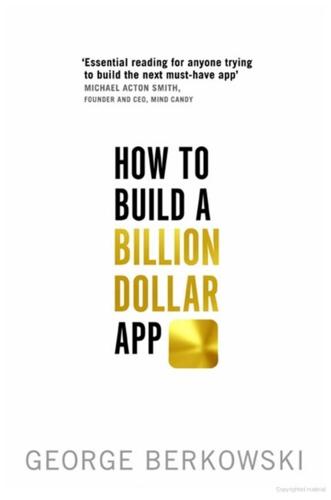
How to Build a Billion Dollar App: Discover the Secrets of the Most Successful Entrepreneurs of Our Time
by
George Berkowski
Published 3 Sep 2014
Here are some great events that will get you talking to the right people. DEVELOPER MEETUPS. Tech companies host all kinds of events to showcase new technologies or features to developers. Facebook has one called Developer Garage. Each month the company invites developers together to talk about the latest features, such as Social Graph, Facebook Search or Facebook advertising. Companies such as Google, Yahoo!, LinkedIn and numerous other big software companies organise similar events all the time. Even though they are targeted at software developers, don’t be scared to attend if you’re not technical. Go along, pretend to be a developer (to get in), enjoy the pizza and beer, and then start talking to anyone and everyone.
…
Blurring Business Models Flipboard has a very simple mission: to let people discover and share online content in beautiful, simple and meaningful ways. About 90 million people regularly use the app and it’s one of my favourite apps, on both the iPad and the iPhone. The first wave of Flipboard’s growth was fuelled by automatically creating ‘personal magazines’ directly from the social graph of its users. Flipboard pulls in stories from your friends’ tweets, Facebook posts and Google+ accounts, and then cleverly curates them into a highly readable format. Its second wave of growth was giving users (including advertisers) the power to create – and distribute – their own magazines. Within months of launching the new magazine-publishing feature, users had created some 3.5 million of them.1 The stats are impressive, with the average user spending 15 minutes browsing the app per session.
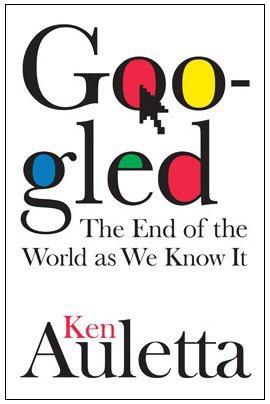
Googled: The End of the World as We Know It
by
Ken Auletta
Published 1 Jan 2009
But his long pauses when asked about Google, and the way he shifted uncomfortably in his chair, suggest the tension between the two companies. He was somewhat less circumspect about MySpace, his main competitor among social networking sites: “What they’re doing is very much different from us. On a fundamental level, what they’re doing is not mapping out real connections. They’re helping people meet new people. Rather than using the social graph and the connections people have in order to facilitate decentralized communication, they’re using it as a platform to pump and push media out to people. They call themselves a next-generation media company. We don’t even think we’re a media company. We’re a technology company.” Facebook is not a content company, he said, just as a telephone company is not.
…
John Borthwick, who created one of the first city Web sites, sold it to AOL in 1997, and later became senior vice president of technology and alliances for Time Warner, thinks Google “lacks a social gene.” (Borthwick has since founded and now runs Betaworks, which seeds money for social media.) Information, he said, “needs a social context. You need to incorporate the social graph [the connections among people] into search. Twitter becomes a platform for search. People put out Tweets—‘I’m thinking about buying a camera. What does anyone think of this camera?’” It’s the wisdom of crowds—your crowd of friends. “Google is just focused on CPU—central processing computers—and ignores the processing of the human brain.”

Monadic Design Patterns for the Web
by
L.G. Meredith
Obviously, in the context of the web, this particular use case is of considerable interest. Nearly every web application is of this form: navigating a tree or graph of pages. Usually, that graph of pages is somehow homomorphic, i.e. an image of, the graph of some underlying domain data structure, like the data structures of employee records in a payroll system or the social graph of a social media application Cover · Overview · Contents · Discuss · Suggest · Glossary · Index 126 Section 6.1 Chapter 6 · Zippers and Contexts and URIs, Oh My! Download from Wow! eBook <www.wowebook.com> like Twitter. Many web applications, such as so-called content management systems, also support the mutation of the graph of pages.

Designing Data-Intensive Applications: The Big Ideas Behind Reliable, Scalable, and Maintainable Systems
by
Martin Kleppmann
Published 17 Apr 2017
The rela‐ tional model can handle simple cases of many-to-many relationships, but as the con‐ nections within your data become more complex, it becomes more natural to start modeling your data as a graph. A graph consists of two kinds of objects: vertices (also known as nodes or entities) and edges (also known as relationships or arcs). Many kinds of data can be modeled as a graph. Typical examples include: Social graphs Vertices are people, and edges indicate which people know each other. The web graph Vertices are web pages, and edges indicate HTML links to other pages. Road or rail networks Vertices are junctions, and edges represent the roads or railway lines between them. Well-known algorithms can operate on these graphs: for example, car navigation sys‐ tems search for the shortest path between two points in a road network, and PageRank can be used on the web graph to determine the popularity of a web page and thus its ranking in search results.
…
Hellerstein: “The Declarative Imperative: Experiences and Conjec‐ tures in Distributed Logic,” Electrical Engineering and Computer Sciences, Univer‐ sity of California at Berkeley, Tech report UCB/EECS-2010-90, June 2010. [33] Jeffrey Dean and Sanjay Ghemawat: “MapReduce: Simplified Data Processing on Large Clusters,” at 6th USENIX Symposium on Operating System Design and Imple‐ mentation (OSDI), December 2004. [34] Craig Kerstiens: “JavaScript in Your Postgres,” blog.heroku.com, June 5, 2013. [35] Nathan Bronson, Zach Amsden, George Cabrera, et al.: “TAO: Facebook’s Dis‐ tributed Data Store for the Social Graph,” at USENIX Annual Technical Conference (USENIX ATC), June 2013. [36] “Apache TinkerPop3.2.3 Documentation,” tinkerpop.apache.org, October 2016. [37] “The Neo4j Manual v2.0.0,” Neo Technology, 2013. [38] Emil Eifrem: Twitter correspondence, January 3, 2014. [39] David Beckett and Tim Berners-Lee: “Turtle – Terse RDF Triple Language,” W3C Team Submission, March 28, 2011. [40] “Datomic Development Resources,” Metadata Partners, LLC, 2013. [41] W3C RDF Working Group: “Resource Description Framework (RDF),” w3.org, 10 February 2004. [42] “Apache Jena,” Apache Software Foundation. 66 | Chapter 2: Data Models and Query Languages [43] Steve Harris, Andy Seaborne, and Eric Prud’hommeaux: “SPARQL 1.1 Query Language,” W3C Recommendation, March 2013. [44] Todd J.
…
The opposite of bounded. 558 | Glossary Index A aborts (transactions), 222, 224 in two-phase commit, 356 performance of optimistic concurrency con‐ trol, 266 retrying aborted transactions, 231 abstraction, 21, 27, 222, 266, 321 access path (in network model), 37, 60 accidental complexity, removing, 21 accountability, 535 ACID properties (transactions), 90, 223 atomicity, 223, 228 consistency, 224, 529 durability, 226 isolation, 225, 228 acknowledgements (messaging), 445 active/active replication (see multi-leader repli‐ cation) active/passive replication (see leader-based rep‐ lication) ActiveMQ (messaging), 137, 444 distributed transaction support, 361 ActiveRecord (object-relational mapper), 30, 232 actor model, 138 (see also message-passing) comparison to Pregel model, 425 comparison to stream processing, 468 Advanced Message Queuing Protocol (see AMQP) aerospace systems, 6, 10, 305, 372 aggregation data cubes and materialized views, 101 in batch processes, 406 in stream processes, 466 aggregation pipeline query language, 48 Agile, 22 minimizing irreversibility, 414, 497 moving faster with confidence, 532 Unix philosophy, 394 agreement, 365 (see also consensus) Airflow (workflow scheduler), 402 Ajax, 131 Akka (actor framework), 139 algorithms algorithm correctness, 308 B-trees, 79-83 for distributed systems, 306 hash indexes, 72-75 mergesort, 76, 402, 405 red-black trees, 78 SSTables and LSM-trees, 76-79 all-to-all replication topologies, 175 AllegroGraph (database), 50 ALTER TABLE statement (SQL), 40, 111 Amazon Dynamo (database), 177 Amazon Web Services (AWS), 8 Kinesis Streams (messaging), 448 network reliability, 279 postmortems, 9 RedShift (database), 93 S3 (object storage), 398 checking data integrity, 530 amplification of bias, 534 of failures, 364, 495 Index | 559 of tail latency, 16, 207 write amplification, 84 AMQP (Advanced Message Queuing Protocol), 444 (see also messaging systems) comparison to log-based messaging, 448, 451 message ordering, 446 analytics, 90 comparison to transaction processing, 91 data warehousing (see data warehousing) parallel query execution in MPP databases, 415 predictive (see predictive analytics) relation to batch processing, 411 schemas for, 93-95 snapshot isolation for queries, 238 stream analytics, 466 using MapReduce, analysis of user activity events (example), 404 anti-caching (in-memory databases), 89 anti-entropy, 178 Apache ActiveMQ (see ActiveMQ) Apache Avro (see Avro) Apache Beam (see Beam) Apache BookKeeper (see BookKeeper) Apache Cassandra (see Cassandra) Apache CouchDB (see CouchDB) Apache Curator (see Curator) Apache Drill (see Drill) Apache Flink (see Flink) Apache Giraph (see Giraph) Apache Hadoop (see Hadoop) Apache HAWQ (see HAWQ) Apache HBase (see HBase) Apache Helix (see Helix) Apache Hive (see Hive) Apache Impala (see Impala) Apache Jena (see Jena) Apache Kafka (see Kafka) Apache Lucene (see Lucene) Apache MADlib (see MADlib) Apache Mahout (see Mahout) Apache Oozie (see Oozie) Apache Parquet (see Parquet) Apache Qpid (see Qpid) Apache Samza (see Samza) Apache Solr (see Solr) Apache Spark (see Spark) 560 | Index Apache Storm (see Storm) Apache Tajo (see Tajo) Apache Tez (see Tez) Apache Thrift (see Thrift) Apache ZooKeeper (see ZooKeeper) Apama (stream analytics), 466 append-only B-trees, 82, 242 append-only files (see logs) Application Programming Interfaces (APIs), 5, 27 for batch processing, 403 for change streams, 456 for distributed transactions, 361 for graph processing, 425 for services, 131-136 (see also services) evolvability, 136 RESTful, 133 SOAP, 133 application state (see state) approximate search (see similarity search) archival storage, data from databases, 131 arcs (see edges) arithmetic mean, 14 ASCII text, 119, 395 ASN.1 (schema language), 127 asynchronous networks, 278, 553 comparison to synchronous networks, 284 formal model, 307 asynchronous replication, 154, 553 conflict detection, 172 data loss on failover, 157 reads from asynchronous follower, 162 Asynchronous Transfer Mode (ATM), 285 atomic broadcast (see total order broadcast) atomic clocks (caesium clocks), 294, 295 (see also clocks) atomicity (concurrency), 553 atomic increment-and-get, 351 compare-and-set, 245, 327 (see also compare-and-set operations) replicated operations, 246 write operations, 243 atomicity (transactions), 223, 228, 553 atomic commit, 353 avoiding, 523, 528 blocking and nonblocking, 359 in stream processing, 360, 477 maintaining derived data, 453 for multi-object transactions, 229 for single-object writes, 230 auditability, 528-533 designing for, 531 self-auditing systems, 530 through immutability, 460 tools for auditable data systems, 532 availability, 8 (see also fault tolerance) in CAP theorem, 337 in service level agreements (SLAs), 15 Avro (data format), 122-127 code generation, 127 dynamically generated schemas, 126 object container files, 125, 131, 414 reader determining writer’s schema, 125 schema evolution, 123 use in Hadoop, 414 awk (Unix tool), 391 AWS (see Amazon Web Services) Azure (see Microsoft) B B-trees (indexes), 79-83 append-only/copy-on-write variants, 82, 242 branching factor, 81 comparison to LSM-trees, 83-85 crash recovery, 82 growing by splitting a page, 81 optimizations, 82 similarity to dynamic partitioning, 212 backpressure, 441, 553 in TCP, 282 backups database snapshot for replication, 156 integrity of, 530 snapshot isolation for, 238 use for ETL processes, 405 backward compatibility, 112 BASE, contrast to ACID, 223 bash shell (Unix), 70, 395, 503 batch processing, 28, 389-431, 553 combining with stream processing lambda architecture, 497 unifying technologies, 498 comparison to MPP databases, 414-418 comparison to stream processing, 464 comparison to Unix, 413-414 dataflow engines, 421-423 fault tolerance, 406, 414, 422, 442 for data integration, 494-498 graphs and iterative processing, 424-426 high-level APIs and languages, 403, 426-429 log-based messaging and, 451 maintaining derived state, 495 MapReduce and distributed filesystems, 397-413 (see also MapReduce) measuring performance, 13, 390 outputs, 411-413 key-value stores, 412 search indexes, 411 using Unix tools (example), 391-394 Bayou (database), 522 Beam (dataflow library), 498 bias, 534 big ball of mud, 20 Bigtable data model, 41, 99 binary data encodings, 115-128 Avro, 122-127 MessagePack, 116-117 Thrift and Protocol Buffers, 117-121 binary encoding based on schemas, 127 by network drivers, 128 binary strings, lack of support in JSON and XML, 114 BinaryProtocol encoding (Thrift), 118 Bitcask (storage engine), 72 crash recovery, 74 Bitcoin (cryptocurrency), 532 Byzantine fault tolerance, 305 concurrency bugs in exchanges, 233 bitmap indexes, 97 blockchains, 532 Byzantine fault tolerance, 305 blocking atomic commit, 359 Bloom (programming language), 504 Bloom filter (algorithm), 79, 466 BookKeeper (replicated log), 372 Bottled Water (change data capture), 455 bounded datasets, 430, 439, 553 (see also batch processing) bounded delays, 553 in networks, 285 process pauses, 298 broadcast hash joins, 409 Index | 561 brokerless messaging, 442 Brubeck (metrics aggregator), 442 BTM (transaction coordinator), 356 bulk synchronous parallel (BSP) model, 425 bursty network traffic patterns, 285 business data processing, 28, 90, 390 byte sequence, encoding data in, 112 Byzantine faults, 304-306, 307, 553 Byzantine fault-tolerant systems, 305, 532 Byzantine Generals Problem, 304 consensus algorithms and, 366 C caches, 89, 553 and materialized views, 101 as derived data, 386, 499-504 database as cache of transaction log, 460 in CPUs, 99, 338, 428 invalidation and maintenance, 452, 467 linearizability, 324 CAP theorem, 336-338, 554 Cascading (batch processing), 419, 427 hash joins, 409 workflows, 403 cascading failures, 9, 214, 281 Cascalog (batch processing), 60 Cassandra (database) column-family data model, 41, 99 compaction strategy, 79 compound primary key, 204 gossip protocol, 216 hash partitioning, 203-205 last-write-wins conflict resolution, 186, 292 leaderless replication, 177 linearizability, lack of, 335 log-structured storage, 78 multi-datacenter support, 184 partitioning scheme, 213 secondary indexes, 207 sloppy quorums, 184 cat (Unix tool), 391 causal context, 191 (see also causal dependencies) causal dependencies, 186-191 capturing, 191, 342, 494, 514 by total ordering, 493 causal ordering, 339 in transactions, 262 sending message to friends (example), 494 562 | Index causality, 554 causal ordering, 339-343 linearizability and, 342 total order consistent with, 344, 345 consistency with, 344-347 consistent snapshots, 340 happens-before relationship, 186 in serializable transactions, 262-265 mismatch with clocks, 292 ordering events to capture, 493 violations of, 165, 176, 292, 340 with synchronized clocks, 294 CEP (see complex event processing) certificate transparency, 532 chain replication, 155 linearizable reads, 351 change data capture, 160, 454 API support for change streams, 456 comparison to event sourcing, 457 implementing, 454 initial snapshot, 455 log compaction, 456 changelogs, 460 change data capture, 454 for operator state, 479 generating with triggers, 455 in stream joins, 474 log compaction, 456 maintaining derived state, 452 Chaos Monkey, 7, 280 checkpointing in batch processors, 422, 426 in high-performance computing, 275 in stream processors, 477, 523 chronicle data model, 458 circuit-switched networks, 284 circular buffers, 450 circular replication topologies, 175 clickstream data, analysis of, 404 clients calling services, 131 pushing state changes to, 512 request routing, 214 stateful and offline-capable, 170, 511 clocks, 287-299 atomic (caesium) clocks, 294, 295 confidence interval, 293-295 for global snapshots, 294 logical (see logical clocks) skew, 291-294, 334 slewing, 289 synchronization and accuracy, 289-291 synchronization using GPS, 287, 290, 294, 295 time-of-day versus monotonic clocks, 288 timestamping events, 471 cloud computing, 146, 275 need for service discovery, 372 network glitches, 279 shared resources, 284 single-machine reliability, 8 Cloudera Impala (see Impala) clustered indexes, 86 CODASYL model, 36 (see also network model) code generation with Avro, 127 with Thrift and Protocol Buffers, 118 with WSDL, 133 collaborative editing multi-leader replication and, 170 column families (Bigtable), 41, 99 column-oriented storage, 95-101 column compression, 97 distinction between column families and, 99 in batch processors, 428 Parquet, 96, 131, 414 sort order in, 99-100 vectorized processing, 99, 428 writing to, 101 comma-separated values (see CSV) command query responsibility segregation (CQRS), 462 commands (event sourcing), 459 commits (transactions), 222 atomic commit, 354-355 (see also atomicity; transactions) read committed isolation, 234 three-phase commit (3PC), 359 two-phase commit (2PC), 355-359 commutative operations, 246 compaction of changelogs, 456 (see also log compaction) for stream operator state, 479 of log-structured storage, 73 issues with, 84 size-tiered and leveled approaches, 79 CompactProtocol encoding (Thrift), 119 compare-and-set operations, 245, 327 implementing locks, 370 implementing uniqueness constraints, 331 implementing with total order broadcast, 350 relation to consensus, 335, 350, 352, 374 relation to transactions, 230 compatibility, 112, 128 calling services, 136 properties of encoding formats, 139 using databases, 129-131 using message-passing, 138 compensating transactions, 355, 461, 526 complex event processing (CEP), 465 complexity distilling in theoretical models, 310 hiding using abstraction, 27 of software systems, managing, 20 composing data systems (see unbundling data‐ bases) compute-intensive applications, 3, 275 concatenated indexes, 87 in Cassandra, 204 Concord (stream processor), 466 concurrency actor programming model, 138, 468 (see also message-passing) bugs from weak transaction isolation, 233 conflict resolution, 171, 174 detecting concurrent writes, 184-191 dual writes, problems with, 453 happens-before relationship, 186 in replicated systems, 161-191, 324-338 lost updates, 243 multi-version concurrency control (MVCC), 239 optimistic concurrency control, 261 ordering of operations, 326, 341 reducing, through event logs, 351, 462, 507 time and relativity, 187 transaction isolation, 225 write skew (transaction isolation), 246-251 conflict-free replicated datatypes (CRDTs), 174 conflicts conflict detection, 172 causal dependencies, 186, 342 in consensus algorithms, 368 in leaderless replication, 184 Index | 563 in log-based systems, 351, 521 in nonlinearizable systems, 343 in serializable snapshot isolation (SSI), 264 in two-phase commit, 357, 364 conflict resolution automatic conflict resolution, 174 by aborting transactions, 261 by apologizing, 527 convergence, 172-174 in leaderless systems, 190 last write wins (LWW), 186, 292 using atomic operations, 246 using custom logic, 173 determining what is a conflict, 174, 522 in multi-leader replication, 171-175 avoiding conflicts, 172 lost updates, 242-246 materializing, 251 relation to operation ordering, 339 write skew (transaction isolation), 246-251 congestion (networks) avoidance, 282 limiting accuracy of clocks, 293 queueing delays, 282 consensus, 321, 364-375, 554 algorithms, 366-368 preventing split brain, 367 safety and liveness properties, 365 using linearizable operations, 351 cost of, 369 distributed transactions, 352-375 in practice, 360-364 two-phase commit, 354-359 XA transactions, 361-364 impossibility of, 353 membership and coordination services, 370-373 relation to compare-and-set, 335, 350, 352, 374 relation to replication, 155, 349 relation to uniqueness constraints, 521 consistency, 224, 524 across different databases, 157, 452, 462, 492 causal, 339-348, 493 consistent prefix reads, 165-167 consistent snapshots, 156, 237-242, 294, 455, 500 (see also snapshots) 564 | Index crash recovery, 82 enforcing constraints (see constraints) eventual, 162, 322 (see also eventual consistency) in ACID transactions, 224, 529 in CAP theorem, 337 linearizability, 324-338 meanings of, 224 monotonic reads, 164-165 of secondary indexes, 231, 241, 354, 491, 500 ordering guarantees, 339-352 read-after-write, 162-164 sequential, 351 strong (see linearizability) timeliness and integrity, 524 using quorums, 181, 334 consistent hashing, 204 consistent prefix reads, 165 constraints (databases), 225, 248 asynchronously checked, 526 coordination avoidance, 527 ensuring idempotence, 519 in log-based systems, 521-524 across multiple partitions, 522 in two-phase commit, 355, 357 relation to consensus, 374, 521 relation to event ordering, 347 requiring linearizability, 330 Consul (service discovery), 372 consumers (message streams), 137, 440 backpressure, 441 consumer offsets in logs, 449 failures, 445, 449 fan-out, 11, 445, 448 load balancing, 444, 448 not keeping up with producers, 441, 450, 502 context switches, 14, 297 convergence (conflict resolution), 172-174, 322 coordination avoidance, 527 cross-datacenter, 168, 493 cross-partition ordering, 256, 294, 348, 523 services, 330, 370-373 coordinator (in 2PC), 356 failure, 358 in XA transactions, 361-364 recovery, 363 copy-on-write (B-trees), 82, 242 CORBA (Common Object Request Broker Architecture), 134 correctness, 6 auditability, 528-533 Byzantine fault tolerance, 305, 532 dealing with partial failures, 274 in log-based systems, 521-524 of algorithm within system model, 308 of compensating transactions, 355 of consensus, 368 of derived data, 497, 531 of immutable data, 461 of personal data, 535, 540 of time, 176, 289-295 of transactions, 225, 515, 529 timeliness and integrity, 524-528 corruption of data detecting, 519, 530-533 due to pathological memory access, 529 due to radiation, 305 due to split brain, 158, 302 due to weak transaction isolation, 233 formalization in consensus, 366 integrity as absence of, 524 network packets, 306 on disks, 227 preventing using write-ahead logs, 82 recovering from, 414, 460 Couchbase (database) durability, 89 hash partitioning, 203-204, 211 rebalancing, 213 request routing, 216 CouchDB (database) B-tree storage, 242 change feed, 456 document data model, 31 join support, 34 MapReduce support, 46, 400 replication, 170, 173 covering indexes, 86 CPUs cache coherence and memory barriers, 338 caching and pipelining, 99, 428 increasing parallelism, 43 CRDTs (see conflict-free replicated datatypes) CREATE INDEX statement (SQL), 85, 500 credit rating agencies, 535 Crunch (batch processing), 419, 427 hash joins, 409 sharded joins, 408 workflows, 403 cryptography defense against attackers, 306 end-to-end encryption and authentication, 519, 543 proving integrity of data, 532 CSS (Cascading Style Sheets), 44 CSV (comma-separated values), 70, 114, 396 Curator (ZooKeeper recipes), 330, 371 curl (Unix tool), 135, 397 cursor stability, 243 Cypher (query language), 52 comparison to SPARQL, 59 D data corruption (see corruption of data) data cubes, 102 data formats (see encoding) data integration, 490-498, 543 batch and stream processing, 494-498 lambda architecture, 497 maintaining derived state, 495 reprocessing data, 496 unifying, 498 by unbundling databases, 499-515 comparison to federated databases, 501 combining tools by deriving data, 490-494 derived data versus distributed transac‐ tions, 492 limits of total ordering, 493 ordering events to capture causality, 493 reasoning about dataflows, 491 need for, 385 data lakes, 415 data locality (see locality) data models, 27-64 graph-like models, 49-63 Datalog language, 60-63 property graphs, 50 RDF and triple-stores, 55-59 query languages, 42-48 relational model versus document model, 28-42 data protection regulations, 542 data systems, 3 about, 4 Index | 565 concerns when designing, 5 future of, 489-544 correctness, constraints, and integrity, 515-533 data integration, 490-498 unbundling databases, 499-515 heterogeneous, keeping in sync, 452 maintainability, 18-22 possible faults in, 221 reliability, 6-10 hardware faults, 7 human errors, 9 importance of, 10 software errors, 8 scalability, 10-18 unreliable clocks, 287-299 data warehousing, 91-95, 554 comparison to data lakes, 415 ETL (extract-transform-load), 92, 416, 452 keeping data systems in sync, 452 schema design, 93 slowly changing dimension (SCD), 476 data-intensive applications, 3 database triggers (see triggers) database-internal distributed transactions, 360, 364, 477 databases archival storage, 131 comparison of message brokers to, 443 dataflow through, 129 end-to-end argument for, 519-520 checking integrity, 531 inside-out, 504 (see also unbundling databases) output from batch workflows, 412 relation to event streams, 451-464 (see also changelogs) API support for change streams, 456, 506 change data capture, 454-457 event sourcing, 457-459 keeping systems in sync, 452-453 philosophy of immutable events, 459-464 unbundling, 499-515 composing data storage technologies, 499-504 designing applications around dataflow, 504-509 566 | Index observing derived state, 509-515 datacenters geographically distributed, 145, 164, 278, 493 multi-tenancy and shared resources, 284 network architecture, 276 network faults, 279 replication across multiple, 169 leaderless replication, 184 multi-leader replication, 168, 335 dataflow, 128-139, 504-509 correctness of dataflow systems, 525 differential, 504 message-passing, 136-139 reasoning about, 491 through databases, 129 through services, 131-136 dataflow engines, 421-423 comparison to stream processing, 464 directed acyclic graphs (DAG), 424 partitioning, approach to, 429 support for declarative queries, 427 Datalog (query language), 60-63 datatypes binary strings in XML and JSON, 114 conflict-free, 174 in Avro encodings, 122 in Thrift and Protocol Buffers, 121 numbers in XML and JSON, 114 Datomic (database) B-tree storage, 242 data model, 50, 57 Datalog query language, 60 excision (deleting data), 463 languages for transactions, 255 serial execution of transactions, 253 deadlocks detection, in two-phase commit (2PC), 364 in two-phase locking (2PL), 258 Debezium (change data capture), 455 declarative languages, 42, 554 Bloom, 504 CSS and XSL, 44 Cypher, 52 Datalog, 60 for batch processing, 427 recursive SQL queries, 53 relational algebra and SQL, 42 SPARQL, 59 delays bounded network delays, 285 bounded process pauses, 298 unbounded network delays, 282 unbounded process pauses, 296 deleting data, 463 denormalization (data representation), 34, 554 costs, 39 in derived data systems, 386 materialized views, 101 updating derived data, 228, 231, 490 versus normalization, 462 derived data, 386, 439, 554 from change data capture, 454 in event sourcing, 458-458 maintaining derived state through logs, 452-457, 459-463 observing, by subscribing to streams, 512 outputs of batch and stream processing, 495 through application code, 505 versus distributed transactions, 492 deterministic operations, 255, 274, 554 accidental nondeterminism, 423 and fault tolerance, 423, 426 and idempotence, 478, 492 computing derived data, 495, 526, 531 in state machine replication, 349, 452, 458 joins, 476 DevOps, 394 differential dataflow, 504 dimension tables, 94 dimensional modeling (see star schemas) directed acyclic graphs (DAGs), 424 dirty reads (transaction isolation), 234 dirty writes (transaction isolation), 235 discrimination, 534 disks (see hard disks) distributed actor frameworks, 138 distributed filesystems, 398-399 decoupling from query engines, 417 indiscriminately dumping data into, 415 use by MapReduce, 402 distributed systems, 273-312, 554 Byzantine faults, 304-306 cloud versus supercomputing, 275 detecting network faults, 280 faults and partial failures, 274-277 formalization of consensus, 365 impossibility results, 338, 353 issues with failover, 157 limitations of distributed transactions, 363 multi-datacenter, 169, 335 network problems, 277-286 quorums, relying on, 301 reasons for using, 145, 151 synchronized clocks, relying on, 291-295 system models, 306-310 use of clocks and time, 287 distributed transactions (see transactions) Django (web framework), 232 DNS (Domain Name System), 216, 372 Docker (container manager), 506 document data model, 30-42 comparison to relational model, 38-42 document references, 38, 403 document-oriented databases, 31 many-to-many relationships and joins, 36 multi-object transactions, need for, 231 versus relational model convergence of models, 41 data locality, 41 document-partitioned indexes, 206, 217, 411 domain-driven design (DDD), 457 DRBD (Distributed Replicated Block Device), 153 drift (clocks), 289 Drill (query engine), 93 Druid (database), 461 Dryad (dataflow engine), 421 dual writes, problems with, 452, 507 duplicates, suppression of, 517 (see also idempotence) using a unique ID, 518, 522 durability (transactions), 226, 554 duration (time), 287 measurement with monotonic clocks, 288 dynamic partitioning, 212 dynamically typed languages analogy to schema-on-read, 40 code generation and, 127 Dynamo-style databases (see leaderless replica‐ tion) E edges (in graphs), 49, 403 property graph model, 50 edit distance (full-text search), 88 effectively-once semantics, 476, 516 Index | 567 (see also exactly-once semantics) preservation of integrity, 525 elastic systems, 17 Elasticsearch (search server) document-partitioned indexes, 207 partition rebalancing, 211 percolator (stream search), 467 usage example, 4 use of Lucene, 79 ElephantDB (database), 413 Elm (programming language), 504, 512 encodings (data formats), 111-128 Avro, 122-127 binary variants of JSON and XML, 115 compatibility, 112 calling services, 136 using databases, 129-131 using message-passing, 138 defined, 113 JSON, XML, and CSV, 114 language-specific formats, 113 merits of schemas, 127 representations of data, 112 Thrift and Protocol Buffers, 117-121 end-to-end argument, 277, 519-520 checking integrity, 531 publish/subscribe streams, 512 enrichment (stream), 473 Enterprise JavaBeans (EJB), 134 entities (see vertices) epoch (consensus algorithms), 368 epoch (Unix timestamps), 288 equi-joins, 403 erasure coding (error correction), 398 Erlang OTP (actor framework), 139 error handling for network faults, 280 in transactions, 231 error-correcting codes, 277, 398 Esper (CEP engine), 466 etcd (coordination service), 370-373 linearizable operations, 333 locks and leader election, 330 quorum reads, 351 service discovery, 372 use of Raft algorithm, 349, 353 Ethereum (blockchain), 532 Ethernet (networks), 276, 278, 285 packet checksums, 306, 519 568 | Index Etherpad (collaborative editor), 170 ethics, 533-543 code of ethics and professional practice, 533 legislation and self-regulation, 542 predictive analytics, 533-536 amplifying bias, 534 feedback loops, 536 privacy and tracking, 536-543 consent and freedom of choice, 538 data as assets and power, 540 meaning of privacy, 539 surveillance, 537 respect, dignity, and agency, 543, 544 unintended consequences, 533, 536 ETL (extract-transform-load), 92, 405, 452, 554 use of Hadoop for, 416 event sourcing, 457-459 commands and events, 459 comparison to change data capture, 457 comparison to lambda architecture, 497 deriving current state from event log, 458 immutability and auditability, 459, 531 large, reliable data systems, 519, 526 Event Store (database), 458 event streams (see streams) events, 440 deciding on total order of, 493 deriving views from event log, 461 difference to commands, 459 event time versus processing time, 469, 477, 498 immutable, advantages of, 460, 531 ordering to capture causality, 493 reads as, 513 stragglers, 470, 498 timestamp of, in stream processing, 471 EventSource (browser API), 512 eventual consistency, 152, 162, 308, 322 (see also conflicts) and perpetual inconsistency, 525 evolvability, 21, 111 calling services, 136 graph-structured data, 52 of databases, 40, 129-131, 461, 497 of message-passing, 138 reprocessing data, 496, 498 schema evolution in Avro, 123 schema evolution in Thrift and Protocol Buffers, 120 schema-on-read, 39, 111, 128 exactly-once semantics, 360, 476, 516 parity with batch processors, 498 preservation of integrity, 525 exclusive mode (locks), 258 eXtended Architecture transactions (see XA transactions) extract-transform-load (see ETL) F Facebook Presto (query engine), 93 React, Flux, and Redux (user interface libra‐ ries), 512 social graphs, 49 Wormhole (change data capture), 455 fact tables, 93 failover, 157, 554 (see also leader-based replication) in leaderless replication, absence of, 178 leader election, 301, 348, 352 potential problems, 157 failures amplification by distributed transactions, 364, 495 failure detection, 280 automatic rebalancing causing cascading failures, 214 perfect failure detectors, 359 timeouts and unbounded delays, 282, 284 using ZooKeeper, 371 faults versus, 7 partial failures in distributed systems, 275-277, 310 fan-out (messaging systems), 11, 445 fault tolerance, 6-10, 555 abstractions for, 321 formalization in consensus, 365-369 use of replication, 367 human fault tolerance, 414 in batch processing, 406, 414, 422, 425 in log-based systems, 520, 524-526 in stream processing, 476-479 atomic commit, 477 idempotence, 478 maintaining derived state, 495 microbatching and checkpointing, 477 rebuilding state after a failure, 478 of distributed transactions, 362-364 transaction atomicity, 223, 354-361 faults, 6 Byzantine faults, 304-306 failures versus, 7 handled by transactions, 221 handling in supercomputers and cloud computing, 275 hardware, 7 in batch processing versus distributed data‐ bases, 417 in distributed systems, 274-277 introducing deliberately, 7, 280 network faults, 279-281 asymmetric faults, 300 detecting, 280 tolerance of, in multi-leader replication, 169 software errors, 8 tolerating (see fault tolerance) federated databases, 501 fence (CPU instruction), 338 fencing (preventing split brain), 158, 302-304 generating fencing tokens, 349, 370 properties of fencing tokens, 308 stream processors writing to databases, 478, 517 Fibre Channel (networks), 398 field tags (Thrift and Protocol Buffers), 119-121 file descriptors (Unix), 395 financial data, 460 Firebase (database), 456 Flink (processing framework), 421-423 dataflow APIs, 427 fault tolerance, 422, 477, 479 Gelly API (graph processing), 425 integration of batch and stream processing, 495, 498 machine learning, 428 query optimizer, 427 stream processing, 466 flow control, 282, 441, 555 FLP result (on consensus), 353 FlumeJava (dataflow library), 403, 427 followers, 152, 555 (see also leader-based replication) foreign keys, 38, 403 forward compatibility, 112 forward decay (algorithm), 16 Index | 569 Fossil (version control system), 463 shunning (deleting data), 463 FoundationDB (database) serializable transactions, 261, 265, 364 fractal trees, 83 full table scans, 403 full-text search, 555 and fuzzy indexes, 88 building search indexes, 411 Lucene storage engine, 79 functional reactive programming (FRP), 504 functional requirements, 22 futures (asynchronous operations), 135 fuzzy search (see similarity search) G garbage collection immutability and, 463 process pauses for, 14, 296-299, 301 (see also process pauses) genome analysis, 63, 429 geographically distributed datacenters, 145, 164, 278, 493 geospatial indexes, 87 Giraph (graph processing), 425 Git (version control system), 174, 342, 463 GitHub, postmortems, 157, 158, 309 global indexes (see term-partitioned indexes) GlusterFS (distributed filesystem), 398 GNU Coreutils (Linux), 394 GoldenGate (change data capture), 161, 170, 455 (see also Oracle) Google Bigtable (database) data model (see Bigtable data model) partitioning scheme, 199, 202 storage layout, 78 Chubby (lock service), 370 Cloud Dataflow (stream processor), 466, 477, 498 (see also Beam) Cloud Pub/Sub (messaging), 444, 448 Docs (collaborative editor), 170 Dremel (query engine), 93, 96 FlumeJava (dataflow library), 403, 427 GFS (distributed file system), 398 gRPC (RPC framework), 135 MapReduce (batch processing), 390 570 | Index (see also MapReduce) building search indexes, 411 task preemption, 418 Pregel (graph processing), 425 Spanner (see Spanner) TrueTime (clock API), 294 gossip protocol, 216 government use of data, 541 GPS (Global Positioning System) use for clock synchronization, 287, 290, 294, 295 GraphChi (graph processing), 426 graphs, 555 as data models, 49-63 example of graph-structured data, 49 property graphs, 50 RDF and triple-stores, 55-59 versus the network model, 60 processing and analysis, 424-426 fault tolerance, 425 Pregel processing model, 425 query languages Cypher, 52 Datalog, 60-63 recursive SQL queries, 53 SPARQL, 59-59 Gremlin (graph query language), 50 grep (Unix tool), 392 GROUP BY clause (SQL), 406 grouping records in MapReduce, 406 handling skew, 407 H Hadoop (data infrastructure) comparison to distributed databases, 390 comparison to MPP databases, 414-418 comparison to Unix, 413-414, 499 diverse processing models in ecosystem, 417 HDFS distributed filesystem (see HDFS) higher-level tools, 403 join algorithms, 403-410 (see also MapReduce) MapReduce (see MapReduce) YARN (see YARN) happens-before relationship, 340 capturing, 187 concurrency and, 186 hard disks access patterns, 84 detecting corruption, 519, 530 faults in, 7, 227 sequential write throughput, 75, 450 hardware faults, 7 hash indexes, 72-75 broadcast hash joins, 409 partitioned hash joins, 409 hash partitioning, 203-205, 217 consistent hashing, 204 problems with hash mod N, 210 range queries, 204 suitable hash functions, 203 with fixed number of partitions, 210 HAWQ (database), 428 HBase (database) bug due to lack of fencing, 302 bulk loading, 413 column-family data model, 41, 99 dynamic partitioning, 212 key-range partitioning, 202 log-structured storage, 78 request routing, 216 size-tiered compaction, 79 use of HDFS, 417 use of ZooKeeper, 370 HDFS (Hadoop Distributed File System), 398-399 (see also distributed filesystems) checking data integrity, 530 decoupling from query engines, 417 indiscriminately dumping data into, 415 metadata about datasets, 410 NameNode, 398 use by Flink, 479 use by HBase, 212 use by MapReduce, 402 HdrHistogram (numerical library), 16 head (Unix tool), 392 head vertex (property graphs), 51 head-of-line blocking, 15 heap files (databases), 86 Helix (cluster manager), 216 heterogeneous distributed transactions, 360, 364 heuristic decisions (in 2PC), 363 Hibernate (object-relational mapper), 30 hierarchical model, 36 high availability (see fault tolerance) high-frequency trading, 290, 299 high-performance computing (HPC), 275 hinted handoff, 183 histograms, 16 Hive (query engine), 419, 427 for data warehouses, 93 HCatalog and metastore, 410 map-side joins, 409 query optimizer, 427 skewed joins, 408 workflows, 403 Hollerith machines, 390 hopping windows (stream processing), 472 (see also windows) horizontal scaling (see scaling out) HornetQ (messaging), 137, 444 distributed transaction support, 361 hot spots, 201 due to celebrities, 205 for time-series data, 203 in batch processing, 407 relieving, 205 hot standbys (see leader-based replication) HTTP, use in APIs (see services) human errors, 9, 279, 414 HyperDex (database), 88 HyperLogLog (algorithm), 466 I I/O operations, waiting for, 297 IBM DB2 (database) distributed transaction support, 361 recursive query support, 54 serializable isolation, 242, 257 XML and JSON support, 30, 42 electromechanical card-sorting machines, 390 IMS (database), 36 imperative query APIs, 46 InfoSphere Streams (CEP engine), 466 MQ (messaging), 444 distributed transaction support, 361 System R (database), 222 WebSphere (messaging), 137 idempotence, 134, 478, 555 by giving operations unique IDs, 518, 522 idempotent operations, 517 immutability advantages of, 460, 531 Index | 571 deriving state from event log, 459-464 for crash recovery, 75 in B-trees, 82, 242 in event sourcing, 457 inputs to Unix commands, 397 limitations of, 463 Impala (query engine) for data warehouses, 93 hash joins, 409 native code generation, 428 use of HDFS, 417 impedance mismatch, 29 imperative languages, 42 setting element styles (example), 45 in doubt (transaction status), 358 holding locks, 362 orphaned transactions, 363 in-memory databases, 88 durability, 227 serial transaction execution, 253 incidents cascading failures, 9 crashes due to leap seconds, 290 data corruption and financial losses due to concurrency bugs, 233 data corruption on hard disks, 227 data loss due to last-write-wins, 173, 292 data on disks unreadable, 309 deleted items reappearing, 174 disclosure of sensitive data due to primary key reuse, 157 errors in transaction serializability, 529 gigabit network interface with 1 Kb/s throughput, 311 network faults, 279 network interface dropping only inbound packets, 279 network partitions and whole-datacenter failures, 275 poor handling of network faults, 280 sending message to ex-partner, 494 sharks biting undersea cables, 279 split brain due to 1-minute packet delay, 158, 279 vibrations in server rack, 14 violation of uniqueness constraint, 529 indexes, 71, 555 and snapshot isolation, 241 as derived data, 386, 499-504 572 | Index B-trees, 79-83 building in batch processes, 411 clustered, 86 comparison of B-trees and LSM-trees, 83-85 concatenated, 87 covering (with included columns), 86 creating, 500 full-text search, 88 geospatial, 87 hash, 72-75 index-range locking, 260 multi-column, 87 partitioning and secondary indexes, 206-209, 217 secondary, 85 (see also secondary indexes) problems with dual writes, 452, 491 SSTables and LSM-trees, 76-79 updating when data changes, 452, 467 Industrial Revolution, 541 InfiniBand (networks), 285 InfiniteGraph (database), 50 InnoDB (storage engine) clustered index on primary key, 86 not preventing lost updates, 245 preventing write skew, 248, 257 serializable isolation, 257 snapshot isolation support, 239 inside-out databases, 504 (see also unbundling databases) integrating different data systems (see data integration) integrity, 524 coordination-avoiding data systems, 528 correctness of dataflow systems, 525 in consensus formalization, 365 integrity checks, 530 (see also auditing) end-to-end, 519, 531 use of snapshot isolation, 238 maintaining despite software bugs, 529 Interface Definition Language (IDL), 117, 122 intermediate state, materialization of, 420-423 internet services, systems for implementing, 275 invariants, 225 (see also constraints) inversion of control, 396 IP (Internet Protocol) unreliability of, 277 ISDN (Integrated Services Digital Network), 284 isolation (in transactions), 225, 228, 555 correctness and, 515 for single-object writes, 230 serializability, 251-266 actual serial execution, 252-256 serializable snapshot isolation (SSI), 261-266 two-phase locking (2PL), 257-261 violating, 228 weak isolation levels, 233-251 preventing lost updates, 242-246 read committed, 234-237 snapshot isolation, 237-242 iterative processing, 424-426 J Java Database Connectivity (JDBC) distributed transaction support, 361 network drivers, 128 Java Enterprise Edition (EE), 134, 356, 361 Java Message Service (JMS), 444 (see also messaging systems) comparison to log-based messaging, 448, 451 distributed transaction support, 361 message ordering, 446 Java Transaction API (JTA), 355, 361 Java Virtual Machine (JVM) bytecode generation, 428 garbage collection pauses, 296 process reuse in batch processors, 422 JavaScript in MapReduce querying, 46 setting element styles (example), 45 use in advanced queries, 48 Jena (RDF framework), 57 Jepsen (fault tolerance testing), 515 jitter (network delay), 284 joins, 555 by index lookup, 403 expressing as relational operators, 427 in relational and document databases, 34 MapReduce map-side joins, 408-410 broadcast hash joins, 409 merge joins, 410 partitioned hash joins, 409 MapReduce reduce-side joins, 403-408 handling skew, 407 sort-merge joins, 405 parallel execution of, 415 secondary indexes and, 85 stream joins, 472-476 stream-stream join, 473 stream-table join, 473 table-table join, 474 time-dependence of, 475 support in document databases, 42 JOTM (transaction coordinator), 356 JSON Avro schema representation, 122 binary variants, 115 for application data, issues with, 114 in relational databases, 30, 42 representing a résumé (example), 31 Juttle (query language), 504 K k-nearest neighbors, 429 Kafka (messaging), 137, 448 Kafka Connect (database integration), 457, 461 Kafka Streams (stream processor), 466, 467 fault tolerance, 479 leader-based replication, 153 log compaction, 456, 467 message offsets, 447, 478 request routing, 216 transaction support, 477 usage example, 4 Ketama (partitioning library), 213 key-value stores, 70 as batch process output, 412 hash indexes, 72-75 in-memory, 89 partitioning, 201-205 by hash of key, 203, 217 by key range, 202, 217 dynamic partitioning, 212 skew and hot spots, 205 Kryo (Java), 113 Kubernetes (cluster manager), 418, 506 L lambda architecture, 497 Lamport timestamps, 345 Index | 573 Large Hadron Collider (LHC), 64 last write wins (LWW), 173, 334 discarding concurrent writes, 186 problems with, 292 prone to lost updates, 246 late binding, 396 latency instability under two-phase locking, 259 network latency and resource utilization, 286 response time versus, 14 tail latency, 15, 207 leader-based replication, 152-161 (see also replication) failover, 157, 301 handling node outages, 156 implementation of replication logs change data capture, 454-457 (see also changelogs) statement-based, 158 trigger-based replication, 161 write-ahead log (WAL) shipping, 159 linearizability of operations, 333 locking and leader election, 330 log sequence number, 156, 449 read-scaling architecture, 161 relation to consensus, 367 setting up new followers, 155 synchronous versus asynchronous, 153-155 leaderless replication, 177-191 (see also replication) detecting concurrent writes, 184-191 capturing happens-before relationship, 187 happens-before relationship and concur‐ rency, 186 last write wins, 186 merging concurrently written values, 190 version vectors, 191 multi-datacenter, 184 quorums, 179-182 consistency limitations, 181-183, 334 sloppy quorums and hinted handoff, 183 read repair and anti-entropy, 178 leap seconds, 8, 290 in time-of-day clocks, 288 leases, 295 implementation with ZooKeeper, 370 574 | Index need for fencing, 302 ledgers, 460 distributed ledger technologies, 532 legacy systems, maintenance of, 18 less (Unix tool), 397 LevelDB (storage engine), 78 leveled compaction, 79 Levenshtein automata, 88 limping (partial failure), 311 linearizability, 324-338, 555 cost of, 335-338 CAP theorem, 336 memory on multi-core CPUs, 338 definition, 325-329 implementing with total order broadcast, 350 in ZooKeeper, 370 of derived data systems, 492, 524 avoiding coordination, 527 of different replication methods, 332-335 using quorums, 334 relying on, 330-332 constraints and uniqueness, 330 cross-channel timing dependencies, 331 locking and leader election, 330 stronger than causal consistency, 342 using to implement total order broadcast, 351 versus serializability, 329 LinkedIn Azkaban (workflow scheduler), 402 Databus (change data capture), 161, 455 Espresso (database), 31, 126, 130, 153, 216 Helix (cluster manager) (see Helix) profile (example), 30 reference to company entity (example), 34 Rest.li (RPC framework), 135 Voldemort (database) (see Voldemort) Linux, leap second bug, 8, 290 liveness properties, 308 LMDB (storage engine), 82, 242 load approaches to coping with, 17 describing, 11 load testing, 16 load balancing (messaging), 444 local indexes (see document-partitioned indexes) locality (data access), 32, 41, 555 in batch processing, 400, 405, 421 in stateful clients, 170, 511 in stream processing, 474, 478, 508, 522 location transparency, 134 in the actor model, 138 locks, 556 deadlock, 258 distributed locking, 301-304, 330 fencing tokens, 303 implementation with ZooKeeper, 370 relation to consensus, 374 for transaction isolation in snapshot isolation, 239 in two-phase locking (2PL), 257-261 making operations atomic, 243 performance, 258 preventing dirty writes, 236 preventing phantoms with index-range locks, 260, 265 read locks (shared mode), 236, 258 shared mode and exclusive mode, 258 in two-phase commit (2PC) deadlock detection, 364 in-doubt transactions holding locks, 362 materializing conflicts with, 251 preventing lost updates by explicit locking, 244 log sequence number, 156, 449 logic programming languages, 504 logical clocks, 293, 343, 494 for read-after-write consistency, 164 logical logs, 160 logs (data structure), 71, 556 advantages of immutability, 460 compaction, 73, 79, 456, 460 for stream operator state, 479 creating using total order broadcast, 349 implementing uniqueness constraints, 522 log-based messaging, 446-451 comparison to traditional messaging, 448, 451 consumer offsets, 449 disk space usage, 450 replaying old messages, 451, 496, 498 slow consumers, 450 using logs for message storage, 447 log-structured storage, 71-79 log-structured merge tree (see LSMtrees) replication, 152, 158-161 change data capture, 454-457 (see also changelogs) coordination with snapshot, 156 logical (row-based) replication, 160 statement-based replication, 158 trigger-based replication, 161 write-ahead log (WAL) shipping, 159 scalability limits, 493 loose coupling, 396, 419, 502 lost updates (see updates) LSM-trees (indexes), 78-79 comparison to B-trees, 83-85 Lucene (storage engine), 79 building indexes in batch processes, 411 similarity search, 88 Luigi (workflow scheduler), 402 LWW (see last write wins) M machine learning ethical considerations, 534 (see also ethics) iterative processing, 424 models derived from training data, 505 statistical and numerical algorithms, 428 MADlib (machine learning toolkit), 428 magic scaling sauce, 18 Mahout (machine learning toolkit), 428 maintainability, 18-22, 489 defined, 23 design principles for software systems, 19 evolvability (see evolvability) operability, 19 simplicity and managing complexity, 20 many-to-many relationships in document model versus relational model, 39 modeling as graphs, 49 many-to-one and many-to-many relationships, 33-36 many-to-one relationships, 34 MapReduce (batch processing), 390, 399-400 accessing external services within job, 404, 412 comparison to distributed databases designing for frequent faults, 417 diversity of processing models, 416 diversity of storage, 415 Index | 575 comparison to stream processing, 464 comparison to Unix, 413-414 disadvantages and limitations of, 419 fault tolerance, 406, 414, 422 higher-level tools, 403, 426 implementation in Hadoop, 400-403 the shuffle, 402 implementation in MongoDB, 46-48 machine learning, 428 map-side processing, 408-410 broadcast hash joins, 409 merge joins, 410 partitioned hash joins, 409 mapper and reducer functions, 399 materialization of intermediate state, 419-423 output of batch workflows, 411-413 building search indexes, 411 key-value stores, 412 reduce-side processing, 403-408 analysis of user activity events (exam‐ ple), 404 grouping records by same key, 406 handling skew, 407 sort-merge joins, 405 workflows, 402 marshalling (see encoding) massively parallel processing (MPP), 216 comparison to composing storage technolo‐ gies, 502 comparison to Hadoop, 414-418, 428 master-master replication (see multi-leader replication) master-slave replication (see leader-based repli‐ cation) materialization, 556 aggregate values, 101 conflicts, 251 intermediate state (batch processing), 420-423 materialized views, 101 as derived data, 386, 499-504 maintaining, using stream processing, 467, 475 Maven (Java build tool), 428 Maxwell (change data capture), 455 mean, 14 media monitoring, 467 median, 14 576 | Index meeting room booking (example), 249, 259, 521 membership services, 372 Memcached (caching server), 4, 89 memory in-memory databases, 88 durability, 227 serial transaction execution, 253 in-memory representation of data, 112 random bit-flips in, 529 use by indexes, 72, 77 memory barrier (CPU instruction), 338 MemSQL (database) in-memory storage, 89 read committed isolation, 236 memtable (in LSM-trees), 78 Mercurial (version control system), 463 merge joins, MapReduce map-side, 410 mergeable persistent data structures, 174 merging sorted files, 76, 402, 405 Merkle trees, 532 Mesos (cluster manager), 418, 506 message brokers (see messaging systems) message-passing, 136-139 advantages over direct RPC, 137 distributed actor frameworks, 138 evolvability, 138 MessagePack (encoding format), 116 messages exactly-once semantics, 360, 476 loss of, 442 using total order broadcast, 348 messaging systems, 440-451 (see also streams) backpressure, buffering, or dropping mes‐ sages, 441 brokerless messaging, 442 event logs, 446-451 comparison to traditional messaging, 448, 451 consumer offsets, 449 replaying old messages, 451, 496, 498 slow consumers, 450 message brokers, 443-446 acknowledgements and redelivery, 445 comparison to event logs, 448, 451 multiple consumers of same topic, 444 reliability, 442 uniqueness in log-based messaging, 522 Meteor (web framework), 456 microbatching, 477, 495 microservices, 132 (see also services) causal dependencies across services, 493 loose coupling, 502 relation to batch/stream processors, 389, 508 Microsoft Azure Service Bus (messaging), 444 Azure Storage, 155, 398 Azure Stream Analytics, 466 DCOM (Distributed Component Object Model), 134 MSDTC (transaction coordinator), 356 Orleans (see Orleans) SQL Server (see SQL Server) migrating (rewriting) data, 40, 130, 461, 497 modulus operator (%), 210 MongoDB (database) aggregation pipeline, 48 atomic operations, 243 BSON, 41 document data model, 31 hash partitioning (sharding), 203-204 key-range partitioning, 202 lack of join support, 34, 42 leader-based replication, 153 MapReduce support, 46, 400 oplog parsing, 455, 456 partition splitting, 212 request routing, 216 secondary indexes, 207 Mongoriver (change data capture), 455 monitoring, 10, 19 monotonic clocks, 288 monotonic reads, 164 MPP (see massively parallel processing) MSMQ (messaging), 361 multi-column indexes, 87 multi-leader replication, 168-177 (see also replication) handling write conflicts, 171 conflict avoidance, 172 converging toward a consistent state, 172 custom conflict resolution logic, 173 determining what is a conflict, 174 linearizability, lack of, 333 replication topologies, 175-177 use cases, 168 clients with offline operation, 170 collaborative editing, 170 multi-datacenter replication, 168, 335 multi-object transactions, 228 need for, 231 Multi-Paxos (total order broadcast), 367 multi-table index cluster tables (Oracle), 41 multi-tenancy, 284 multi-version concurrency control (MVCC), 239, 266 detecting stale MVCC reads, 263 indexes and snapshot isolation, 241 mutual exclusion, 261 (see also locks) MySQL (database) binlog coordinates, 156 binlog parsing for change data capture, 455 circular replication topology, 175 consistent snapshots, 156 distributed transaction support, 361 InnoDB storage engine (see InnoDB) JSON support, 30, 42 leader-based replication, 153 performance of XA transactions, 360 row-based replication, 160 schema changes in, 40 snapshot isolation support, 242 (see also InnoDB) statement-based replication, 159 Tungsten Replicator (multi-leader replica‐ tion), 170 conflict detection, 177 N nanomsg (messaging library), 442 Narayana (transaction coordinator), 356 NATS (messaging), 137 near-real-time (nearline) processing, 390 (see also stream processing) Neo4j (database) Cypher query language, 52 graph data model, 50 Nephele (dataflow engine), 421 netcat (Unix tool), 397 Netflix Chaos Monkey, 7, 280 Network Attached Storage (NAS), 146, 398 network model, 36 Index | 577 graph databases versus, 60 imperative query APIs, 46 Network Time Protocol (see NTP) networks congestion and queueing, 282 datacenter network topologies, 276 faults (see faults) linearizability and network delays, 338 network partitions, 279, 337 timeouts and unbounded delays, 281 next-key locking, 260 nodes (in graphs) (see vertices) nodes (processes), 556 handling outages in leader-based replica‐ tion, 156 system models for failure, 307 noisy neighbors, 284 nonblocking atomic commit, 359 nondeterministic operations accidental nondeterminism, 423 partial failures in distributed systems, 275 nonfunctional requirements, 22 nonrepeatable reads, 238 (see also read skew) normalization (data representation), 33, 556 executing joins, 39, 42, 403 foreign key references, 231 in systems of record, 386 versus denormalization, 462 NoSQL, 29, 499 transactions and, 223 Notation3 (N3), 56 npm (package manager), 428 NTP (Network Time Protocol), 287 accuracy, 289, 293 adjustments to monotonic clocks, 289 multiple server addresses, 306 numbers, in XML and JSON encodings, 114 O object-relational mapping (ORM) frameworks, 30 error handling and aborted transactions, 232 unsafe read-modify-write cycle code, 244 object-relational mismatch, 29 observer pattern, 506 offline systems, 390 (see also batch processing) 578 | Index stateful, offline-capable clients, 170, 511 offline-first applications, 511 offsets consumer offsets in partitioned logs, 449 messages in partitioned logs, 447 OLAP (online analytic processing), 91, 556 data cubes, 102 OLTP (online transaction processing), 90, 556 analytics queries versus, 411 workload characteristics, 253 one-to-many relationships, 30 JSON representation, 32 online systems, 389 (see also services) Oozie (workflow scheduler), 402 OpenAPI (service definition format), 133 OpenStack Nova (cloud infrastructure) use of ZooKeeper, 370 Swift (object storage), 398 operability, 19 operating systems versus databases, 499 operation identifiers, 518, 522 operational transformation, 174 operators, 421 flow of data between, 424 in stream processing, 464 optimistic concurrency control, 261 Oracle (database) distributed transaction support, 361 GoldenGate (change data capture), 161, 170, 455 lack of serializability, 226 leader-based replication, 153 multi-table index cluster tables, 41 not preventing write skew, 248 partitioned indexes, 209 PL/SQL language, 255 preventing lost updates, 245 read committed isolation, 236 Real Application Clusters (RAC), 330 recursive query support, 54 snapshot isolation support, 239, 242 TimesTen (in-memory database), 89 WAL-based replication, 160 XML support, 30 ordering, 339-352 by sequence numbers, 343-348 causal ordering, 339-343 partial order, 341 limits of total ordering, 493 total order broadcast, 348-352 Orleans (actor framework), 139 outliers (response time), 14 Oz (programming language), 504 P package managers, 428, 505 packet switching, 285 packets corruption of, 306 sending via UDP, 442 PageRank (algorithm), 49, 424 paging (see virtual memory) ParAccel (database), 93 parallel databases (see massively parallel pro‐ cessing) parallel execution of graph analysis algorithms, 426 queries in MPP databases, 216 Parquet (data format), 96, 131 (see also column-oriented storage) use in Hadoop, 414 partial failures, 275, 310 limping, 311 partial order, 341 partitioning, 199-218, 556 and replication, 200 in batch processing, 429 multi-partition operations, 514 enforcing constraints, 522 secondary index maintenance, 495 of key-value data, 201-205 by key range, 202 skew and hot spots, 205 rebalancing partitions, 209-214 automatic or manual rebalancing, 213 problems with hash mod N, 210 using dynamic partitioning, 212 using fixed number of partitions, 210 using N partitions per node, 212 replication and, 147 request routing, 214-216 secondary indexes, 206-209 document-based partitioning, 206 term-based partitioning, 208 serial execution of transactions and, 255 Paxos (consensus algorithm), 366 ballot number, 368 Multi-Paxos (total order broadcast), 367 percentiles, 14, 556 calculating efficiently, 16 importance of high percentiles, 16 use in service level agreements (SLAs), 15 Percona XtraBackup (MySQL tool), 156 performance describing, 13 of distributed transactions, 360 of in-memory databases, 89 of linearizability, 338 of multi-leader replication, 169 perpetual inconsistency, 525 pessimistic concurrency control, 261 phantoms (transaction isolation), 250 materializing conflicts, 251 preventing, in serializability, 259 physical clocks (see clocks) pickle (Python), 113 Pig (dataflow language), 419, 427 replicated joins, 409 skewed joins, 407 workflows, 403 Pinball (workflow scheduler), 402 pipelined execution, 423 in Unix, 394 point in time, 287 polyglot persistence, 29 polystores, 501 PostgreSQL (database) BDR (multi-leader replication), 170 causal ordering of writes, 177 Bottled Water (change data capture), 455 Bucardo (trigger-based replication), 161, 173 distributed transaction support, 361 foreign data wrappers, 501 full text search support, 490 leader-based replication, 153 log sequence number, 156 MVCC implementation, 239, 241 PL/pgSQL language, 255 PostGIS geospatial indexes, 87 preventing lost updates, 245 preventing write skew, 248, 261 read committed isolation, 236 recursive query support, 54 representing graphs, 51 Index | 579 serializable snapshot isolation (SSI), 261 snapshot isolation support, 239, 242 WAL-based replication, 160 XML and JSON support, 30, 42 pre-splitting, 212 Precision Time Protocol (PTP), 290 predicate locks, 259 predictive analytics, 533-536 amplifying bias, 534 ethics of (see ethics) feedback loops, 536 preemption of datacenter resources, 418 of threads, 298 Pregel processing model, 425 primary keys, 85, 556 compound primary key (Cassandra), 204 primary-secondary replication (see leaderbased replication) privacy, 536-543 consent and freedom of choice, 538 data as assets and power, 540 deleting data, 463 ethical considerations (see ethics) legislation and self-regulation, 542 meaning of, 539 surveillance, 537 tracking behavioral data, 536 probabilistic algorithms, 16, 466 process pauses, 295-299 processing time (of events), 469 producers (message streams), 440 programming languages dataflow languages, 504 for stored procedures, 255 functional reactive programming (FRP), 504 logic programming, 504 Prolog (language), 61 (see also Datalog) promises (asynchronous operations), 135 property graphs, 50 Cypher query language, 52 Protocol Buffers (data format), 117-121 field tags and schema evolution, 120 provenance of data, 531 publish/subscribe model, 441 publishers (message streams), 440 punch card tabulating machines, 390 580 | Index pure functions, 48 putting computation near data, 400 Q Qpid (messaging), 444 quality of service (QoS), 285 Quantcast File System (distributed filesystem), 398 query languages, 42-48 aggregation pipeline, 48 CSS and XSL, 44 Cypher, 52 Datalog, 60 Juttle, 504 MapReduce querying, 46-48 recursive SQL queries, 53 relational algebra and SQL, 42 SPARQL, 59 query optimizers, 37, 427 queueing delays (networks), 282 head-of-line blocking, 15 latency and response time, 14 queues (messaging), 137 quorums, 179-182, 556 for leaderless replication, 179 in consensus algorithms, 368 limitations of consistency, 181-183, 334 making decisions in distributed systems, 301 monitoring staleness, 182 multi-datacenter replication, 184 relying on durability, 309 sloppy quorums and hinted handoff, 183 R R-trees (indexes), 87 RabbitMQ (messaging), 137, 444 leader-based replication, 153 race conditions, 225 (see also concurrency) avoiding with linearizability, 331 caused by dual writes, 452 dirty writes, 235 in counter increments, 235 lost updates, 242-246 preventing with event logs, 462, 507 preventing with serializable isolation, 252 write skew, 246-251 Raft (consensus algorithm), 366 sensitivity to network problems, 369 term number, 368 use in etcd, 353 RAID (Redundant Array of Independent Disks), 7, 398 railways, schema migration on, 496 RAMCloud (in-memory storage), 89 ranking algorithms, 424 RDF (Resource Description Framework), 57 querying with SPARQL, 59 RDMA (Remote Direct Memory Access), 276 read committed isolation level, 234-237 implementing, 236 multi-version concurrency control (MVCC), 239 no dirty reads, 234 no dirty writes, 235 read path (derived data), 509 read repair (leaderless replication), 178 for linearizability, 335 read replicas (see leader-based replication) read skew (transaction isolation), 238, 266 as violation of causality, 340 read-after-write consistency, 163, 524 cross-device, 164 read-modify-write cycle, 243 read-scaling architecture, 161 reads as events, 513 real-time collaborative editing, 170 near-real-time processing, 390 (see also stream processing) publish/subscribe dataflow, 513 response time guarantees, 298 time-of-day clocks, 288 rebalancing partitions, 209-214, 556 (see also partitioning) automatic or manual rebalancing, 213 dynamic partitioning, 212 fixed number of partitions, 210 fixed number of partitions per node, 212 problems with hash mod N, 210 recency guarantee, 324 recommendation engines batch process outputs, 412 batch workflows, 403, 420 iterative processing, 424 statistical and numerical algorithms, 428 records, 399 events in stream processing, 440 recursive common table expressions (SQL), 54 redelivery (messaging), 445 Redis (database) atomic operations, 243 durability, 89 Lua scripting, 255 single-threaded execution, 253 usage example, 4 redundancy hardware components, 7 of derived data, 386 (see also derived data) Reed–Solomon codes (error correction), 398 refactoring, 22 (see also evolvability) regions (partitioning), 199 register (data structure), 325 relational data model, 28-42 comparison to document model, 38-42 graph queries in SQL, 53 in-memory databases with, 89 many-to-one and many-to-many relation‐ ships, 33 multi-object transactions, need for, 231 NoSQL as alternative to, 29 object-relational mismatch, 29 relational algebra and SQL, 42 versus document model convergence of models, 41 data locality, 41 relational databases eventual consistency, 162 history, 28 leader-based replication, 153 logical logs, 160 philosophy compared to Unix, 499, 501 schema changes, 40, 111, 130 statement-based replication, 158 use of B-tree indexes, 80 relationships (see edges) reliability, 6-10, 489 building a reliable system from unreliable components, 276 defined, 6, 22 hardware faults, 7 human errors, 9 importance of, 10 of messaging systems, 442 Index | 581 software errors, 8 Remote Method Invocation (Java RMI), 134 remote procedure calls (RPCs), 134-136 (see also services) based on futures, 135 data encoding and evolution, 136 issues with, 134 using Avro, 126, 135 using Thrift, 135 versus message brokers, 137 repeatable reads (transaction isolation), 242 replicas, 152 replication, 151-193, 556 and durability, 227 chain replication, 155 conflict resolution and, 246 consistency properties, 161-167 consistent prefix reads, 165 monotonic reads, 164 reading your own writes, 162 in distributed filesystems, 398 leaderless, 177-191 detecting concurrent writes, 184-191 limitations of quorum consistency, 181-183, 334 sloppy quorums and hinted handoff, 183 monitoring staleness, 182 multi-leader, 168-177 across multiple datacenters, 168, 335 handling write conflicts, 171-175 replication topologies, 175-177 partitioning and, 147, 200 reasons for using, 145, 151 single-leader, 152-161 failover, 157 implementation of replication logs, 158-161 relation to consensus, 367 setting up new followers, 155 synchronous versus asynchronous, 153-155 state machine replication, 349, 452 using erasure coding, 398 with heterogeneous data systems, 453 replication logs (see logs) reprocessing data, 496, 498 (see also evolvability) from log-based messaging, 451 request routing, 214-216 582 | Index approaches to, 214 parallel query execution, 216 resilient systems, 6 (see also fault tolerance) response time as performance metric for services, 13, 389 guarantees on, 298 latency versus, 14 mean and percentiles, 14 user experience, 15 responsibility and accountability, 535 REST (Representational State Transfer), 133 (see also services) RethinkDB (database) document data model, 31 dynamic partitioning, 212 join support, 34, 42 key-range partitioning, 202 leader-based replication, 153 subscribing to changes, 456 Riak (database) Bitcask storage engine, 72 CRDTs, 174, 191 dotted version vectors, 191 gossip protocol, 216 hash partitioning, 203-204, 211 last-write-wins conflict resolution, 186 leaderless replication, 177 LevelDB storage engine, 78 linearizability, lack of, 335 multi-datacenter support, 184 preventing lost updates across replicas, 246 rebalancing, 213 search feature, 209 secondary indexes, 207 siblings (concurrently written values), 190 sloppy quorums, 184 ring buffers, 450 Ripple (cryptocurrency), 532 rockets, 10, 36, 305 RocksDB (storage engine), 78 leveled compaction, 79 rollbacks (transactions), 222 rolling upgrades, 8, 112 routing (see request routing) row-oriented storage, 96 row-based replication, 160 rowhammer (memory corruption), 529 RPCs (see remote procedure calls) Rubygems (package manager), 428 rules (Datalog), 61 S safety and liveness properties, 308 in consensus algorithms, 366 in transactions, 222 sagas (see compensating transactions) Samza (stream processor), 466, 467 fault tolerance, 479 streaming SQL support, 466 sandboxes, 9 SAP HANA (database), 93 scalability, 10-18, 489 approaches for coping with load, 17 defined, 22 describing load, 11 describing performance, 13 partitioning and, 199 replication and, 161 scaling up versus scaling out, 146 scaling out, 17, 146 (see also shared-nothing architecture) scaling up, 17, 146 scatter/gather approach, querying partitioned databases, 207 SCD (slowly changing dimension), 476 schema-on-read, 39 comparison to evolvable schema, 128 in distributed filesystems, 415 schema-on-write, 39 schemaless databases (see schema-on-read) schemas, 557 Avro, 122-127 reader determining writer’s schema, 125 schema evolution, 123 dynamically generated, 126 evolution of, 496 affecting application code, 111 compatibility checking, 126 in databases, 129-131 in message-passing, 138 in service calls, 136 flexibility in document model, 39 for analytics, 93-95 for JSON and XML, 115 merits of, 127 schema migration on railways, 496 Thrift and Protocol Buffers, 117-121 schema evolution, 120 traditional approach to design, fallacy in, 462 searches building search indexes in batch processes, 411 k-nearest neighbors, 429 on streams, 467 partitioned secondary indexes, 206 secondaries (see leader-based replication) secondary indexes, 85, 557 partitioning, 206-209, 217 document-partitioned, 206 index maintenance, 495 term-partitioned, 208 problems with dual writes, 452, 491 updating, transaction isolation and, 231 secondary sorts, 405 sed (Unix tool), 392 self-describing files, 127 self-joins, 480 self-validating systems, 530 semantic web, 57 semi-synchronous replication, 154 sequence number ordering, 343-348 generators, 294, 344 insufficiency for enforcing constraints, 347 Lamport timestamps, 345 use of timestamps, 291, 295, 345 sequential consistency, 351 serializability, 225, 233, 251-266, 557 linearizability versus, 329 pessimistic versus optimistic concurrency control, 261 serial execution, 252-256 partitioning, 255 using stored procedures, 253, 349 serializable snapshot isolation (SSI), 261-266 detecting stale MVCC reads, 263 detecting writes that affect prior reads, 264 distributed execution, 265, 364 performance of SSI, 265 preventing write skew, 262-265 two-phase locking (2PL), 257-261 index-range locks, 260 performance, 258 Serializable (Java), 113 Index | 583 serialization, 113 (see also encoding) service discovery, 135, 214, 372 using DNS, 216, 372 service level agreements (SLAs), 15 service-oriented architecture (SOA), 132 (see also services) services, 131-136 microservices, 132 causal dependencies across services, 493 loose coupling, 502 relation to batch/stream processors, 389, 508 remote procedure calls (RPCs), 134-136 issues with, 134 similarity to databases, 132 web services, 132, 135 session windows (stream processing), 472 (see also windows) sessionization, 407 sharding (see partitioning) shared mode (locks), 258 shared-disk architecture, 146, 398 shared-memory architecture, 146 shared-nothing architecture, 17, 146-147, 557 (see also replication) distributed filesystems, 398 (see also distributed filesystems) partitioning, 199 use of network, 277 sharks biting undersea cables, 279 counting (example), 46-48 finding (example), 42 website about (example), 44 shredding (in relational model), 38 siblings (concurrent values), 190, 246 (see also conflicts) similarity search edit distance, 88 genome data, 63 k-nearest neighbors, 429 single-leader replication (see leader-based rep‐ lication) single-threaded execution, 243, 252 in batch processing, 406, 421, 426 in stream processing, 448, 463, 522 size-tiered compaction, 79 skew, 557 584 | Index clock skew, 291-294, 334 in transaction isolation read skew, 238, 266 write skew, 246-251, 262-265 (see also write skew) meanings of, 238 unbalanced workload, 201 compensating for, 205 due to celebrities, 205 for time-series data, 203 in batch processing, 407 slaves (see leader-based replication) sliding windows (stream processing), 472 (see also windows) sloppy quorums, 183 (see also quorums) lack of linearizability, 334 slowly changing dimension (data warehouses), 476 smearing (leap seconds adjustments), 290 snapshots (databases) causal consistency, 340 computing derived data, 500 in change data capture, 455 serializable snapshot isolation (SSI), 261-266, 329 setting up a new replica, 156 snapshot isolation and repeatable read, 237-242 implementing with MVCC, 239 indexes and MVCC, 241 visibility rules, 240 synchronized clocks for global snapshots, 294 snowflake schemas, 95 SOAP, 133 (see also services) evolvability, 136 software bugs, 8 maintaining integrity, 529 solid state drives (SSDs) access patterns, 84 detecting corruption, 519, 530 faults in, 227 sequential write throughput, 75 Solr (search server) building indexes in batch processes, 411 document-partitioned indexes, 207 request routing, 216 usage example, 4 use of Lucene, 79 sort (Unix tool), 392, 394, 395 sort-merge joins (MapReduce), 405 Sorted String Tables (see SSTables) sorting sort order in column storage, 99 source of truth (see systems of record) Spanner (database) data locality, 41 snapshot isolation using clocks, 295 TrueTime API, 294 Spark (processing framework), 421-423 bytecode generation, 428 dataflow APIs, 427 fault tolerance, 422 for data warehouses, 93 GraphX API (graph processing), 425 machine learning, 428 query optimizer, 427 Spark Streaming, 466 microbatching, 477 stream processing on top of batch process‐ ing, 495 SPARQL (query language), 59 spatial algorithms, 429 split brain, 158, 557 in consensus algorithms, 352, 367 preventing, 322, 333 using fencing tokens to avoid, 302-304 spreadsheets, dataflow programming capabili‐ ties, 504 SQL (Structured Query Language), 21, 28, 43 advantages and limitations of, 416 distributed query execution, 48 graph queries in, 53 isolation levels standard, issues with, 242 query execution on Hadoop, 416 résumé (example), 30 SQL injection vulnerability, 305 SQL on Hadoop, 93 statement-based replication, 158 stored procedures, 255 SQL Server (database) data warehousing support, 93 distributed transaction support, 361 leader-based replication, 153 preventing lost updates, 245 preventing write skew, 248, 257 read committed isolation, 236 recursive query support, 54 serializable isolation, 257 snapshot isolation support, 239 T-SQL language, 255 XML support, 30 SQLstream (stream analytics), 466 SSDs (see solid state drives) SSTables (storage format), 76-79 advantages over hash indexes, 76 concatenated index, 204 constructing and maintaining, 78 making LSM-Tree from, 78 staleness (old data), 162 cross-channel timing dependencies, 331 in leaderless databases, 178 in multi-version concurrency control, 263 monitoring for, 182 of client state, 512 versus linearizability, 324 versus timeliness, 524 standbys (see leader-based replication) star replication topologies, 175 star schemas, 93-95 similarity to event sourcing, 458 Star Wars analogy (event time versus process‐ ing time), 469 state derived from log of immutable events, 459 deriving current state from the event log, 458 interplay between state changes and appli‐ cation code, 507 maintaining derived state, 495 maintenance by stream processor in streamstream joins, 473 observing derived state, 509-515 rebuilding after stream processor failure, 478 separation of application code and, 505 state machine replication, 349, 452 statement-based replication, 158 statically typed languages analogy to schema-on-write, 40 code generation and, 127 statistical and numerical algorithms, 428 StatsD (metrics aggregator), 442 stdin, stdout, 395, 396 Stellar (cryptocurrency), 532 Index | 585 stock market feeds, 442 STONITH (Shoot The Other Node In The Head), 158 stop-the-world (see garbage collection) storage composing data storage technologies, 499-504 diversity of, in MapReduce, 415 Storage Area Network (SAN), 146, 398 storage engines, 69-104 column-oriented, 95-101 column compression, 97-99 defined, 96 distinction between column families and, 99 Parquet, 96, 131 sort order in, 99-100 writing to, 101 comparing requirements for transaction processing and analytics, 90-96 in-memory storage, 88 durability, 227 row-oriented, 70-90 B-trees, 79-83 comparing B-trees and LSM-trees, 83-85 defined, 96 log-structured, 72-79 stored procedures, 161, 253-255, 557 and total order broadcast, 349 pros and cons of, 255 similarity to stream processors, 505 Storm (stream processor), 466 distributed RPC, 468, 514 Trident state handling, 478 straggler events, 470, 498 stream processing, 464-481, 557 accessing external services within job, 474, 477, 478, 517 combining with batch processing lambda architecture, 497 unifying technologies, 498 comparison to batch processing, 464 complex event processing (CEP), 465 fault tolerance, 476-479 atomic commit, 477 idempotence, 478 microbatching and checkpointing, 477 rebuilding state after a failure, 478 for data integration, 494-498 586 | Index maintaining derived state, 495 maintenance of materialized views, 467 messaging systems (see messaging systems) reasoning about time, 468-472 event time versus processing time, 469, 477, 498 knowing when window is ready, 470 types of windows, 472 relation to databases (see streams) relation to services, 508 search on streams, 467 single-threaded execution, 448, 463 stream analytics, 466 stream joins, 472-476 stream-stream join, 473 stream-table join, 473 table-table join, 474 time-dependence of, 475 streams, 440-451 end-to-end, pushing events to clients, 512 messaging systems (see messaging systems) processing (see stream processing) relation to databases, 451-464 (see also changelogs) API support for change streams, 456 change data capture, 454-457 derivative of state by time, 460 event sourcing, 457-459 keeping systems in sync, 452-453 philosophy of immutable events, 459-464 topics, 440 strict serializability, 329 strong consistency (see linearizability) strong one-copy serializability, 329 subjects, predicates, and objects (in triplestores), 55 subscribers (message streams), 440 (see also consumers) supercomputers, 275 surveillance, 537 (see also privacy) Swagger (service definition format), 133 swapping to disk (see virtual memory) synchronous networks, 285, 557 comparison to asynchronous networks, 284 formal model, 307 synchronous replication, 154, 557 chain replication, 155 conflict detection, 172 system models, 300, 306-310 assumptions in, 528 correctness of algorithms, 308 mapping to the real world, 309 safety and liveness, 308 systems of record, 386, 557 change data capture, 454, 491 treating event log as, 460 systems thinking, 536 T t-digest (algorithm), 16 table-table joins, 474 Tableau (data visualization software), 416 tail (Unix tool), 447 tail vertex (property graphs), 51 Tajo (query engine), 93 Tandem NonStop SQL (database), 200 TCP (Transmission Control Protocol), 277 comparison to circuit switching, 285 comparison to UDP, 283 connection failures, 280 flow control, 282, 441 packet checksums, 306, 519, 529 reliability and duplicate suppression, 517 retransmission timeouts, 284 use for transaction sessions, 229 telemetry (see monitoring) Teradata (database), 93, 200 term-partitioned indexes, 208, 217 termination (consensus), 365 Terrapin (database), 413 Tez (dataflow engine), 421-423 fault tolerance, 422 support by higher-level tools, 427 thrashing (out of memory), 297 threads (concurrency) actor model, 138, 468 (see also message-passing) atomic operations, 223 background threads, 73, 85 execution pauses, 286, 296-298 memory barriers, 338 preemption, 298 single (see single-threaded execution) three-phase commit, 359 Thrift (data format), 117-121 BinaryProtocol, 118 CompactProtocol, 119 field tags and schema evolution, 120 throughput, 13, 390 TIBCO, 137 Enterprise Message Service, 444 StreamBase (stream analytics), 466 time concurrency and, 187 cross-channel timing dependencies, 331 in distributed systems, 287-299 (see also clocks) clock synchronization and accuracy, 289 relying on synchronized clocks, 291-295 process pauses, 295-299 reasoning about, in stream processors, 468-472 event time versus processing time, 469, 477, 498 knowing when window is ready, 470 timestamp of events, 471 types of windows, 472 system models for distributed systems, 307 time-dependence in stream joins, 475 time-of-day clocks, 288 timeliness, 524 coordination-avoiding data systems, 528 correctness of dataflow systems, 525 timeouts, 279, 557 dynamic configuration of, 284 for failover, 158 length of, 281 timestamps, 343 assigning to events in stream processing, 471 for read-after-write consistency, 163 for transaction ordering, 295 insufficiency for enforcing constraints, 347 key range partitioning by, 203 Lamport, 345 logical, 494 ordering events, 291, 345 Titan (database), 50 tombstones, 74, 191, 456 topics (messaging), 137, 440 total order, 341, 557 limits of, 493 sequence numbers or timestamps, 344 total order broadcast, 348-352, 493, 522 consensus algorithms and, 366-368 Index | 587 implementation in ZooKeeper and etcd, 370 implementing with linearizable storage, 351 using, 349 using to implement linearizable storage, 350 tracking behavioral data, 536 (see also privacy) transaction coordinator (see coordinator) transaction manager (see coordinator) transaction processing, 28, 90-95 comparison to analytics, 91 comparison to data warehousing, 93 transactions, 221-267, 558 ACID properties of, 223 atomicity, 223 consistency, 224 durability, 226 isolation, 225 compensating (see compensating transac‐ tions) concept of, 222 distributed transactions, 352-364 avoiding, 492, 502, 521-528 failure amplification, 364, 495 in doubt/uncertain status, 358, 362 two-phase commit, 354-359 use of, 360-361 XA transactions, 361-364 OLTP versus analytics queries, 411 purpose of, 222 serializability, 251-266 actual serial execution, 252-256 pessimistic versus optimistic concur‐ rency control, 261 serializable snapshot isolation (SSI), 261-266 two-phase locking (2PL), 257-261 single-object and multi-object, 228-232 handling errors and aborts, 231 need for multi-object transactions, 231 single-object writes, 230 snapshot isolation (see snapshots) weak isolation levels, 233-251 preventing lost updates, 242-246 read committed, 234-238 transitive closure (graph algorithm), 424 trie (data structure), 88 triggers (databases), 161, 441 implementing change data capture, 455 implementing replication, 161 588 | Index triple-stores, 55-59 SPARQL query language, 59 tumbling windows (stream processing), 472 (see also windows) in microbatching, 477 tuple spaces (programming model), 507 Turtle (RDF data format), 56 Twitter constructing home timelines (example), 11, 462, 474, 511 DistributedLog (event log), 448 Finagle (RPC framework), 135 Snowflake (sequence number generator), 294 Summingbird (processing library), 497 two-phase commit (2PC), 353, 355-359, 558 confusion with two-phase locking, 356 coordinator failure, 358 coordinator recovery, 363 how it works, 357 issues in practice, 363 performance cost, 360 transactions holding locks, 362 two-phase locking (2PL), 257-261, 329, 558 confusion with two-phase commit, 356 index-range locks, 260 performance of, 258 type checking, dynamic versus static, 40 U UDP (User Datagram Protocol) comparison to TCP, 283 multicast, 442 unbounded datasets, 439, 558 (see also streams) unbounded delays, 558 in networks, 282 process pauses, 296 unbundling databases, 499-515 composing data storage technologies, 499-504 federation versus unbundling, 501 need for high-level language, 503 designing applications around dataflow, 504-509 observing derived state, 509-515 materialized views and caching, 510 multi-partition data processing, 514 pushing state changes to clients, 512 uncertain (transaction status) (see in doubt) uniform consensus, 365 (see also consensus) uniform interfaces, 395 union type (in Avro), 125 uniq (Unix tool), 392 uniqueness constraints asynchronously checked, 526 requiring consensus, 521 requiring linearizability, 330 uniqueness in log-based messaging, 522 Unix philosophy, 394-397 command-line batch processing, 391-394 Unix pipes versus dataflow engines, 423 comparison to Hadoop, 413-414 comparison to relational databases, 499, 501 comparison to stream processing, 464 composability and uniform interfaces, 395 loose coupling, 396 pipes, 394 relation to Hadoop, 499 UPDATE statement (SQL), 40 updates preventing lost updates, 242-246 atomic write operations, 243 automatically detecting lost updates, 245 compare-and-set operations, 245 conflict resolution and replication, 246 using explicit locking, 244 preventing write skew, 246-251 V validity (consensus), 365 vBuckets (partitioning), 199 vector clocks, 191 (see also version vectors) vectorized processing, 99, 428 verification, 528-533 avoiding blind trust, 530 culture of, 530 designing for auditability, 531 end-to-end integrity checks, 531 tools for auditable data systems, 532 version control systems, reliance on immutable data, 463 version vectors, 177, 191 capturing causal dependencies, 343 versus vector clocks, 191 Vertica (database), 93 handling writes, 101 replicas using different sort orders, 100 vertical scaling (see scaling up) vertices (in graphs), 49 property graph model, 50 Viewstamped Replication (consensus algo‐ rithm), 366 view number, 368 virtual machines, 146 (see also cloud computing) context switches, 297 network performance, 282 noisy neighbors, 284 reliability in cloud services, 8 virtualized clocks in, 290 virtual memory process pauses due to page faults, 14, 297 versus memory management by databases, 89 VisiCalc (spreadsheets), 504 vnodes (partitioning), 199 Voice over IP (VoIP), 283 Voldemort (database) building read-only stores in batch processes, 413 hash partitioning, 203-204, 211 leaderless replication, 177 multi-datacenter support, 184 rebalancing, 213 reliance on read repair, 179 sloppy quorums, 184 VoltDB (database) cross-partition serializability, 256 deterministic stored procedures, 255 in-memory storage, 89 output streams, 456 secondary indexes, 207 serial execution of transactions, 253 statement-based replication, 159, 479 transactions in stream processing, 477 W WAL (write-ahead log), 82 web services (see services) Web Services Description Language (WSDL), 133 webhooks, 443 webMethods (messaging), 137 WebSocket (protocol), 512 Index | 589 windows (stream processing), 466, 468-472 infinite windows for changelogs, 467, 474 knowing when all events have arrived, 470 stream joins within a window, 473 types of windows, 472 winners (conflict resolution), 173 WITH RECURSIVE syntax (SQL), 54 workflows (MapReduce), 402 outputs, 411-414 key-value stores, 412 search indexes, 411 with map-side joins, 410 working set, 393 write amplification, 84 write path (derived data), 509 write skew (transaction isolation), 246-251 characterizing, 246-251, 262 examples of, 247, 249 materializing conflicts, 251 occurrence in practice, 529 phantoms, 250 preventing in snapshot isolation, 262-265 in two-phase locking, 259-261 options for, 248 write-ahead log (WAL), 82, 159 writes (database) atomic write operations, 243 detecting writes affecting prior reads, 264 preventing dirty writes with read commit‐ ted, 235 WS-* framework, 133 (see also services) WS-AtomicTransaction (2PC), 355 590 | Index X XA transactions, 355, 361-364 heuristic decisions, 363 limitations of, 363 xargs (Unix tool), 392, 396 XML binary variants, 115 encoding RDF data, 57 for application data, issues with, 114 in relational databases, 30, 41 XSL/XPath, 45 Y Yahoo!
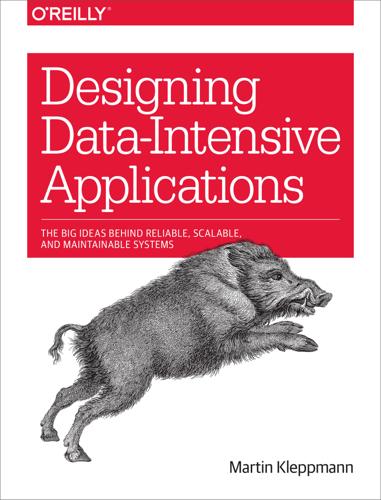
Designing Data-Intensive Applications: The Big Ideas Behind Reliable, Scalable, and Maintainable Systems
by
Martin Kleppmann
Published 16 Mar 2017
The relational model can handle simple cases of many-to-many relationships, but as the connections within your data become more complex, it becomes more natural to start modeling your data as a graph. A graph consists of two kinds of objects: vertices (also known as nodes or entities) and edges (also known as relationships or arcs). Many kinds of data can be modeled as a graph. Typical examples include: Social graphs Vertices are people, and edges indicate which people know each other. The web graph Vertices are web pages, and edges indicate HTML links to other pages. Road or rail networks Vertices are junctions, and edges represent the roads or railway lines between them. Well-known algorithms can operate on these graphs: for example, car navigation systems search for the shortest path between two points in a road network, and PageRank can be used on the web graph to determine the popularity of a web page and thus its ranking in search results.
…
[33] Jeffrey Dean and Sanjay Ghemawat: “MapReduce: Simplified Data Processing on Large Clusters,” at 6th USENIX Symposium on Operating System Design and Implementation (OSDI), December 2004. [34] Craig Kerstiens: “JavaScript in Your Postgres,” blog.heroku.com, June 5, 2013. [35] Nathan Bronson, Zach Amsden, George Cabrera, et al.: “TAO: Facebook’s Distributed Data Store for the Social Graph,” at USENIX Annual Technical Conference (USENIX ATC), June 2013. [36] “Apache TinkerPop3.2.3 Documentation,” tinkerpop.apache.org, October 2016. [37] “The Neo4j Manual v2.0.0,” Neo Technology, 2013. [38] Emil Eifrem: Twitter correspondence, January 3, 2014. [39] David Beckett and Tim Berners-Lee: “Turtle – Terse RDF Triple Language,” W3C Team Submission, March 28, 2011
…
EventSource (browser API), Pushing state changes to clients eventual consistency, Replication, Problems with Replication Lag, Safety and liveness, Consistency Guarantees(see also conflicts) and perpetual inconsistency, Timeliness and Integrity evolvability, Evolvability: Making Change Easy, Encoding and Evolutioncalling services, Data encoding and evolution for RPC graph-structured data, Property Graphs of databases, Schema flexibility in the document model, Dataflow Through Databases-Archival storage, Deriving several views from the same event log, Reprocessing data for application evolution of message-passing, Distributed actor frameworks reprocessing data, Reprocessing data for application evolution, Unifying batch and stream processing schema evolution in Avro, The writer’s schema and the reader’s schema schema evolution in Thrift and Protocol Buffers, Field tags and schema evolution schema-on-read, Schema flexibility in the document model, Encoding and Evolution, The Merits of Schemas exactly-once semantics, Exactly-once message processing, Fault Tolerance, Exactly-once execution of an operationparity with batch processors, Unifying batch and stream processing preservation of integrity, Correctness of dataflow systems exclusive mode (locks), Implementation of two-phase locking eXtended Architecture transactions (see XA transactions) extract-transform-load (see ETL) F FacebookPresto (query engine), The divergence between OLTP databases and data warehouses React, Flux, and Redux (user interface libraries), End-to-end event streams social graphs, Graph-Like Data Models Wormhole (change data capture), Implementing change data capture fact tables, Stars and Snowflakes: Schemas for Analytics failover, Leader failure: Failover, Glossary(see also leader-based replication) in leaderless replication, absence of, Writing to the Database When a Node Is Down leader election, The leader and the lock, Total Order Broadcast, Distributed Transactions and Consensus potential problems, Leader failure: Failover failuresamplification by distributed transactions, Limitations of distributed transactions, Maintaining derived state failure detection, Detecting Faultsautomatic rebalancing causing cascading failures, Operations: Automatic or Manual Rebalancing perfect failure detectors, Three-phase commit timeouts and unbounded delays, Timeouts and Unbounded Delays, Network congestion and queueing using ZooKeeper, Membership and Coordination Services faults versus, Reliability partial failures in distributed systems, Faults and Partial Failures-Cloud Computing and Supercomputing, Summary fan-out (messaging systems), Describing Load, Multiple consumers fault tolerance, Reliability-How Important Is Reliability?
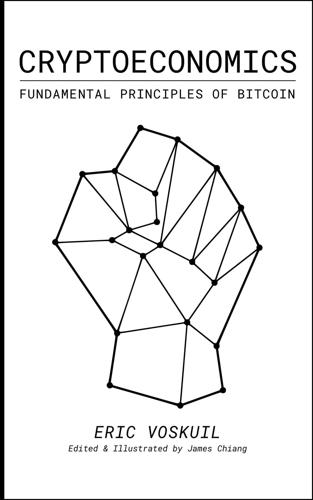
Cryptoeconomics: Fundamental Principles of Bitcoin
by
Eric Voskuil
,
James Chiang
and
Amir Taaki
Published 28 Feb 2020
Social Network Principle In the terminology of Paul Baran’s 1964 paper on distributed networks [202] the importance of topology in network design is the ability of communications to withstand the loss of a certain number of nodes. A centralized (star) network will fail with the loss of one node. A distributed (mesh) network is more resilient. A hybrid of these systems is considered decentralized. As a money Bitcoin forms a social graph. Only a person can decide to accept one money [203] or another in trade . A set of people sharing the same definition for a money is referred to as a consensus . Authority in a monetary system is the power to define the money. Bitcoin is a tool that people can use to defend against the tendency toward authority, in order to preserve their agreement and therefore utility in the money.
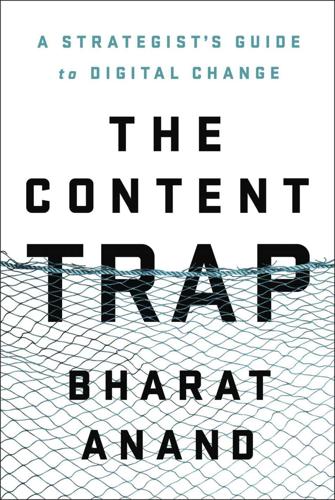
The Content Trap: A Strategist's Guide to Digital Change
by
Bharat Anand
Published 17 Oct 2016
It cross-promoted its games on its IM platform—a user could launch the game directly from her IM screen rather than be directed to a separate site to play. It bundled its services effectively—its chat service could be used within a game, and a gamer could import her avatars. And it transferred the strength of its network effect in one product to others—with the click of a button, a user could import her social graph from QQ into a Tencent game in order to play with her friends. Tencent was doing something many companies that compete in winner-take-all markets struggle with: It successfully created connections across different products—IM, games, microblogs—where each relied on connecting users. In effect, it shifted its strength from just one network to a portfolio of connected networks.
…
So, three sets of predictions about the impact of new features on advertising markets were clear. Targeting, measurement, and interactivity would radically improve Internet ads. Fast-forwarding through commercials would be the bane of TV advertisers and broadcast networks. And one-to-one, real-time targeting based on demographics, social graphs, and behavioral information promised unlimited advertising potential. These predictions all originated with experts; all were backed by data and charts. And all were wrong. THREE PUZZLES ABOUT ADVERTISING Twenty years after the early predictions about online advertising, its promise is still relatively obscure.

Data and Goliath: The Hidden Battles to Collect Your Data and Control Your World
by
Bruce Schneier
Published 2 Mar 2015
Google’s CEO Eric Schmidt admitted: Derek Thompson (1 Oct 2010), “Google’s CEO: ‘The laws are written by lobbyists,’” Atlantic, http://www.theatlantic.com/technology/archive/2010/10/googles-ceo-the-laws-are-written-by-lobbyists/63908. Your tweets tell the world: You can search for the sleep patterns of any Twitter user. Amit Agarwal (2013), “Sleeping Time,” Digital Inspiration, http://sleepingtime.org. Your buddy lists and address books: Two studies of Facebook social graphs show how easy it is to predict these and other personal traits. Carter Jernigan and Behram R. T. Mistree (5 Oct 2009), “Gaydar: Facebook friendships expose sexual orientation,” First Monday 14, http://firstmonday.org/article/view/2611/2302. Michal Kosinski, David Stillwell, and Thore Graepel (11 Mar 2013), “Private traits and attributes are predictable from digital records of human behavior,” Proceedings of the National Academy of Sciences of the United States of America (Early Edition), http://www.pnas.org/content/early/2013/03/06/1218772110.abstract.
…
Michal Kosinski, David Stillwell, and Thore Graepel (11 Mar 2013), “Private traits and attributes are predictable from digital records of human behavior,” Proceedings of the National Academy of Sciences of the United States of America (Early Edition), http://www.pnas.org/content/early/2013/03/06/1218772110.abstract. Your e-mail headers reveal: The MIT Media Lab tool Immersion builds a social graph from your e-mail metadata. MIT Media Lab (2013), “Immersion: A people-centric view of your email life,” https://immersion.media.mit.edu. Metadata can be much more revealing: Brian Lam (19 Jun 2013), “Phew, NSA is just collecting metadata. (You should still worry),” Wired, http://www.wired.com/2013/06/phew-it-was-just-metadata-not-think-again.

Age of Context: Mobile, Sensors, Data and the Future of Privacy
by
Robert Scoble
and
Shel Israel
Published 4 Sep 2013
Instead of you learning to speak in a machine language, Google started to make machines recognize your natural language. This has made all the difference in the world. When Facebook rapidly evolved into the world’s biggest site, it made a series of forward leaps related to searching. First, it came up with the social graph, which examines relationships between people instead of data. It extrapolated relevant data by examining graphical representations rather than strings of text. Next, Facebook created a Graph API (Application Programming Interface) that enabled third-party developers to connect and share data with the Facebook platform using common verbs such as “read,” “listen to,” “like,” “comment on” and so forth.
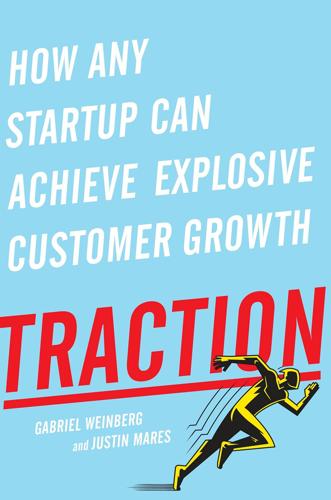
Traction: How Any Startup Can Achieve Explosive Customer Growth
by
Gabriel Weinberg
and
Justin Mares
Published 5 Oct 2015
(He targeted her by her alma mater, zip code, and interest affinities, using a picture of their son to see how long it would take for her to notice. Not very long.) The platform also allows you to reach the larger network of people connected through your fans on Facebook. As Nikhil said: When you buy a Facebook ad, you’re buying more than just a targeted fan; you’re buying the opportunity to access that fan’s social graph. With the proper incentives, fans will share and recommend your brand to their connections. StumbleUpon—With more than 25 million “stumblers,” StumbleUpon has a large potential user base looking for new and engaging content. An interesting feature about this site is that ads don’t surround the content on StumbleUpon—they are part of the content.
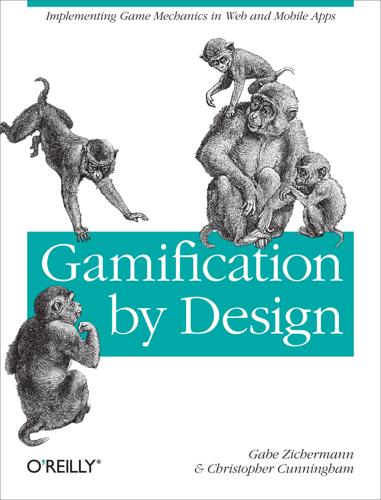
Gamification by Design: Implementing Game Mechanics in Web and Mobile Apps
by
Gabe Zichermann
and
Christopher Cunningham
Published 14 Aug 2011
Even when the number scale is completely meaningless or opaque, the player still feels that four million points is a lot, so it’s probably difficult to attain (unless it’s 4,000,000 Vietnamese Dong, the equivalent of about $200 U.S. dollars at press time—see the sidebar Currency Denominations earlier in this chapter). Leaderboard Types There are two kinds of leaderboards largely used today. The no-disincentive leaderboard The leaderboard of today has seen some radical redesign since the heyday of pinball machines and quarter arcades. In the era of Facebook and the social graph, leaderboards are mostly tools for creating social incentive, rather than disincentive. They accomplish this simply by taking the player and putting him right in the middle. It doesn’t matter where he falls in ranking order—whether he is #81 or #200,000—the player will see himself right in the middle of the leaderboard.
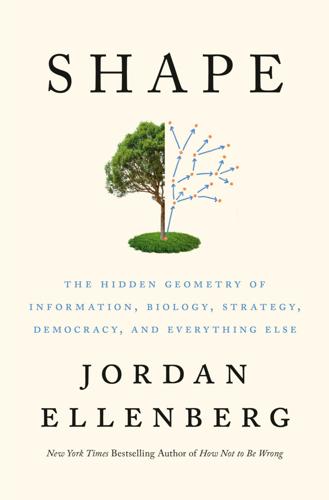
Shape: The Hidden Geometry of Information, Biology, Strategy, Democracy, and Everything Else
by
Jordan Ellenberg
Published 14 May 2021
Facebook is a small world: Information about the Facebook graph is from Lars Backstrom et al., “Four Degrees of Separation,” Proceedings of the 4th Annual ACM Web Science Conference (June 22–24, 2012): 33–42, and Johan Ugander et al., “The Anatomy of the Facebook Social Graph” (preprint, 2011), https://arxiv.org/abs/1111.4503. And getting smaller: Described on the Facebook research blog, research.fb.com/blog/2016/02/three-and-a-half-degrees-of-separation. A large-scale analysis: Ugander et al., “The Anatomy of the Facebook Social Graph.” The so-called “Friendship paradox” was first described in Scott L. Feld, “Why Your Friends Have More Friends Than You Do,” American Journal of Sociology 96, no. 6 (1991): 1464–77.
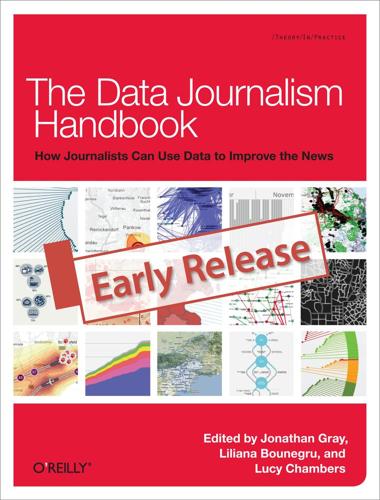
The Data Journalism Handbook
by
Jonathan Gray
,
Lucy Chambers
and
Liliana Bounegru
Published 9 May 2012
The trick of graph visualization in general is to find a proper way to model the network itself. Not all datasets already include relations, and even if they do, it might not be the most interesting aspect to look at. Sometimes it’s up to the journalist to define edges between nodes. A perfect example of this is the U.S. Senate Social Graph, whose edges connect senators that voted the same in more than 65% of the votes. Analyze and interpret what you see Once you have visualized your data, the next step is to learn something from the picture you created. You could ask yourself: What can I see in this image? Is it what I expected?
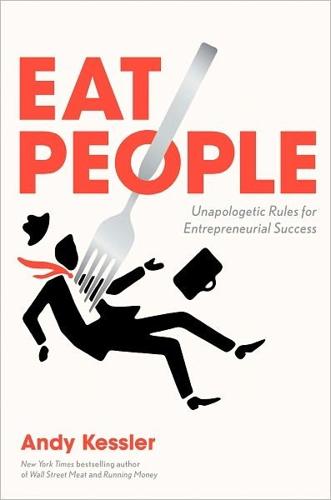
Eat People: And Other Unapologetic Rules for Game-Changing Entrepreneurs
by
Andy Kessler
Published 1 Feb 2011
It just happens slowly enough that it’s more like Chinese water torture than a flood. But how to prepare for all this change? College, when it’s not learning you how to learn, prepares students for the very jobs that Free Radicals are busy getting rid of! A Free Radical had best prepare for a world of networks and mobility and attention mining and social graphs or whatever nom du jour the social commentators come up with, and the best way is to find a set of Servers, and then eat them by rendering them obsolete. RULE #8 Markets Make Better Decisions Than Managers YOU WOULD THINK THAT, AFTER THE CREDIT CRISIS OF 2008, no one would trust markets ever again.

Big Data at Work: Dispelling the Myths, Uncovering the Opportunities
by
Thomas H. Davenport
Published 4 Feb 2014
“We contribute, Chapter_07.indd 160 03/12/13 12:42 PM What You Can Learn from Start-Ups and Online Firms 161 they contribute and the code moves forward,” says David Henke, senior vice president of operations at LinkedIn.2 Another LinkedIn data scientist told me: We are working on some database enhancements to a social graph database. They will be open source when we’re done. There are some IP [intellectual property] considerations, but overall LinkedIn believes in building on the open-source framework since we benefit from it. This lesson could be taken too far, of course. All of the c ompanies I’ve mentioned keep some big data assets to themselves.

Subscribed: Why the Subscription Model Will Be Your Company's Future - and What to Do About It
by
Tien Tzuo
and
Gabe Weisert
Published 4 Jun 2018
GO INTERNATIONAL Companies typically wait too long to go international. It’s a legacy of old thinking. The old way is anchored on geographical and political boundaries. But the world is different now; it’s really based on language. The reason is pretty simple—the language you use to engage with the internet and your social graph dictates the kinds of results you’re going to receive. There are no customs checks when you visit an IP address in Europe. If you’re a British newspaper like the Daily Mail that specializes in celebrity coverage, it shouldn’t be a surprise that 40 percent of your audience comes from the United States.

Bottoms Up and the Devil Laughs
by
Kerry Howley
Published 21 Mar 2023
He can speak for three straight hours making unimpeachably cogent points and never once express doubt or uncertainty, which has the effect of making him sound like a crank who is not so much removed from reality as unhealthily tethered to it. In the days he spent exploring the darkest corners of the NSA’s capabilities, he found that every day the FBI handed over a CD to the NSA. On that CD were one billion American phone records. With those records, the NSA built what journalist Barton Gellman calls a “live, ever-updating social graph of the United States.” The NSA had the capacity to search for anyone and conjure a map of connections. A contact chain. It was more than static metadata, more than a list of links, because it expanded across time; having targeted someone, you could rewind. Yes, today you talked to the pediatric dermatologist with whom you share a political orientation, but now that we’re interested—to whom did you both talk yesterday, and was it the ski instructor newly suspected of selling MDMA to parents at the Montessori school?
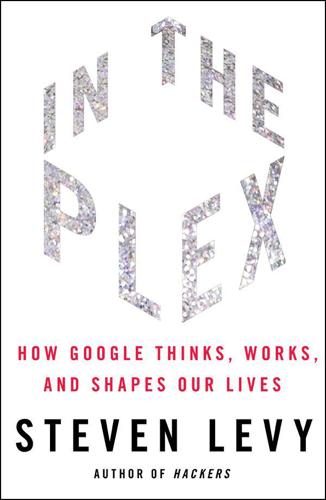
In the Plex: How Google Thinks, Works, and Shapes Our Lives
by
Steven Levy
Published 12 Apr 2011
By then, there were a number of location-based start-ups, all of which owed something to Dodgeball. One of the hottest was called Foursquare. Its cofounder was Dennis Crowley. Google had a built-in disadvantage in the social networking sweepstakes. It was happy to gather information about the intricate web of personal and professional connections known as the “social graph” (a term favored by Facebook’s Mark Zuckerberg) and integrate that data as signals in its search engine. But the basic premise of social networking—that a personal recommendation from a friend was more valuable than all of human wisdom, as represented by Google Search—was viewed with horror at Google.
…
J., 140 Playboy, 153–54, 155 pornography, blocking, 54, 97, 108, 173, 174 Postini, 241 Pregibon, Daryl, 118–19 Premium Sunset, 109, 112–13, 115 privacy: and Book Settlement, 363 and browsers, 204–12, 336–37 and email, 170–78, 211–12, 378 and Google’s policies, 10, 11, 145, 173–75, 333–35, 337–40 and Google Street View, 340–43 and government fishing expeditions, 173 and interest-based ads, 263, 334–36 and security breach, 268 and social networking, 378–79, 383 and surveillance, 343 Privacy International, 176 products: beta versions of, 171 “dogfooding,” 216 Google neglect of, 372, 373–74, 376, 381 in GPS meetings, 6, 135, 171 machine-driven, 207 marketing themselves, 77, 372 speed required in, 186 Project Database (PDB), 164 property law, 6, 360 Python, 18, 37 Qiheng, Hu, 277 Queiroz, Mario, 230 Rainert, Alex, 373, 374 Rajaram, Gokul, 106 Rakowski, Brian, 161 Randall, Stephen, 153 RankDex, 27 Rasmussen, Lars, 379 Red Hat, 78 Reese, Jim, 181–84, 187, 195, 196, 198 Reeves, Scott, 153 Rekhi, Manu, 373 Reyes, George, 70, 148 Richards, Michael, 251 robotics, 246, 351, 385 Romanos, Jack, 356 Rosenberg, Jonathan, 159–60, 281 Rosenstein, Justin, 369 Rosing, Wayne, 44, 55, 82, 155, 158–59, 186, 194, 271 Rubin, Andy, 135, 213–18, 220, 221–22, 226, 227–30, 232 Rubin, Robert, 148 Rubinson, Barry, 20–21 Rubinstein, Jon, 221 Sacca, Chris, 188–94 Salah, George, 84, 128, 129, 132–33, 166 Salinger Group, The, 190–91 Salton, Gerard, 20, 24, 40 Samsung, 214, 217 Samuelson, Pamela, 362, 365 Sandberg, Sheryl, 175, 257 and advertising, 90, 97, 98, 99, 107 and customer support, 231 and Facebook, 259, 370 Sanlu Group, 297–98 Santana, Carlos, 238 Schillace, Sam, 201–3 Schmidt, Eric, 107, 193 and advertising, 93, 95–96, 99, 104, 108, 110, 112, 114, 115, 117, 118, 337 and antitrust issues, 345 and Apple, 218, 220, 236–37 and applications, 207, 240, 242 and Book Search, 350, 351, 364 and China, 267, 277, 279, 283, 288–89, 305, 310–11, 313, 386 and cloud computing, 201 and financial issues, 69–71, 252, 260, 376, 383 and Google culture, 129, 135, 136, 364 and Google motto, 145 and growth, 165, 271 and IPO, 147–48, 152, 154, 155–57 on lawsuits, 328–29 and management, 4, 80–83, 110, 158–60, 165, 166, 242, 254, 255, 273, 386, 387 and Obama, 316–17, 319, 321, 346 and privacy, 175, 178, 383 and public image, 328 and smart phones, 216, 217, 224, 236 and social networking, 372 and taxes, 90 and Yahoo, 344, 345 and YouTube, 248–49, 260, 265 Schrage, Elliot, 285–87 Schroeder, Pat, 361 search: decoding the intent of, 59 failed, 60 freshness in, 42 Google as synonymous with, 40, 41, 42, 381 mobile, 217 organic results of, 85 in people’s brains, 67–68 real-time, 376 sanctity of, 275 statelessness of, 116, 332 verticals, 58 see also web searches search engine optimization (SEO), 55–56 search engines, 19 bigram breakage in, 51 business model for, 34 file systems for, 43–44 and hypertext link, 27, 37 information retrieval via, 27 and licensing fees, 77, 84, 95, 261 name detection in, 50–52 and relevance, 48–49, 52 signals to, 22 ultimate, 35 upgrades of, 49, 61–62 Search Engine Watch, 102 SearchKing, 56 SEC regulations, 149, 150–51, 152, 154, 156 Semel, Terry, 98 Sengupta, Caesar, 210 Seti, 65–67 Shah, Sonal, 321 Shapiro, Carl, 117 Shazeer, Noam, 100–102 Sheff, David, 153 Sherman Antitrust Act, 345 Shriram, Ram, 34, 72, 74, 79 Siao, Qiang, 277 Sidekick, 213, 226 signals, 21–22, 49, 59, 376 Silicon Graphics (SGI), 131–32 Silverstein, Craig, 13, 34, 35, 36, 43, 78, 125, 129, 139 Sina, 278, 288, 302 Singh, Sanjeev, 169–70 Singhal, Amit, 24, 40–41, 48–52, 54, 55, 58 Siroker, Dan, 319–21 skunkworks, 380–81 Skype, 233, 234–36, 322, 325 Slashdot, 167 Slim, Carlos, 166 SMART (Salton’s Magical Retriever of Text), 20 smart phones, 214–16, 217–22 accelerometers on, 226–28 carrier contracts for, 230, 231, 236 customer support for, 230–31, 232 direct to consumer, 230, 232 Nexus One, 230, 231–32 Smith, Adam, 360 Smith, Bradford, 333 Smith, Christopher, 284–86 Smith, Megan, 141, 158, 184, 258, 318, 350, 355–56 social graph, 374 social networking, 369–83 Sogou, 300 Sohu, 278, 300 Sony, 251, 264 Sooner (mobile operating system), 217, 220 Southworth, Lucinda, 254 spam, 53–57, 92, 241 Spector, Alfred, 65, 66–67 speech recognition, 65, 67 spell checking, 48 Spencer, Graham, 20, 28, 201, 375 spiders, 18, 19 Stanford University: and BackRub, 29–30 and Book Search, 357 Brin in, 13–14, 16, 17, 28, 29, 34 computer science program at, 14, 23, 27, 32 Digital Library Project, 16, 17 and Google, 29, 31, 32–33, 34 and MIDAS, 16 Page in, 12–13, 14, 16–17, 28, 29, 34 and Silicon Valley, 27–28 Stanley (robot), 246, 385 Stanton, Katie, 318, 321, 322, 323–25, 327 Stanton, Louis L., 251 State Department, U.S., 324–25 Steremberg, Alan, 18, 29 Stewart, Jon, 384 Stewart, Margaret, 207 Stricker, Gabriel, 186 Sullivan, Danny, 102 Sullivan, Stacy, 134, 140, 141, 143–44, 158–59 Summers, Larry, 90 Sun Microsystems, 28, 70 Swetland, Brian, 226, 228 Taco Town, 377 Tan, Chade-Meng, 135–36 Tang, Diane, 118 Taylor, Bret, 259, 370 Teetzel, Erik, 184, 197 Tele Atlas, 341 Tesla, Nikola, 13, 32, 106 Thompson, Ken, 241 3M, 124 Thrun, Sebastian, 246, 385–86 T-Mobile, 226, 227, 230 Tseng, Erick, 217, 227 Twentieth Century Fox, 249 Twitter, 309, 322, 327, 374–77, 387 Uline, 112 Universal Music Group, 261 Universal Search, 58–60, 294, 357 University of Michigan, 352–54, 357 UNIX, 54, 80 Upson, Linus, 210, 211–12 Upstartle, 201 Urchin Software, 114 users: in A/B tests, 61 data amassed about, 45–48, 59, 84, 144, 173–74, 180, 185, 334–37 feedback from, 65 focus on, 5, 77, 92 increasing numbers of, 72 predictive clues from, 66 and security breach, 268, 269 U.S.

Valley of Genius: The Uncensored History of Silicon Valley (As Told by the Hackers, Founders, and Freaks Who Made It Boom)
by
Adam Fisher
Published 9 Jul 2018
What would this network eventually look like? What could we do with this network if we actually had it?” Sean Parker: The “social graph” is a math concept from graph theory, but it was a way of trying to explain to people who were kind of academic and mathematically inclined that what we were building was not a product so much as it was a network composed of nodes with a lot of information flowing between those nodes. That’s graph theory. Therefore we’re building a social graph. It was never meant to be talked about publicly. It was a way of articulating to somebody with a math background what we were building.

Lean In: Women, Work, and the Will to Lead
by
Sheryl Sandberg
Published 11 Mar 2013
But outside of Facebook, the criticism started to roll in. One of my colleagues from Treasury called to say that “others”—not him, of course—were wondering why I gave more speeches on women’s issues than on Facebook. I had been at the company for two and a half years and given countless speeches on rebuilding marketing around the social graph and exactly one speech on gender. Someone else asked me, “So is this your thing now?” At the time, I didn’t know how to respond. Now I would say yes. I made this my “thing” because we need to disrupt the status quo. Staying quiet and fitting in may have been all the first generations of women who entered corporate America could do; in some cases, it might still be the safest path.

Designing Search: UX Strategies for Ecommerce Success
by
Greg Nudelman
and
Pabini Gabriel-Petit
Published 8 May 2011
Start by providing a large, inviting text-entry box to encourage questioners to write full sentences (like a human being) instead of query strings or Boolean operators, and label the form button with a word such as “Ask.” At the same time, expose open questions to people as a way of inviting them to answer (or route questions to likely, willing answerers based on affinities you derive from the meta-data in your social graph). Figure 14-4: Yahoo! Answers Using Images in Queries One of the most intriguing aspects of visual browsing has to do with the mismatch between images and the text used by both algorithms and people to describe the images. This text-image mismatch highlights the inherent limitation of finding and managing images through text-based queries.

The Snowden Files: The Inside Story of the World's Most Wanted Man
by
Luke Harding
Published 7 Feb 2014
Contact chaining is a process of establishing connections between senders and recipients and their contacts. Done rigorously, it establishes a map of connections between people that doesn’t involve actually listening to their phone calls or reading the contents of their emails. Long before Facebook ever existed, the NSA was toying with what the social network would later unveil as a ‘social graph’. But there was a problem. The Justice Department’s intelligence policy branch determined in 1999 that metadata was covered under FISA’s definition of electronic surveillance. That meant that contact chaining was kosher for non-American communications, but if it ensnared Americans, the NSA would be breaking the law.
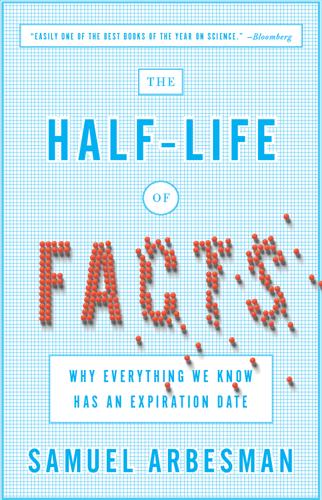
The Half-Life of Facts: Why Everything We Know Has an Expiration Date
by
Samuel Arbesman
Published 31 Aug 2012
New York: Riverhead Books, 2005. 205 This is about the number of soldiers: Christakis, Nicholas A., and James H. Fowler. Connected: The Surprising Power of Our Social Networks and How They Shape Our Lives. New York, New York, USA: Little Brown, 2009. 206 and is about 190, as of 2011: Ugander, Johan et al. “The Anatomy of the Facebook Social Graph”; http://arxiv.org/abs/1111.4503. 206 we increase the number of people we are close to: O’Malley, A. James, et al. “Egocentric Social Network Structure, Health, and Pro-Social Behaviors in a National Panel Study of Americans.” PLoS ONE. 7(5): e36250. 206 Sherlock Holmes argued this very point: Doyle, Arthur Conan.
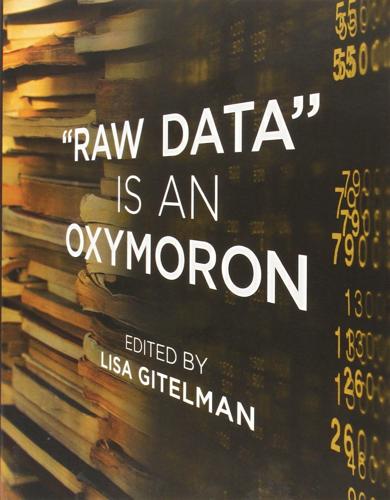
Raw Data Is an Oxymoron
by
Lisa Gitelman
Published 25 Jan 2013
Google’s incorporation of DoubleClick, one of the largest behavioral targeting companies, as well as its partnership with Verizon, would likely be the closest approximation of this single database fantasy, but there is as yet no one entity legally (and technologically) capable of aggregating the entirety of “our” data, which would include not only all governmental and financial records but also our entire search and purchase history, along with our relationship to the social graph. (The value at present is in the aggregating of just a few of these data components.) It is the more general sense that data storage is permanent Dataveillance and Countervailance that leads Viktor Mayer-Schönberger to claim that we have been produced as Borgesian figures, like Funes, who have lost the capacity to forget and thereby lost the capacity to structure a temporal narrative.35 More concretely, the consequence of total storage is that the much-heralded second act of American lives—the mythology of reinvention— cannot be possible if all of the data from the first act is easily accessible.

Working in Public: The Making and Maintenance of Open Source Software
by
Nadia Eghbal
Published 3 Aug 2020
With millions of lines of code freely available today, the focus has shifted from what developers make to who they are.343 Python developer Shauna Gordon-McKeon once posed a hypothetical question to me: “Take a platform you love. Would you rather lose access to all the past content your connections have posted, or lose the connections themselves?”344 Her point was that the value created on these platforms doesn’t lie in the content itself so much as in the underlying social graph. Our relationship to content matters less than our relationships to the people who make it. As a result, we’re starting to treat content not as a private economic good but as the externalization of our social infrastructure. Platforms have helped bring about this shift more quickly. By reducing the costs of production and distribution, they’ve made it easier for creators to function as one-man operations.
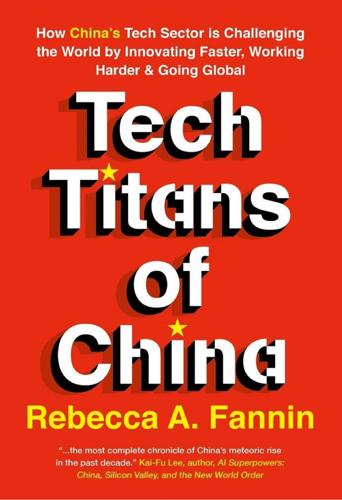
Tech Titans of China: How China's Tech Sector Is Challenging the World by Innovating Faster, Working Harder, and Going Global
by
Rebecca Fannin
Published 2 Sep 2019
Anu Hariharan, a partner with Y Combinator’s Continuity Fund in San Francisco, likens Toutiao to YouTube and technology news aggregator Techmeme in one. She finds the most interesting thing about Toutiao to be how it uses machine-and deep-learning algorithms to serve up personalized, high-quality content without any user inputs, social graphs, or product purchase history to rely on.19 From Sea to Shining Sea ByteDance has been moving up in recent years with content deals and smart acquisitions, fulfilling founder Zhang’s mission of making his startup borderless. That goal post got a lot closer when, in November 2017, ByteDance paid about $900 million to acquire Musical.ly, a social video app based in Shanghai with more than 200 million users worldwide.

The People's Platform: Taking Back Power and Culture in the Digital Age
by
Astra Taylor
Published 4 Mar 2014
For a good discussion of this history, see Evgeny Morozov’s profile of Tim O’Reilly, supporter of the open source movement and founder of O’Reilly Media. Evgeny Morozov, “The Meme Hustler,” Baffler, no. 22 (2013). 17. Openness is the “key to success,” says Jeff Jarvis in What Would Google Do? (New York: HarperBusiness, 2009), 4. 18. Rob Horning, “Social Graph vs. Social Class,” New Inquiry, March 23, 2012. 19. Lawrence Lessig, “The Architecture of Innovation,” Duke Law Journal 51, no. 1783 (2002). Related arguments about the limitations of the framework of left versus right and state versus market are made by Steven Johnson in Future Perfect: The Case for Progress in a Networked Age (New York: Riverhead Books, 2012) and his op-ed “Peer Power, from Potholes to Patents,” Wall Street Journal, September 21, 2012, as well as by Yochai Benkler in The Penguin and the Leviathan: The Triumph of Cooperation over Self-Interest (New York: Crown Business, 2011). 20.
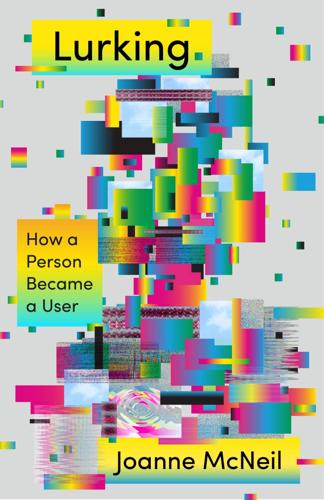
Lurking: How a Person Became a User
by
Joanne McNeil
Published 25 Feb 2020
News Feed dominated a user’s full attention, which meant that Facebook dominated a user’s full attention. As the company explained it, News Feed was a time saver; but to a user, it was a time vacuum. It was a simple idea and yet groundbreaking in its rollout: a daily briefing of all possible life events and gossip of your “social graph,” like a micro-targeted digital experience of This Is Your Life—gossip compiled into a memo. And News Feed decided which of your friends were newsworthy. Facebook developers also wrote algorithms to find logic in communities and the people who are part of them. “Google edgerank,” said one of the Shiny Shiny comments in 2012.

New Dark Age: Technology and the End of the Future
by
James Bridle
Published 18 Jun 2018
Computation does not merely augment, frame, and shape culture; by operating beneath our everyday, casual awareness of it, it actually becomes culture. That which computation sets out to map and model it eventually takes over. Google set out to index all human knowledge and became the source and arbiter of that knowledge: it became what people actually think. Facebook set out to map the connections between people – the social graph – and became the platform for those connections, irrevocably reshaping societal relationships. Like an air control system mistaking a flock of birds for a fleet of bombers, software is unable to distinguish between its model of the world and reality – and, once conditioned, neither are we. This conditioning occurs for two reasons: because the combination of opacity and complexity renders much of the computational process illegible; and because computation itself is perceived to be politically and emotionally neutral.
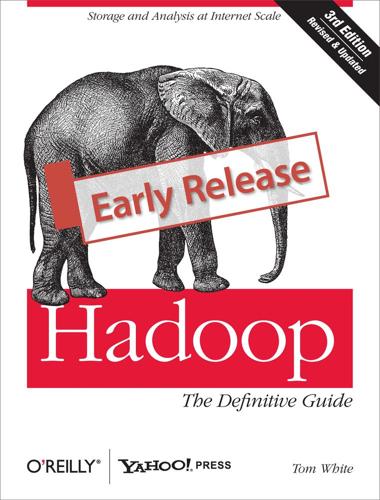
Hadoop: The Definitive Guide
by
Tom White
Published 29 May 2009
Google uses a vastly more refined version of this approach to identify top search hits. Identify celebrities and experts in the Twitter social graph. Users who have many more followers than their “trstrank” would imply are often spammers. Predict a school’s impact on student education, using millions of anonymized exam scores gathered over five years. Measuring Community The most interesting network in the Infochimps collection is a massive crawl of the Twitter social graph. With more than 90 million nodes, 2 billion edges, it is a marvelous instrument for understanding what people talk about and how they relate to each other.

Seven Databases in Seven Weeks: A Guide to Modern Databases and the NoSQL Movement
by
Eric Redmond
,
Jim Wilson
and
Jim R. Wilson
Published 7 May 2012
We sit upon a vast ocean of data, yet until it’s refined into information, it’s unusable (and with a more crude comparison, there’s a lot of money in data these days). The ease of collecting and ultimately storing, mining, and refining the data out there starts with the database you choose. Deciding which database to choose is often more complex than merely considering which genre maps best to a given domain’s data. Though a social graph may seem to clearly function best with a graph database, if you’re Facebook, you simply have far too much data to choose one. You are more likely going to choose a “Big Data” implementation, such as HBase or Riak. This will force your hand into choosing a columnar or key-value store. In other cases, though you may believe a relational database is clearly the best option for bank transactions, it’s worth knowing that Neo4j also supports ACID transactions, expanding your options.

Nothing but Net: 10 Timeless Stock-Picking Lessons From One of Wall Street’s Top Tech Analysts
by
Mark Mahaney
Published 9 Nov 2021
Part of this may be due to the limited targetability of a platform that has always allowed its users to remain anonymous. Twitter could know me as @toptechstockpicker (not my real handle), but Facebook would know me as Mark Mahaney, with an enormous amount of demographic and psychographic detail to work with. Twitter’s early pitch to marketers was that while Facebook had a user’s social graph, Twitter had a user’s interest graph—which bloggers and other Twitter users they were following. But that likely gave marketers only a limited understanding of its users. And Twitter didn’t have the functionality to allow users to follow specific topics (such as venture capital, the Oscars, University of Maryland men’s basketball) until late 2019.

Enshittification: Why Everything Suddenly Got Worse and What to Do About It
by
Cory Doctorow
Published 6 Oct 2025
But has it occurred to you that MySpace is owned by an evil, crapulent, senescent Australian billionaire named Rupert Murdoch, and he spies on you with every hour that God sends? Come to Facebook, where we will never spy on you.2 All we ask of you is that you create a Facebook account and then “articulate your social graph” by telling us which other users you want to connect to you. Then, we will create an automated custom feed, consisting solely of the things that the people you follow have posted for consumption by their followers.3 This is a pretty good deal. You aren’t imagining it: Facebook was fun and useful and valuable, once upon a time.
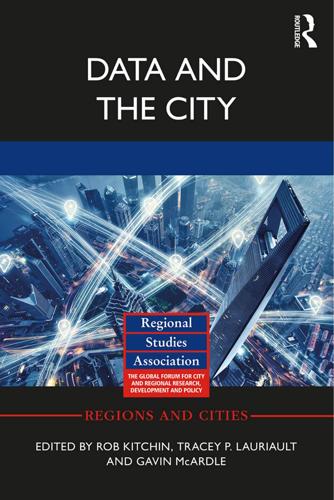
Data and the City
by
Rob Kitchin,Tracey P. Lauriault,Gavin McArdle
Published 2 Aug 2017
Evans himself has shown how devices, such as a smart phone, allow users to ‘dwell’ (find themselves at home) even in so called non-places (Auge 1995) through the connectivity of their devices (Evans 2015). Evans (2015: 6) makes use of Jameson’s concept of ‘social cartography’ to explain how these technologies can be used ‘as a means of understanding and regaining a capacity to act’. The apps, maps, social graphs and network updates on our mobile devices provide us with access to all kinds of urban data, enabling particular ways to act, and this changes our experience of urban space. These studies can be seen in a broader framework of urban studies that has taken an interest in ‘situatedness’ that goes all the way back to (at least) the studies of Goffman in the 1950s (Goffman 1959).

The Launch Pad: Inside Y Combinator, Silicon Valley's Most Exclusive School for Startups
by
Randall Stross
Published 4 Sep 2013
Now, if I were logged into Facebook on this computer, I wouldn’t even have to type—I would just see an ‘Allow’ dialog. Users don’t have to verify their e-mail address or choose a new password or manage all of the issues of having a new account. Gets them on board really quickly. We pull in all the information about them from Facebook. We get their profile data and their social graph and things like that. That helps us manage our fraud a lot better. Assuming we think they’re a real human, we give them two dollars just to start off with.” “What’s the account behind it? How do they get money into their account?” asks Gaudreau. “After you spend the two dollars or three dollars or whatever it is that you get when you first sign up, we prompt you for a credit card.”

Calling Bullshit: The Art of Scepticism in a Data-Driven World
by
Jevin D. West
and
Carl T. Bergstrom
Published 3 Aug 2020
June 12, 2016. https://www.oecd.org/els/family/SF_1_1_Family_size_and_composition.pdf. Stephens-Davidowitz, Seth. Everybody Lies: Big Data, New Data, and What the Internet Can Tell Us About Who We Really Are. New York: HarperCollins, 2017. Ugander, J., B. Karrer, L. Backstrom, and C. Marlow. “The Anatomy of the Facebook Social Graph.” 2011. arXiv: 1111.4503. “U.S. Survey Research: Collecting Survey Data.” Pew Research Center. December 2019. http://www.pewresearch.org/methods/u-s-survey-research/collecting-survey-data/. CHAPTER 7: DATA VISUALIZATION Alden, Lori. “Statistics Can Be Misleading.” Econoclass.com. 2008. http://www.econoclass.com/misleadingstats.html.

A New History of the Future in 100 Objects: A Fiction
by
Adrian Hon
Published 5 Oct 2020
They’re one of the best ways to learn not just about the people, places, and times depicted in the story, but also about the society that the creators lived in and, more often than not, wanted to change and improve (hello, The Good Place!). For particularly long or complex shows, you might find it useful to call up a social graph that displays the character relationships. By the time you get to the second season of Game of Thrones, you’ll be glad you don’t need to keep everything in your head. On that note, it’s a wise idea to ease yourself in with shorter shows such as State of Play or Russian Doll. And remember that TV was the most important social experience of the late twentieth and early twenty-first centuries, so try and get your media circle to watch the same shows together—it’ll be more fun!
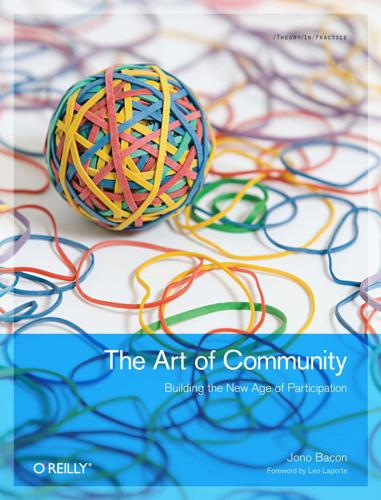
The Art of Community: Building the New Age of Participation
by
Jono Bacon
Published 1 Aug 2009
In this chapter we are going to focus on the substance of how social media can help you grow and build your community. orm-interview-snippet: The Community Case Book I’m not convinced that the current generation of social media sites have helped communities to prosper in the way that earlier technologies like mailing lists or even Usenet did. They create a social graph centered on the individual rather than the community. The development of tools to support communities is still an untapped opportunity. —Tim O’Reilly, on Social Media Read the full interview in Chapter 14. Being Social One of the challenges of talking about technology in books is that technology changes so rapidly that the content can quickly become outdated.
…
The Arab Spring is obviously the canonical example, but #ows (Occupy Wall Street) is happening right now as an example of the interplay between social media and real-world disruption. How do you feel that social media has opened up opportunities for communities to prosper? I’m not convinced that the current generation of social media sites have helped communities to prosper in the way that earlier technologies like mailing lists or even Usenet did. They create a social graph centered on the individual rather than the community. The development of tools to support communities is still an untapped opportunity. Today social media seems to largely involve the exchange of messages. How do you think social media can evolve to further empower collaborative community beyond that of exchanging messages?

Utopia Is Creepy: And Other Provocations
by
Nicholas Carr
Published 5 Sep 2016
There is no intimacy that is not a branding opportunity, no friendship that can’t be monetized, no kiss that doesn’t carry an exchange of value. “Facebook’s ad system,” goes a company press release, “serves Social Ads that combine social actions from your friends—such as a purchase of a product or review of a restaurant—with an advertiser’s message.” What Zuckerberg calls the social graph is, it turns out, a platform for social graft. The Fortune 500 is lining up for the new Facebook service. Coke’s in, big time: The Coca-Cola Company will feature its Sprite brand on a new Facebook Page and will invite users to add an application to their account called “Sprite Sips.” People will be able to create, configure and interact with an animated Sprite Sips character.

The Inevitable: Understanding the 12 Technological Forces That Will Shape Our Future
by
Kevin Kelly
Published 6 Jun 2016
(You can, of course, suppress links—and their connections—if you don’t want to see them, as you might while reading a novel. But novels are a tiny subset of everything that is written.) Over the next three decades, scholars and fans, aided by computational algorithms, will knit together the books of the world into a single networked literature. A reader will be able to generate a social graph of an idea, or a timeline of a concept, or a networked map of influence for any notion in the library. We’ll come to understand that no work, no idea stands alone, but that all good, true, and beautiful things are ecosystems of intertwined parts and related entities, past and present. Even when the central core of a text is authored by a lone author (as is likely for many fictional books), the auxiliary networked references, discussions, critiques, bibliography, and hyperlinks surrounding a book will probably be a collaboration.

Is the Internet Changing the Way You Think?: The Net's Impact on Our Minds and Future
by
John Brockman
Published 18 Jan 2011
We shouldn’t wait for facts; we should be speculating and testing assumptions as news and knowledge unfold. Facts are, of course, valuable, but speculation gets me further and builds better webs in my mind. We’ve moved from being jurors to being investigators, and the audience is onstage. Support thought bombs and the people who throw them into your social graph. It’s messy but essential. Study the reactions on either side of the aisle, because reactions can be more telling than the facts sometimes. That’s how the Internet has changed my thinking: Trust nothing, debate everything. Harmful One-Liners, an Ocean of Facts, and Rewired Minds Haim Harari Physicist, former president, Weizmann Institute of Science; author, A View from the Eye of the Storm: Terror and Reason in the Middle East It is entirely possible that the Internet is changing our way of thinking in more ways than I am willing to admit, but there are three clear changes that are palpable.

The Industries of the Future
by
Alec Ross
Published 2 Feb 2016
Because big data often relies on historical data or at least the status quo, it can easily reproduce discrimination against disadvantaged racial and ethnic minorities. The propensity models used in many algorithms can bake in a bias against someone who lived in the zip code of a low-income neighborhood at any point in his or her life. If an algorithm used by human resources companies queries your social graph and positively weighs candidates with the most existing connections to a workforce, it makes it more difficult to break in in the first place. In effect, these algorithms can hide bias behind a curtain of code. Big data is, by its nature, soulless and uncreative. It nudges us this way and that for reasons we are not meant to understand.

Building Microservices
by
Sam Newman
Published 25 Dec 2014
If one part of our system needs to improve its performance, we might decide to use a different technology stack that is better able to achieve the performance levels required. We may also decide that how we store our data needs to change for different parts of our system. For example, for a social network, we might store our users’ interactions in a graph-oriented database to reflect the highly interconnected nature of a social graph, but perhaps the posts the users make could be stored in a document-oriented data store, giving rise to a heterogeneous architecture like the one shown in Figure 1-1. Figure 1-1. Microservices can allow you to more easily embrace different technologies With microservices, we are also able to adopt technology more quickly, and understand how new advancements may help us.

Custodians of the Internet: Platforms, Content Moderation, and the Hidden Decisions That Shape Social Media
by
Tarleton Gillespie
Published 25 Jun 2018
But most social media companies have discovered that there is more revenue to be had by gathering and mining user data—the content users post, the profiles they build, the search queries they enter, the traces of their activity through the site and beyond, the preferences they indicate along the way, and the “social graph” they build through their participation with others. This data can be used to better target all that advertising, and can be sold to customers and data brokers. This means platforms are oriented toward data collection and retention; toward eliciting more data, and more kinds of data, from its users; and toward finding new ways to draw users to the platform, and to follow users off the platform wherever they may go.66 And now, for the fine print.
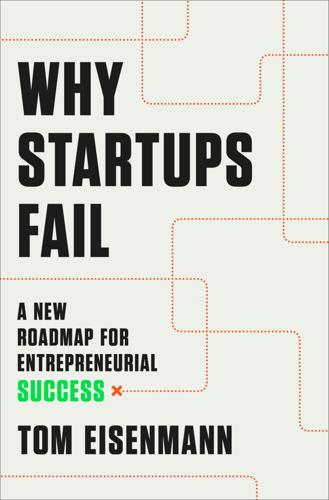
Why Startups Fail: A New Roadmap for Entrepreneurial Success
by
Tom Eisenmann
Published 29 Mar 2021
Doing so would provide the user data needed to fine-tune the matching engine and demonstrate its effectiveness to potential licensees, while also providing a window of opportunity for Triangulate’s entry into the intensely competitive online dating market. Launched two years earlier, Facebook Platform allowed third-party applications and websites to integrate with Facebook’s “social graph” and gain access to a treasure trove of data on Facebook users. No fewer than fifty thousand apps and sites had already generated a combined $500 million in revenue this way—among them, Zoosk, a dating site with forty million members that, since its 2007 founding, had raised $10.5 million in venture capital.
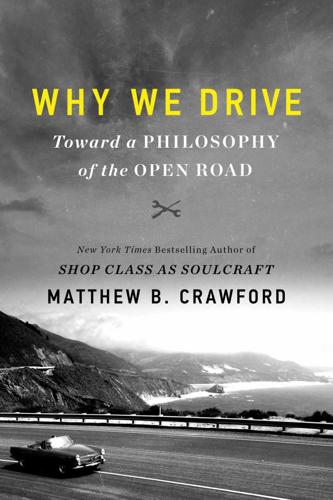
Why We Drive: Toward a Philosophy of the Open Road
by
Matthew B. Crawford
Published 8 Jun 2020
Felten, “No Silver Bullet: De-identification Still Doesn’t Work,” July 9, 2014, Arvind Narayanan—Princeton (personal website), http://randomwalker.info/publications/no-silver-bullet-de-identification.pdf, as cited in Zuboff, Age of Surveillance Capitalism, p. 245. 3.Jennifer Valentino-deVries et al., “Your Apps Know Where You Were Last Night, and They’re Not Keeping It Secret,” New York Times, December 10, 2018, https://www.nytimes.com/interactive/2018/12/10/business/location-data-privacy-apps.html. 4.Zuboff, Age of Surveillance Capitalism, p. 8 (emphases in original). 5.Zuboff, Age of Surveillance Capitalism, pp. 217–218. 6.Zuboff, Age of Surveillance Capitalism, p. 238. 7.Zuboff, Age of Surveillance Capitalism, p. 201. 8.Zuboff, Age of Surveillance Capitalism, p. 240. 9.Monte Zweben, “Life-Pattern Marketing: Intercept People in Their Daily Routines,” SeeSaw Networks, March 2009, as cited in Zuboff, Age of Surveillance Capitalism, p. 243. 10.Dyani Sabin, “The Secret History of ‘Pokémon GO,’ as Told by Creator John Hanke,” Inverse, February 28, 2017, https://www.inverse.com/article/28485-pokemon-go-secret-history-google-maps-ingress-john-hanke-updates. 11.See Natasha Dow Schull, Addiction by Design: Machine Gambling in Las Vegas (Princeton, NJ: Princeton University Press, 2012), and the chapter “Autism as a Design Principle” in my The World Beyond Your Head. 12.Various journalists took it upon themselves to actually read the pages-long privacy policy and data-collection practices of the Pokémon Go! app and discovered that it requires you to grant it access not only to the phone’s camera, but also permission to harvest your contacts and find other accounts on the device, yielding a “detailed location-based social graph.” See Joseph Bernstein, “You Should Probably Check Your Pokémon Go Privacy Settings,” Buzzfeed, July 11, 2016, as cited in Zuboff, Age of Surveillance Capitalism, p. 317. CONCLUDING REMARKS: SOVEREIGNTY ON THE ROAD 1.Further, license plate readers are being installed on those digital road signs you may have noticed going up, creating a database that is shared by government agencies, from which a portrait of one’s movements can be drawn. https://www.fbo.gov/index?
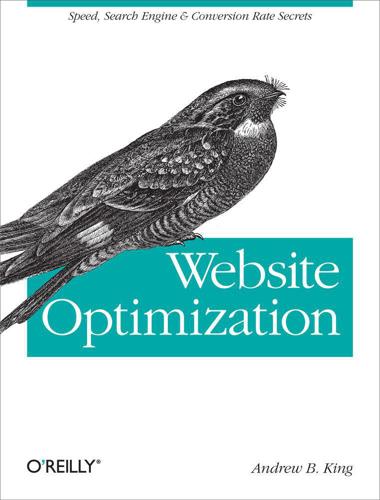
Website Optimization
by
Andrew B. King
Published 15 Mar 2008
Perhaps the simplest form falls under the classification of microformats, [35] which can be as simple as a single attribute value such as nofollow, described in more detail in "Step 10: Build Inbound Links with Online Promotion," earlier in this chapter. Another popular single-attribute microformat is XFN, [36] which allows individual links to be labeled as connections on a social graph, with values such as acquaintance, co-worker, spouse, or even sweetheart. A special value of me indicates that a link points to another resource from the same author, as in the following example: <a href="myothersite.example.com" rel="me">Homepage</a> Some microformats expose more structure, particularly to represent people and events and to review information, all of which can help make sites more presentable in semantic search engines.
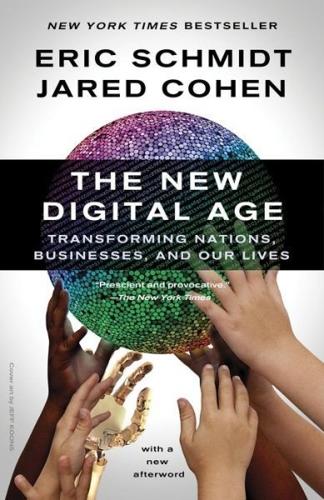
The New Digital Age: Transforming Nations, Businesses, and Our Lives
by
Eric Schmidt
and
Jared Cohen
Published 22 Apr 2013
Housed in an underground bunker in the Secretariat of Public Security compound in Mexico City, this large database integrates intelligence, crime reports and real-time data from surveillance cameras and other inputs from agencies and states across the country. Specialized algorithms can extract patterns, project social graphs and monitor restive areas for violence and crime as well as for natural disasters and other civilian emergencies. The level of surveillance and technological sophistication of Plataforma México that we saw is extraordinary—but then, so are the security challenges that Mexican authorities face.
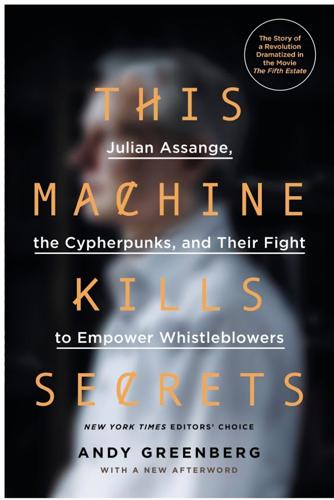
This Machine Kills Secrets: Julian Assange, the Cypherpunks, and Their Fight to Empower Whistleblowers
by
Andy Greenberg
Published 12 Sep 2012
It represented a tempting case study for the kind of analysis he hoped to validate: Although Anons fiercely guarded their true names, they openly congregated and planned their actions in online chat rooms and crowd-sourced documents using pseudonyms. Despite all its proxies and masks, perhaps the entire social graph of Anonymous could be infiltrated and charted. Barr had been planning on giving a talk at the BSides security conference in San Francisco in March, in which he’d use clues built from a Web of online relationships to reveal human flaws in the security of a nuclear facility in Pennsylvania and the army intelligence group INSCOM.

The Optimist: Sam Altman, OpenAI, and the Race to Invent the Future
by
Keach Hagey
Published 19 May 2025
Loopt was charging a few dollars a month for the use of its app on most carriers, which amounted to a few million dollars of revenue, easily eaten into—if not erased—by the enormous infrastructure costs of running location services in the era before Amazon Web Services lowered the cost of servers for startups. “We had questions about whether or not the core Loopt app could ever generate revenue,” McAdoo said. Altman had proposed pivoting to a new app called Loopt Star, built on the Facebook Social graph, that would let users check in, like Foursquare, but give them discounts at businesses, like Groupon. He assigned some of the company’s top engineers to begin working on it, to the dismay of his vice president of engineering, Steve Lemon, who had been hired to professionalize the engineering processes and keep partners like Verizon, Sprint, and AT&T happy.

Blockchain Revolution: How the Technology Behind Bitcoin Is Changing Money, Business, and the World
by
Don Tapscott
and
Alex Tapscott
Published 9 May 2016
For example, spy agencies can’t conduct traffic analysis because they are unable to discern the source or destination of messages. There would also be a nifty mechanism for finding people and feeds that you might care about. In addition, distributed tools aggregate and present interesting new people or information for you to follow or friend, possibly using Facebook’s social graph to help out. Lubin calls this “bootstrapping the decentralized Web using the pillars of the centralized Web.”42 Experience shows that value ultimately wins out in the digital age. The benefits of this distributed model are huge—at least to the users and companies. The huge resources of social media companies notwithstanding, there is no end to the richness and functionality that we can develop in such an open source environment.
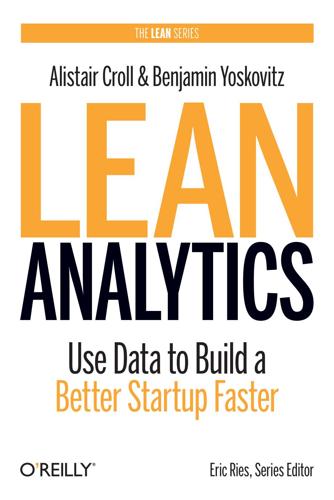
Lean Analytics: Use Data to Build a Better Startup Faster
by
Alistair Croll
and
Benjamin Yoskovitz
Published 1 Mar 2013
Initially, numbers dropped as a result of the new focus, but by 2009, the team grew its community to 4.5 million users—and unlike the users who’d been lost in the change, these were actively engaged. The company went through some ups and downs after that, as Facebook limited applications’ abilities to spread virally. Ultimately, the company moved off Facebook, grew independently, and sold to Sugar Inc. in early 2012. Summary Circle of Friends was a social graph application in the right place at the right time—with the wrong market. By analyzing patterns of engagement and desirable behavior, then finding out what those users had in common, the company found the right market for its offering. Once the company had found its target, it focused—all the way to changing its name.
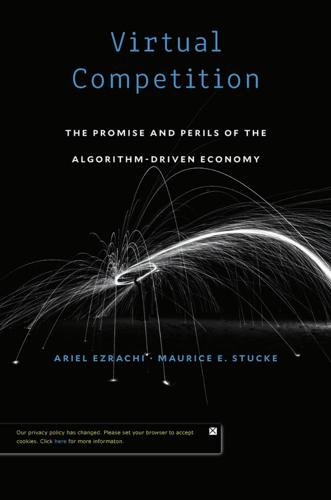
Virtual Competition
by
Ariel Ezrachi
and
Maurice E. Stucke
Published 30 Nov 2016
As the Wall Street Journal reported, “Dozens of startups that had been using Facebook data have shut down, been acquired or overhauled their businesses.”68 One venture capitalist noted the shift from joint extraction to capture: “Companies are open until they have liquidity and users. Then they start to control.”69 He too is “becoming increasingly skeptical that you can build a lasting, stand-alone business based on access to someone else’s social graph.”70 While closing one door, Facebook is opening other doors for companies to target us. For example, Facebook introduced bots for its Facebook Messenger text ing platform. The new technology, backed by powerful algorithms, will make use of user data to better target users with ads and promotions.
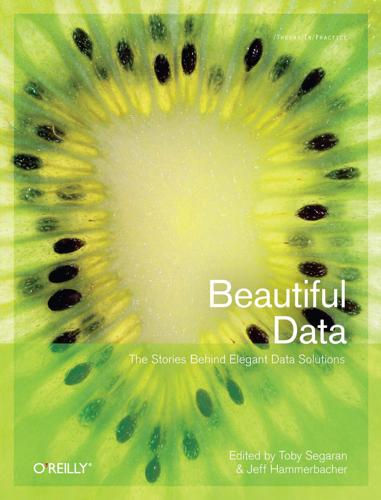
Beautiful Data: The Stories Behind Elegant Data Solutions
by
Toby Segaran
and
Jeff Hammerbacher
Published 1 Jul 2009
Another internal study to understand what motivates content contribution from new users was written up in the paper “Feed Me: Motivating Newcomer Contribution in Social Network Sites,” published at the 2009 CHI conference. A more recent study from the Facebook Data team looks at how information flows through the Facebook social graph; the study is titled “Gesundheit! Modeling Contagion through Facebook News Feed,” and has been accepted for the 2009 ICWSM conference. Every day, evidence is collected, hypotheses are tested, applications are built, and new insights are generated using the shared Information Platform at Facebook.
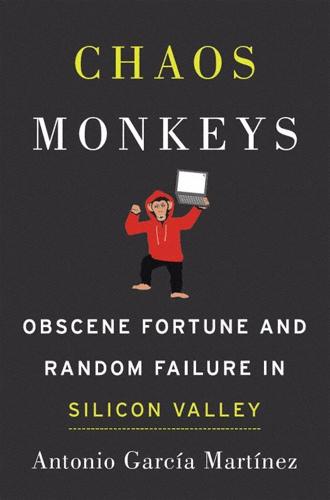
Chaos Monkeys: Obscene Fortune and Random Failure in Silicon Valley
by
Antonio Garcia Martinez
Published 27 Jun 2016
What would have been an important user milestone for any consumer startup became the most minimal unit of account inside Facebook. As a geographic tangent: New Zealand was commonly used as a test bed for new user-facing products. It was perfect due to its English-language usage, its relative isolation in terms of the social graph (i.e., most friend links were internal to the country), and, frankly, its lack of newsworthiness, so any gossip or reporting of new Facebook features ran a low risk of leaking back to the real target markets of the United States and Europe. Aotearoa is the original Maori word for New Zealand, which roughly translated means “Facebook test set.”

Model Thinker: What You Need to Know to Make Data Work for You
by
Scott E. Page
Published 27 Nov 2018
“A Mathematical Model of Bieber Fever: The Most Infectious Disease of Our Time?” In Understanding the Dynamics of Emerging and Re-Emerging Infectious Diseases Using Mathematical Models, ed. Steady Mushayabasa and Claver P. Bhunu. Cham, Switzerland: Springer. Ugander, Johan, Brian Karrer, Lars Backstrom, and Cameron Marlow. 2011. “The Anatomy of the Facebook Social Graph.” arXiv:1111.4503. Updike, John. 1960. “Hub Fans Bid Adieu.” New Yorker, October 22. US Bureau of Labor Statistics. 2013. Consumer Expenditures in 2011. Report 1042, April. Washington, DC: BLS. Uzzi, Brian, Satyam Mukherjee, Michael Stringer, and Ben Jones. 2013. “Atypical Combinations and Scientific Impact.”

Good Economics for Hard Times: Better Answers to Our Biggest Problems
by
Abhijit V. Banerjee
and
Esther Duflo
Published 12 Nov 2019
Shapiro, and Matt Taddy, “Measuring Polarization in High-Dimensional Data: Method and Application to Congressional Speech,” working paper, 2016. 63 Yuriy Gorodnickenko, Tho Pham, and Oleksandr Talavera, “Social Media, Sentiment and Public Opinions: Evidence from #Brexit and #US Election,” National Bureau of Economics Research Working Paper 24631, 2018. 64 Shanto Iyengar, Gaurav Sood, and Yphtach Lelkes, “Affect, Not Ideology: A Social Identity Perspective on Polarization,” Public Opinion Quarterly, 2012, http://doi.org/10.1093/poq/nfs038. 65 “Most Popular Social Networks Worldwide as of January 2019, Ranked by Number of Active Users (in millions),” Statista.com, 2019, accessed April 21, 2019, https://www.statista.com/statistics/272014/global-social-networks-ranked-by-number-of-users/. 66 Maeve Duggan, Nicole B. Ellison, Cliff Lampe, Amanda Lenhart, and Mary Madden,“Social Media Update 2014,” Pew Research Center, 2015, http://www.pewinternet.org/2015/01/09/social-media-update-2014/. 67 Johan Ugander, Brian Karrer, Lars Backstrom, and Cameron Marlow, “The Anatomy of the Facebook Social Graph,” Cornell University, 2011, https://arxiv.org/abs/1111.4503v1. 68 Yosh Halberstam and Brian Knight “Homophily, Group Size, and the Diffusion of Political Information in Social Networks: Evidence from Twitter,” Journal of Public Economics, 143 (November 2016), 73–88, https://doi.org/10.1016/j.jpubeco.2016.08.011. 69 David Brock, The Republican Noise Machine (New York: Crown, 2004). 70 David Yanagizawa-Drott, “Propaganda and Conflict: Evidence from the Rwandan Genocide,” Quarterly Journal of Economics 129, no. 4 (2014), https://doi.org/10.1093/qje/qju020. 71 Matthew Gentzkow and Jesse Shapiro, “Ideological Segregation Online and Offline,” Quarterly Journal of Economics 126, no. 4 (2011), http://doi.org/10.1093/qje/qjr044. 72 Levi Boxell, Matthew Gentzkow, and Jesse Shapiro, “Greater Internet Use Is Not Associated with Faster Growth in Political Polarization among US Demographic Groups,” Proceedings of the National Academy of Sciences of the United States of America, 2017, https://doi.org/10.1073/pnas.1706588114. 73 Gregory J.

Beautiful Architecture: Leading Thinkers Reveal the Hidden Beauty in Software Design
by
Diomidis Spinellis
and
Georgios Gousios
Published 30 Dec 2008
At the same time, not all of the internal data supporting the social platform can be made available to these external stacks. The platform creator needs to solve each of these problems, which we take in turn. product problem: For social applications to gain compelling critical mass, users on the supporting social graph must be made aware of other users’ interactions with these applications. This suggests deeper integration of the application into the social site. This problem has existed since the dawn of software: the difficulty of getting our data, product, or system out into general use. The lack of users becomes a particularly notable difficulty in the space of Web 2.0 because without users to consume and (especially) generate our content, how useful can our system ever become?

MacroWikinomics: Rebooting Business and the World
by
Don Tapscott
and
Anthony D. Williams
Published 28 Sep 2010
“If you had a good ride with someone you can add them to your network and the next time you need a ride their profile is searched first.” The network extends to two degrees to increase the chances of a match. A host of other start-ups are also exploring the space of “social commuting” by developing communities around ridesharing. Some, such as GoLoco or Zimride, rely on the social graph to create groups of friends who carpool. Others such as PickupPal or Carticipate use geopositioning—either mobile or computer based—to match people departing from the same location. One such start-up called Wikit proposes a form of transportation marketplace, where drivers could advertise their daily routes using their incar GPS device and would-be passengers could publish their current location, desired destinations, and the amount they are willing to pay to get there, from the convenience of their GPS-enabled phone.

Superintelligence: Paths, Dangers, Strategies
by
Nick Bostrom
Published 3 Jun 2014
Such individuals usually leave visible trails. They may have published academic papers, presented at conferences, posted on Internet forums, or earned degrees from leading computer science departments. They may also have had communications with other AI researchers, allowing them to be identified by mapping the social graph. Projects designed from the outset to be secret could be more difficult to detect. An ordinary software development project could serve as a front.26 Only careful analysis of the code being produced would reveal the true nature of what the project was trying to accomplish. Such analysis would require a lot of (highly skilled) manpower, whence only a small number of suspect projects could be scrutinized at this level.

API Design Patterns
by
Jj Geewax
Published 19 Jul 2021
Generally, we can put most interfaces into two different categories: those that your users can see and interact with (in software usually called the frontend) and those that they can’t (usually called the backend). For example, we can easily see the graphical user interface for Facebook when we open a browser; however, we don’t have the ability to see how Facebook stores our social graph and other data. To use more formal terms for this aspect of visibility, we can say that the frontend (the part that all users see and interact with) is usually considered public and the backend (only visible to a smaller internal group) is considered private. This distinction is important because it partly determines our ability to make changes to different kinds of interfaces, particularly rigid ones like APIs.

Future Crimes: Everything Is Connected, Everyone Is Vulnerable and What We Can Do About It
by
Marc Goodman
Published 24 Feb 2015
Sexual orientation, relationship status, schools attended, family tree, lists of friends, age, gender, e-mail addresses, place of birth, news interests, work history, catalogs of favorite things, religion, political affiliation, purchases, photographs, and videos—Facebook is a marketer’s dream. Advertisers know every last intimate detail about a Facebook user’s life and can thus market to him or her with extreme precision based upon the social graph Facebook has generated. Moreover, Facebook created a variety of innovations that allow it to track users across the entirety of the Web, including via its omnipresent Like button. You’ve been trained to click on the cute little blue thumbs-up button to express your support for a particular idea, status update, or photograph; after all, it’s the polite thing to do.

Free Speech: Ten Principles for a Connected World
by
Timothy Garton Ash
Published 23 May 2016
Peter Swire, a member of the panel charged by President Obama with preparing what became The NSA Report, argues that the early twenty-first century is a ‘golden age of surveillance’ for security services. He ascribes this to three technological developments in particular: the minutely detailed location data provided by mobile phones, the ‘social graph’ of contacts that we all produce, even if we are not active on social media, and the array of ‘big data’ that has created digital dossiers on us all.16 We should add to Swire’s list of technologies the phenomenon of P2, since private companies actually collect most of the information into which states tap, licitly or illicitly.

The Code: Silicon Valley and the Remaking of America
by
Margaret O'Mara
Published 8 Jul 2019
“There is so much accidental tourism in great things in life,” Palihapitiya later reflected, and he had hopped on the tour bus at exactly the right time.24 In 2007, Facebook opened up its network to third-party apps, bringing in games and quizzes and other content to its newsfeed, and allowing developers to tap into the treasure trove of knowledge about users’ connections and likes that Facebook called the “social graph.” In 2010, Facebook announced “Open Graph,” which connected a user’s profile and network to the other places she traveled online. It wasn’t just a social network atop the Web anymore. Facebook had remade the Web itself into something, as Zuckerberg put it, “more social, more personalized, and more semantically aware.”

Tools of Titans: The Tactics, Routines, and Habits of Billionaires, Icons, and World-Class Performers
by
Timothy Ferriss
Published 6 Dec 2016
[TF: Twitter also used a “Top 100” most-followed list early on to pour gasoline on competition.] Syndication of content. Emotional reaction: Users are beginning to use the nomenclature “RT” to indicate a “retweet” (this was common practice before the official retweet feature was developed). This ad hoc feature allows users to syndicate messages beyond their social graph, giving a user’s message increased visibility. The real-time nature of Twitter allows news stories to break faster than traditional media (even at the time, my startup, Digg). In allowing myself to feel these features through the eyes of the users, I can get a sense of the excitement around them